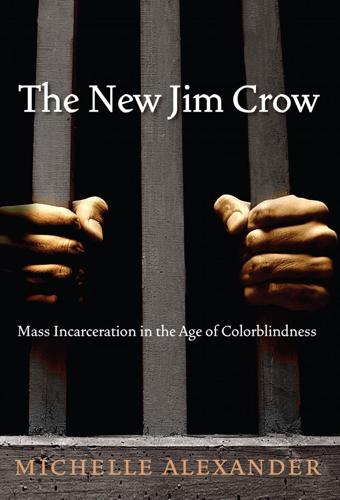
The New Jim Crow: Mass Incarceration in the Age of Colorblindness
by
Michelle Alexander
Published 24 Nov 2011
But if the movement that emerges to end mass incarceration does not meaningfully address the racial divisions and resentments that gave rise to mass incarceration, and if it fails to cultivate an ethic of genuine care, compassion, and concern for every human being—of every class, race, and nationality—within our nation’s borders, including poor whites, who are often pitted against poor people of color, the collapse of mass incarceration will not mean the death of racial caste in America. Inevitably a new system of racialized social control will emerge—one that we cannot foresee, just as the current system of mass incarceration was not predicted by anyone thirty years ago.
…
The federal court system has effectively immunized the current system from challenges on the grounds of racial bias, much as earlier systems of control were protected and endorsed by the U.S. Supreme Court. The parallels do not end there, however. Mass incarceration, like Jim Crow, helps to define the meaning and significance of race in America. Indeed, the stigma of criminality functions in much the same way that the stigma of race once did. It justifies a legal, social, and economic boundary between “us” and “them.” Chapter 5 also explores some of the differences among slavery, Jim Crow, and mass incarceration, most significantly the fact that mass incarceration is designed to warehouse a population deemed disposable—unnecessary to the functioning of the new global economy—while earlier systems of control were designed to exploit and control black labor.
…
If the movement that emerges to challenge mass incarceration fails to confront squarely the critical role of race in the basic structure of our society, and if it fails to cultivate an ethic of genuine care, compassion, and concern for every human being—of every class, race, and nationality—within our nation’s borders (including poor whites, who are often pitted against poor people of color), the collapse of mass incarceration will not mean the death of racial caste in America. Inevitably a new system of racialized social control will emerge—one that we cannot foresee, just as the current system of mass incarceration was not predicted by anyone thirty years ago.
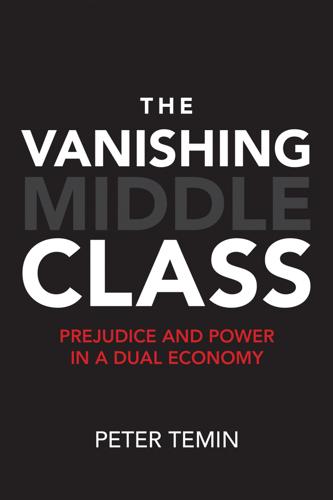
The Vanishing Middle Class: Prejudice and Power in a Dual Economy
by
Peter Temin
Published 17 Mar 2017
Bruce Western concluded from a careful analysis of the causes of mass incarceration that “law-and-order politics grew out of reaction to the gains of the civil rights movement and anxieties about rising crime rates among white voters.” Incarceration grew fastest in those states where jobless rates were highest. And while political parties were hardly identical, their actions were not so different that changing the results of some elections would have changed the outcome of mass incarceration very much.7 The costs of mass incarceration are not confined to the black community. It takes resources to process and house so many prisoners.
…
Teamwork is a form of social capital—which is the key to preschool education for low-wage communities.34 Good education, improving both human and social capital, is a tall order for the low-wage sector, and it goes against the grain of politics in a dual economy. The threat of mass incarceration hangs over black and Latino communities, and the presence of hostile militarized police makes investments in social capital even harder. Far more resources need to be allocated to urban education to make progress, but none will be forthcoming soon. Instead, poor education will keep black and brown communities down, providing more opportunities for mass incarceration. And mass incarceration will contain the people operating without social capital in prison. The money that should go to schools will go to prisons instead.
…
To eliminate this pattern, we need to work on several fronts at the same time. We need to end mass incarceration and differential rates of arrests and convictions of black men by local and state police and judges. We need also to improve education for the children of felons and allow freed felons to rejoin the workforce. And we need to rethink our urban policies to pursue the integrated housing that has so far eluded us. The first two recommendations are two sides of the same coin. American education cannot be universal until mass incarceration is abandoned. And mass incarceration will not be an inevitable result of growing up in a poor neighborhood until urban public education equals the quality of suburban schools.
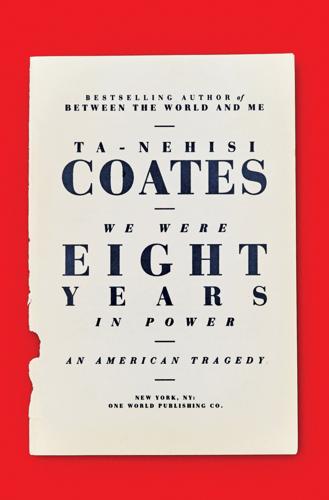
We Were Eight Years in Power: An American Tragedy
by
Ta-Nehisi Coates
Published 2 Oct 2017
Michelle Alexander has taken some criticism for asserting, in her book The New Jim Crow, the connections between slavery, Jim Crow, and mass incarceration. Honestly, I was one of the skeptics. But having finished this research, I really have to applaud Alexander’s attempt to connect mass incarceration with American history. I don’t totally agree with the book (I think linking crime and black struggle is even older than she does, for instance), but I think The New Jim Crow pursues the right line of questioning. I don’t think mass incarceration happens without the rise in crime. But there are all kinds of ways one can respond to a crime surge. Mass incarceration is appropriate only if you already believe that certain people weren’t really fit for freedom in the first place
…
The American population most discriminated against is also its most incarcerated—and the incarceration of so many African Americans, the mark of criminality, justifies everything they endure after. Mass incarceration is, ultimately, a problem of troublesome entanglements. To war seriously against the disparity in unfreedom requires a war against a disparity in resources. And to war against a disparity in resources is to confront a history in which both the plunder and the mass incarceration of blacks are accepted commonplaces. Our current debate over criminal-justice reform pretends that it is possible to disentangle ourselves without significantly disturbing the other aspects of our lives, that one can extract the thread of mass incarceration from the larger tapestry of racist American policy.
…
— BETWEEN THE WORLD AND ME OBSCURED another piece that, if not born from chasing Baldwin, was still important to me. The Atlantic prided itself on tackling the “big” issues of the day, and mass incarceration was, and is, perhaps the preeminent moral domestic issue of our time. By then I had earned enough trust from my editors that I could declare my interest and go. For much of the time I was finishing Between the World and Me, I was reporting another story that sought to understand the specific ways in which mass incarceration had hurt black families. I was excited about this story because I believed that “family” had been ceded to moral scolds who cared more about shaming people than actually helping families.
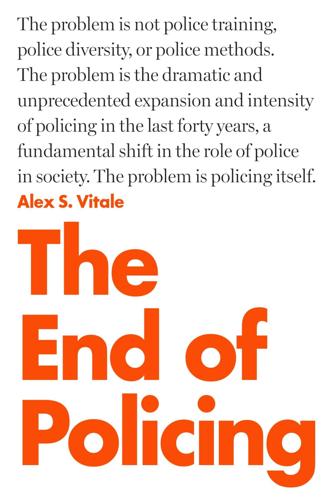
The End of Policing
by
Alex S. Vitale
Published 9 Oct 2017
Unfortunately, and unsurprisingly, rather than reducing the burden of racialized policing, this new professionalization movement merely enhanced police power and led directly to the development of SWAT teams and mass incarceration. Policing Today The past few decades have seen a dramatic expansion in the scope and intensity of police activity. More police than ever before are engaged in more enforcement of more laws, resulting in astronomical levels of incarceration, economic exploitation, and abuse. This expansion mirrors the rise of mass incarceration. It began with the War on Crime rhetoric of the 1960s and continued to develop and intensify until today, with support from both political parties.
…
As Michelle Alexander has put it, We need an effective system of crime prevention and control in our communities, but that is not what the current system is. This system is better designed to create crime, and a perpetual class of people labeled criminals … Saying mass incarceration is an abysmal failure makes sense, though only if one assumes that the criminal justice system is designed to prevent and control crime. But if mass incarceration is understood as a system of social control—specifically, racial control—then the system is a fantastic success.43 The most damning example of this is the War on Drugs, in which millions of mostly black and brown people have been ground through the criminal justice system, their lives destroyed and their communities destabilized, without reduction in the use or availability of drugs.
…
Conclusion 1Northern California Patch, “Public Q&A Meeting Set This Evening to Discuss New Santa Clara Co. Jail,” September 22, 2016. 2Judith Greene et al., Ending Mass Incarceration: Charting a New Justice Re-Investment, Justice Strategies, 2013. 3“Agenda to Build Black Futures,” Black Youth Project 100, agendatobuildblackfutures.org. 4“Platform,” The Movement for Black Lives, policy.m461.org. This eBook is licensed to Edward Betts, edward@4angle.com on 06/08/2020 Further Reading Alexander, Michelle. The New Jim Crow: Mass Incarceration in the Age of Colorblindness. New York: The New Press, 2013. Apuzzo, Matt and Adam Goldman. Enemies Within: Inside the NYPD’s Secret Spying Unit and bin Laden’s Final Plot Against America.
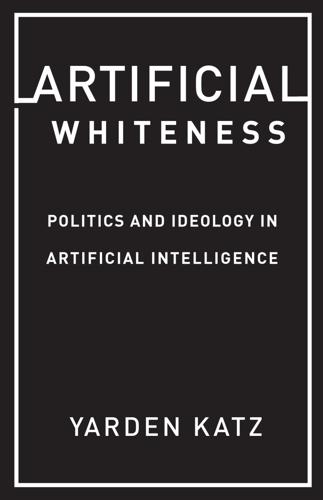
Artificial Whiteness
by
Yarden Katz
Their work shows how AI can be adapted to changing social conditions while still serving the aims we encountered earlier. This chapter examines AI’s adaptation through discussions of mass incarceration in the United States. Mass incarceration is a system predicated on white supremacy, shaped by global capital and the imperial aims of the state—the nexus of the agendas AI has served. Yet through years of activist struggles, the discourse on this system has shifted. Mass incarceration can thus illuminate the commitments of critical AI experts, the limitations of their critique, and the adaptability of AI as a technology of power. As historian Robin D.
…
Kelley has argued, social struggles can “generate new knowledge, new theories, new questions,” and the “most radical ideas often grow out of a concrete intellectual engagement with the problems of aggrieved populations confronting systems of oppression.”2 Activists resisting mass incarceration continually produce such knowledge, and in recent decades they have had to confront the links between computing and incarceration. There has been the emergence of “predictive policing,” which is presented as a data-driven way to keep communities safe, as well the rise of so-called algorithmic sentencing, which according to the New York Times is “seen as a way to dispense justice in a more efficient way that relies more on numerical evidence than personal judgments.”3 All this made computing a major issue in the struggle against mass incarceration. When activists examine the roles of computing in mass incarceration, as we will see in this chapter, their analyses grow outward.
…
They pen pieces for the largest media outlets; their reports are featured in venues like the Wall Street Journal; they participate in exclusive gatherings of CEOs and political elites. The community organizers considered in this chapter, by contrast, do not swim in these circles—they are oppressed by them. The struggles over mass incarceration bring out these distinct epistemologies and commitments. I examine these conflicting epistemologies and commitments by comparing how activists and critical AI experts analyze two facets of mass incarceration: the deportation of migrants and predictive policing. ACTIVISTS TACKLE INCARCERATION AND COMPUTING Social movements have scrutinized the U.S. carceral state for years, including its brutal treatment of migrants.

The Rise and Fall of the Neoliberal Order: America and the World in the Free Market Era
by
Gary Gerstle
Published 14 Oct 2022
Nor were many members of the Democratic or Republican parties, nor the legions of young urban professionals—increasingly known (and mocked) as “Yuppies”—flocking to big cities to enjoy economic opportunity and cosmopolitan culture.104 Across the exuberant neoliberal 1990s, the mass incarceration of America’s young black men commanded remarkably little attention. Nevertheless, the scale of mass incarceration introduced a stress point into the neoliberal order. All political orders have contradictions built into them, all possess vulnerabilities that need to be managed. Neoliberals “managed” the mass incarceration problem across the 1990s. But managing a contradiction is not the same as resolving it. How many people could be excluded from a life of market freedom before the celebration of that market freedom would come to be tarnished, and perhaps repudiated?
…
(New York: Oxford University Press, 2005), 342–379. 49.On the rise of the carceral state, see Ruth Wilson Gilmore, Golden Gulag: Prisons, Surplus, Crisis, and Opposition in Globalizing California (Berkeley: University of California Press, 2007); Heather Thompson, “Why Mass Incarceration Matters: Rethinking Crisis, Decline, and Transformation in Postwar American History,” Journal of American History 97 (December 2010), 703–734; Heather Thompson, Blood in the Water: The Attica Prison Uprising of 1971 and Its Legacy (New York: Pantheon Books, 2016); Michelle Alexander, The New Jim Crow: Mass Incarceration in the Age of Colorblindness (New York: New Press, 2010); Robert Perkinson, Texas Tough: The Rise of America’s Prison Empire (New York: Henry Holt, 2010); Marie Gottschalk, The Prison and the Gallows: The Politics of Mass Incarceration in America (New York: Cambridge University Press, 2006); Marie Gottschalk, Caught: The Prison State and the Lockdown of American Politics (Princeton, NJ: Princeton University Press, 2015); Elizabeth Hinton, From the War on Poverty to the War on Crime: The Making of Mass Incarceration in America (Cambridge, MA: Harvard University Press, 2016); Hinton, America on Fire; Julilly Kohler-Hausmann, Getting Tough: Welfare and Imprisonment in 1970s America (Princeton, NJ: Princeton University Press, 2017); Robert T.
…
As his presidency became associated with market freedom on the one hand, it encouraged a revolt against civil rights advances on the other. A disturbing discourse arose in the 1980s depicting poor blacks as part of an “underclass” that was neither capable nor deserving of participation in the market economy that Reagan was so intent on creating. These were the years in which a program of mass incarceration took shape, one intent on removing hundreds of thousands and then millions of individuals, disproportionately minority, from ordinary economic activity and regular processes of market exchange. Successful experiments in freedom, the apostles of Reaganism seemed to be suggesting, depended on the denial of liberty to those unable (allegedly) to handle its privileges and responsibilities.
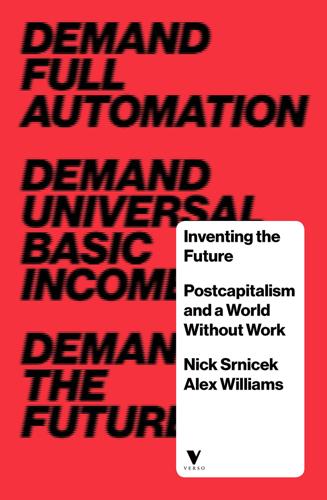
Inventing the Future: Postcapitalism and a World Without Work
by
Nick Srnicek
and
Alex Williams
Published 1 Oct 2015
Whether ‘foreign hordes’ threatening the sanctity of the European border, or immigrant textile workers in Thailand being subject to hyper-exploitation and abuse, racial hierarchies are an essential component of the control of surplus populations.144 When the co-optation of the surplus into a disciplined excess workforce has failed, the state can always resort to simply locking up, excluding and brutalising large sections of the surplus population. Across the world, mass incarceration has been increasing as the size of prison populations rise in both absolute and relative terms.145 Moreover, there is a significant racial component to this – most notably in the mass incarceration of the US black population, but also of Muslims in much of Europe, Aboriginals in Canada, and the detention and deportation of foreign migrants around the world.146 These systems of mass incarceration must be understood to extend beyond prisons, as they encompass an entire network of laws, courts, policies, habits and rules that work to subjugate a group of people.147 Mass incarceration is a system of social control aimed primarily at surplus populations rather than at crime.
…
For instance, middle-class and upper-class black populations are largely left alone,151 and the vast majority of the prison population consists of the ‘working or workless poor’.152 Likewise, the disparities in incarceration between races are outpaced by the disparities in terms of class,153 and the rise of mass black incarceration coincides with the decline in employment for that same population.154 In fact, the racial nature of mass incarceration in America stems ‘exclusively’ from the wildly disproportionate locking up of lower-class black populations.155 Mass incarceration has therefore become a means to manage and control this surplus that has been excluded from the labour market and left in poverty. Spatially concentrated in inner-city ghettos, these groups became an easy target of state control.
…
Ruth Wilson Gilmore, ‘Globalisation and US Prison Growth: From Military Keynesianism to Post-Keynesian Militarism’, Race & Class 40: 2–3 (1998–99), p. 172. 153.Wacquant, ‘Class, Race and Hyperincarceration’, p. 44. 154.Derek Neal and Armin Rick, The Prison Boom and the Lack of Black Progress After Smith and Welch, Working Paper, National Bureau of Economic Research, 2014, at nber.org, p. 2. 155.Wacquant, ‘Class, Race and Hyperincarceration’, p. 43. 156.Wacquant, ‘From Slavery to Mass Incarceration: Rethinking the “Race” Question in America’, New Left Review II/13 (January–February 2002), p. 42. 157.Ibid., p. 53; Alexander, New Jim Crow, p. 219. 158.Wacquant, ‘From Slavery to Mass Incarceration’, pp. 57–8; Rocamadur, ‘The Feral Underclass Hits the Streets: On the English Riots and Other Ordeals’, Sic 2 (2014), at communisation.net, p. 104 n. 10. 159.Jeremy Travis, Bruce Western and Steve Redburn, The Growth of Incarceration in the United States: Exploring Causes and Consequences (Washington, DC: National Academies Press, 2014), p. 258; Neal and Rick, Prison Boom and the Lack of Black Progress, p. 34. 160.The mechanics of getting unions and social movements to adapt to new goals must necessarily be worked out in practice and in the context of local conditions.

Listen, Liberal: Or, What Ever Happened to the Party of the People?
by
Thomas Frank
Published 15 Mar 2016
* According to a 2014 study of the age of mass incarceration, big increases in sentence length have “no material deterrent effect” on crime and do not reduce the crime rate. See The Growth of Incarceration in the United States: Exploring Causes and Consequences, a study by the National Research Council of the National Academies, 2014, p 140. Additionally, the violent-crime rate peaked in 1991 and was already on its way down by 1994. * A Black Lives Matter activist, confronting Hillary Clinton about her husband’s crime policies in August of 2015, used the unfortunate words “unintended consequences” to describe mass incarceration. In fact, it was widely known at the time that the consequence of the crack/cocaine sentencing disparity was the mass incarceration of black drug users.
…
Now we remember that it was Bill Clinton’s administration that deregulated derivatives, deregulated telecom, and put our country’s only strong banking laws in the grave. He’s the one who rammed the North American Free Trade Agreement (NAFTA) through Congress and who taught the world that the way you respond to a recession is by paying off the federal deficit. Mass incarceration and the repeal of welfare, two of Clinton’s other major achievements, are the pillars of the disciplinary state that has made life so miserable for Americans in the lower reaches of society. He would have put a huge dent in Social Security, too, had the Monica Lewinsky sex scandal not stopped him.
…
Those who do acknowledge Clinton’s part in the Big Clampdown either depict it as a great success in the fight against crime—which it was not*—or else describe it in superficial Washington terms: He got a great big law passed through Congress, thus proving that he could be an effective bipartisan leader. Besides, in rhetorical terms, Bill Clinton has always been a steadfast opponent of mass incarceration. In 1991, he said he thought it was awful that “we are now the number one nation in the world in the percentage of people we put in prison.” In 1995, two weeks before he signed the crack/cocaine law, he declared that blacks are right to think something is terribly wrong … when there are more African American men in our correction system than in our colleges; when almost one in three African American men in their twenties are either in jail, on parole or otherwise under the supervision of the criminal system.
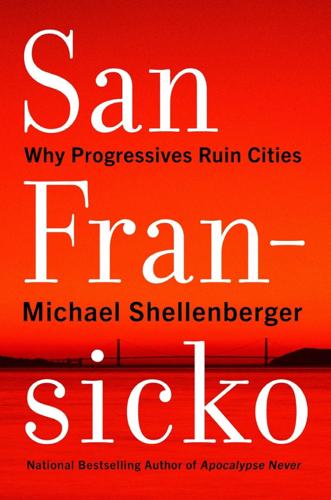
San Fransicko: Why Progressives Ruin Cities
by
Michael Shellenberger
Published 11 Oct 2021
World Prison Brief, “United States of America,” Institute for Crime & Justice Policy Research, accessed December 12, 2020, www.prisonstudies.org/country/united-states-america. 2. John Pfaff, Locked In: The True Causes of Mass Incarceration—and How to Achieve Real Reform (New York: Basic Books, 2017), 2. 3. Ibid., 150. 4. Marc Mauer, Race to Incarcerate (New York: New Press, 2006), 33, cited in Michelle Alexander, The New Jim Crow: Mass Incarceration in the Age of Colorblindness (New York: New Press, 2010), 6. 5. Pfaff, Locked In, 42. 6. Alexander, The New Jim Crow, 101. 7. Bureau of Justice Statistics, Federal Justice Statistics Program, 2019 (preliminary); National Corrections Reporting Program, 2018; National Prisoner Statistics, 2019; and Survey of Prison Inmates, 2016. 8.
…
“If we released everyone in prison in 2013 whose top charge was a drug offense,” notes criminologist John Pfaff, “the white percentage would rise by one point (from 35 to 36 percent), the black percentage would fall by one point (from 38 to 37 percent), and the Hispanic percentage wouldn’t change.” While racial disparity may explain some of the difference in enforcement between white and black people, the disparity between white and Latino people is driven by Latinos tending to deal outdoors.21 Violence, not stricter drug sentences, drove mass incarceration. New York is proof. For ten years after Governor Nelson Rockefeller and the state legislature increased penalties for drug use beginning in 1973, the number of people in prison for drugs hardly changed. Then, in 1984, the number of people incarcerated for drug crimes started to rise sharply due to violence associated with the crack epidemic.
…
I thought it was going to die down, but in fact, it just kept banging away.”49 Over the next several years, Ethan developed the scholarly case for decriminalization and harm reduction. In 1992 he organized eighteen leading scholars to coauthor a major piece in Daedalus, the journal of the American Academy of Arts and Sciences. Ethan started “bringing together people involved in marijuana legalization, psychedelics, the racist aspects of the drug war, mass incarceration, including people on the European and Australian side,” he said.50 Then the movement was infused with new funding. “Around the summer of ’92 I get a phone call from George Soros,” Ethan said. “We had lunch and hit it off. He didn’t know what harm reduction was. He was coming at this because he saw how open society ideals were being violated.
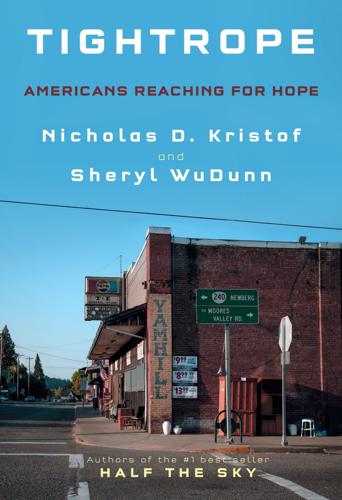
Tightrope: Americans Reaching for Hope
by
Nicholas D. Kristof
and
Sheryl Wudunn
Published 14 Jan 2020
When all else fails, they sell blood plasma, up to twice a week, for $30 or $40 each time. The second theme of this book is that suffering in working-class America was not inevitable but rather reflects decades of social-policy mistakes and often gratuitous cruelty: the war on drugs that led to mass incarceration, indifference to the loss of blue-collar jobs, insufficient health-care coverage, embrace of a highly unequal education system, tax giveaways to tycoons, zillionaire-friendly court decisions, acceptance of growing inequality, and systematic underinvestment in children and community services such as drug treatment.
…
It’s worth quoting at length from his report: Punishing and imprisoning the poor is the distinctively American response to poverty in the twenty-first century. Workers who cannot pay their debts, those who cannot afford private probation services, minorities targeted for traffic infractions, the homeless, the mentally ill, fathers who cannot pay child support and many others are all locked up. Mass incarceration is used to make social problems temporarily invisible and to create the mirage of something having been done. It is difficult to imagine a more self-defeating strategy. Federal, state, county and city governments incur vast costs in running jails and prisons. Sometimes these costs are “recovered” from the prisoners, thus fuelling the latter’s cycle of poverty and desperation.
…
Whereas government historically had helped struggling Americans with measures like the GI Bill of Rights, it retreated just as disappearing jobs, proliferating drug use and disintegrating families increased the need for social services. The churches, schools and community organizations could not respond adequately when faced with these dark new forces, so government officials instinctively lashed back with mass incarceration that only compounded the problems. In medieval Europe, villages responded to inexplicable crop failures from the “Little Ice Age” by burning witches; in the twenty-first century, we built prisons instead. Neither was a successful strategy. Increasingly, government not only refused to help but also seemed to adopt petty cruelty as a principle of governance.
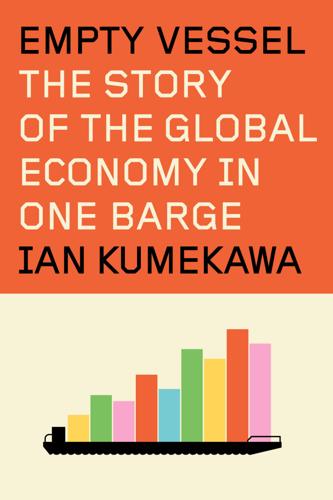
Empty Vessel: The Story of the Global Economy in One Barge
by
Ian Kumekawa
Published 6 May 2025
Koch, Margolis noted, “absolutely doesn’t believe in…rehabilitation. But, he’s a wonderful friend.”[31] Whatever their intentions, Board of Correction members helped oversee and signed off on the city’s unprecedented program of mass incarceration. A broad coalition of political actors stood behind the policies that forged racist mass surveillance and mass incarceration in the United States. As James Forman and Michael Javen Fortner have shown, many Black leaders were powerful advocates for tougher approaches to drugs and guns in the 1970s and 1980s as ways to protect Black communities and Black lives.[32] The BOC was hardly responsible for the war on drugs, but against this political backdrop, it was quietist in the face of surging arrest rates.
…
In this way, its emptiness has been its defining characteristic. For this reason, throughout its existence, the barge has always been passive. It has been forged and reforged, swept along and buffeted by a set of profound and interrelated economic transformations: the growth of the carbon economy, globalization, financialization, mass incarceration. In the process, it has also become the setting against which such sweeping processes played out. Built to service the global, multinational energy industry, it was deployed in the South Atlantic as part of an effort to shift British political attention away from the widespread unemployment caused by Margaret Thatcher’s government.
…
These effects are messy, far from gleaming shopping malls, glassy office blocks, and slick websites rendered in clean sans serifs. And though they are frequently hidden from public view, the physical effects are fundamental to the processes that have altered our world. Deregulation in the 1980s was enabled by the calculated exercise of military power. The economic dislocations of financialization accelerated mass incarceration and the physical detention of millions of people. The provision of global energy supplies continues to depend on the extraction of fossil fuels from deep beneath the earth and sea. Training sophisticated artificial intelligence depends on huge amounts of energy: creating a single moderately sized AI model can emit as much carbon as several cars in their lifetimes.[4] By following a single vessel, this book offers a guide to how major global transformations were always embodied, grounded in tangible things, and, often, dependent on physical violence.[5] This book is a material history, but it is not a commodity history.

People, Power, and Profits: Progressive Capitalism for an Age of Discontent
by
Joseph E. Stiglitz
Published 22 Apr 2019
The effort to privilege the political will of the minority over the majority begins with controlling the vote.3 Our divided country’s political battle over voting—who is allowed to vote—and representation is not new: in framing the Constitution, representatives from the southern states succeeded in enhancing their own representation by demanding that slaves be counted as three-fifths of a free man, even though the slaves themselves couldn’t vote.4 But with the recent growth in partisanship, this battle has taken another ugly turn. The Republicans have sought to disenfranchise those who they think might not support them. In fact, the country has had a long history of disenfranchisement: one of the most vivid examples of this is not allowing convicted felons to vote, which occurs in many states. Mass incarceration may have had many motives,5 but clearly one of its effects has been mass disenfranchisement: some 7.4 percent of African Americans—2.2 million in total—were unable to vote in the 2016 election because of these state laws preventing voting.6 In some Republican-dominated states,7 there is also an attempt to control the vote by making it more difficult for working people to register or to make it to the polling booth.
…
Drive through California’s Central Valley and see the migrant laborers bent in the farm fields: they live in double-wide trailers, drink polluted water, suffer from elevated disease rates, and are politically powerless.12 Many are from generations of laborers who have shuttled back and forth across the border—there is no path toward political rights for them. To some degree, the picture is reminiscent of the cotton fields of the antebellum South. Worse still, our political and economic systems work together to maintain these extremes of injustice: mass incarceration provides cheap convict labor and ensures that large numbers of people who might vote Democratic are denied the vote; temporary migrant labor, without a path to citizenship, ensures that these workers’ grievances can’t be aired in the political process, at least not by themselves. These individuals are temporary migrants, even though they may come back year after year, and the US is their only source of livelihood, because we have not allowed them to be permanent residents, for that would lead to citizenship and voice.
…
We would get better performance if we showed more respect (instead of the constant bashing of teachers and their unions, which has become fashionable among certain educational reform circles), recruited better teachers by paying them better wages (ending the legacy of gender discrimination that has long plagued the profession), and provided better working conditions, including, in many cases, smaller classes.43 Discrimination One of the real cancers on American society is its racial, ethnic, and gender discrimination. We are just waking up to its pervasiveness and its persistence, shown most recently in the graphic evidence of police brutality and the statistics on mass incarceration. Discrimination is a moral issue, but it has economic consequences. Like any cancer, it undermines our vitality. Those who suffer from discrimination often never are able to live up to their potential, and this constitutes a waste of the country’s most important economic resource, our citizens.
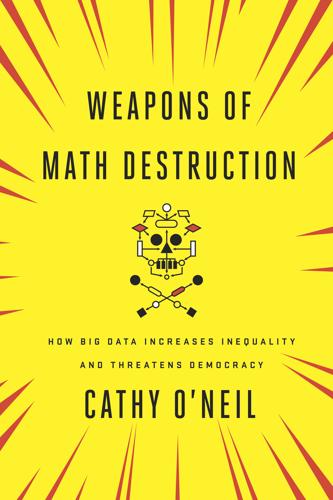
Weapons of Math Destruction: How Big Data Increases Inequality and Threatens Democracy
by
Cathy O'Neil
Published 5 Sep 2016
Privately run prisons: Peter Kerwin, “Study Finds Private Prisons Keep Inmates Longer, Without Reducing Future Crime,” University of Wisconsin-Madison News, June 10, 2015, http://news.wisc.edu/study-finds-private-prisons-keep-inmates-longer-without-reducing-future-crime/. private prisons make profits only when running at high capacity: Julia Bowling, “Do Private Prison Contracts Fuel Mass Incarceration?,” Brennan Center for Justice Blog, September 20, 2013, www.brennancenter.org/blog/do-private-prison-contracts-fuel-mass-incarceration. Michigan economics professor: Allison Schrager, “In America, Mass Incarceration Has Caused More Crime Than It’s Prevented,” Quartz, July 22, 2015, http://qz.com/458675/in-america-mass-incarceration-has-caused-more-crime-than-its-prevented/. San Diego police used this facial recognition program: Timothy Williams, “Facial Recognition Software Moves from Overseas Wars to Local Police,” New York Times, August 12, 2015, www.nytimes.com/2015/08/13/us/facial-recognition-software-moves-from-overseas-wars-to-local-police.html.
…
That would be a step toward democracy. In this march through a virtual lifetime, we’ve visited school and college, the courts and the workplace, even the voting booth. Along the way, we’ve witnessed the destruction caused by WMDs. Promising efficiency and fairness, they distort higher education, drive up debt, spur mass incarceration, pummel the poor at nearly every juncture, and undermine democracy. It might seem like the logical response is to disarm these weapons, one by one. The problem is that they’re feeding on each other. Poor people are more likely to have bad credit and live in high-crime neighborhoods, surrounded by other poor people.
…
For example, a model might be programmed to make sure that various ethnicities or income levels are represented within groups of voters or consumers. Or it could highlight cases in which people in certain zip codes pay twice the average for certain services. These approximations may be crude, especially at first, but they’re essential. Mathematical models should be our tools, not our masters. The achievement gap, mass incarceration, and voter apathy are big, nationwide problems that no free market nor mathematical algorithm will fix. So the first step is to get a grip on our techno-utopia, that unbounded and unwarranted hope in what algorithms and technology can accomplish. Before asking them to do better, we have to admit they can’t do everything.
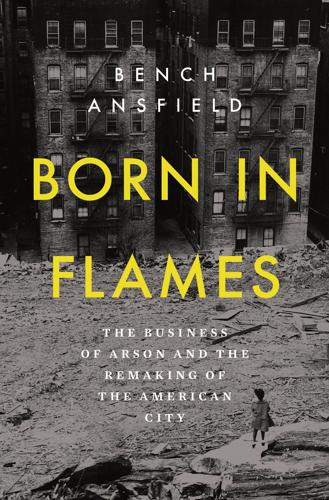
Born in Flames
by
Bench Ansfield
Published 15 Aug 2025
The characterization of LBJ’s response is from Elizabeth Hinton, From the War on Poverty to the War on Crime: The Making of Mass Incarceration in America (Cambridge, MA: Harvard University Press, 2016), 127. See also Julian E. Zelizer, “Introduction to the 2016 Edition,” The Kerner Report: The National Advisory Commission on Civil Disorders, new ed. (1968; Princeton, NJ: Princeton University Press, 2016), xiii–xxxvi. Recent studies of the War on Crime have found in Johnson’s law-and-order liberalism—including the Kerner recommendations that he did ultimately support—an origin point for mass incarceration. Naomi Murakawa, The First Civil Right: How Liberals Built Prison America (New York: Oxford University Press, 2014); Steven M.
…
The 1970s represent an inflection point, an era when the already stunted welfare state began to atrophy. Through a process of marketization—also called neoliberalism—functions previously performed by government were turned over to the private sector. Meanwhile, as the welfare state contracted, the carceral state ballooned. With the rise of mass incarceration, the state turned to punitive policies, as opposed to (or sometimes in combination with) social services, to manage unemployment, homelessness, capital flight, and the growing inequalities of the age.19 Where did the FAIR plan fit in these twin processes? Rather than advancing a punitive or progressive political agenda, it picked up the slack of a social safety net riddled with holes and going limp.
…
And indeed, in the decades to come, the NYPD ushered in the broken windows era, with the maintenance of order and the protection of property against even the slightest infractions becoming the paramount objectives of the police.26 The unavailability and unaffordability of crime insurance complicates a recent tendency among some scholars to hold Black leaders accountable for facilitating the rise of mass incarceration. According to this argument, in the 1970s, middle-class Black communities waged campaigns for heightened policing and tougher sentencing that proved decisive in the construction of the modern carceral state. But as the history of insurance shows, when Black and Brown owners of capital were unable to indemnify themselves against a broad range of threats to their property, they were deprived of what had become a significant financial entitlement of property ownership.
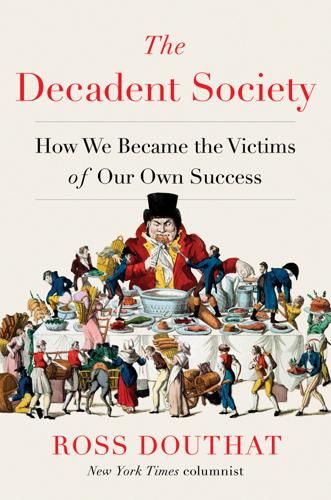
The Decadent Society: How We Became the Victims of Our Own Success
by
Ross Douthat
Published 25 Feb 2020
In the essay quoted above, deBoer discusses the irony that the “everyone’s a cop” quality of Internet discourse is advancing even as the United States finally begins to turn away from the mass-incarceration policies imposed in response to the crime wave that ravaged American cities from the 1970s through the 1990s. But this is not an irony, nor is it even a coincidence. It’s just the evolution of elite strategies of control, elite responses to the potential downsides of a hyperindividualist, hedonistic culture. Mass incarceration as practiced by politicians of both parties was the first stage of that evolution, a desperate and flailing and often-brutal attempt to use state power to deal with the anarchic consequences of the 1960s, the sexual revolution and the drug culture and the decline of moralistic institutions.
…
Who needs churches and two-parent families and the old American puritanism, in other words, when you can have a culture that preaches “If it feels good, do it,” and then puts the people who take that message too literally in prison? Extending that cynicism to the present era, you might say that mass incarceration became less necessary once virtual entertainments were invented to keep kids from broken homes indoors and take the edge off their physical and sexual aggression—and also once a surveillance state developed that made crime less likely to pay, escape from law enforcement more difficult, the outlaw life much harder to sustain. A similar point can be made about sex and pregnancy and childbearing as well. Just as we used mass incarceration as a strategy for managing crime, beginning in the 1970s we used abortion to manage teen pregnancy and out-of-wedlock births, substituting the vacuum pump for shotgun marriages and sexual restraint.
…
You might also extend this argument to foreign policy, and to the way our system deals with the threat of terrorism, Islamic and otherwise. The wars that immediately followed 9/11, the invade-and-occupy-and-nation-build strategy that came to grief in Iraq and Afghanistan, were an analogue to the mass-incarceration era’s blunt-force approach to the dangers unleashed by late-modern discontents. The turn toward drone warfare and surgical assassinations from the Obama era onward, meanwhile, is a lower-cost and less-violent approach, and therefore perhaps a more sustainable one—using technological breakthroughs, virtual warfare (for the soldiers at our end, not the targets at the other), and the awesome power of surveillance to hunt down enough terrorists that even if their deaths encourage new recruits, their organizations are too harried to ever bring their war back to our shores.
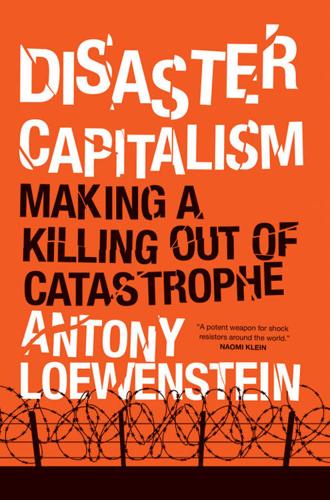
Disaster Capitalism: Making a Killing Out of Catastrophe
by
Antony Loewenstein
Published 1 Sep 2015
The United States and Britain have become global leaders in the privatized prisons and detention industries, through which millions of people have passed without any deterrent effect on criminality. Needless to say, this system has enriched favored companies such as Serco, G4S, and Corrections Corporation of America. I investigate in both countries how lobbying, ideology, and a punishment ethos have colluded to produce one of the most destructive experiments in modern times: mass incarceration. Australia has privatized all of its detention centers for asylum seekers, which are now run by multinational companies. Few other countries have so comprehensively outsourced such facilities to such a small group of companies, and with so little government oversight or media scrutiny. In its remote facilities, I investigated the reality of this privatized world and its effects on refugees and staff, and what they say about a supposedly civilized nation.
…
Paul Krugman, New York Times, 2012 America incarcerates a higher proportion of its population than any other country in the world. It operates a system that demonizes and stigmatizes African-Americans and immigrants on an unprecedented scale, resembling a social experiment in population control. In her book The New Jim Crow: Mass Incarceration in the Age of Colorblindness, US writer Michelle Alexander explained that the “war on drugs” had crippled entire communities. In thirty years, the prison population had soared from 300,000 to more than two million. Meanwhile, the globally expansionist and violent “war on terror” that followed 9/11 brought greater division and repression at home.
…
In Washington DC, our nation’s capitol [sic], it is estimated that three out of four young black men (and nearly all those in the poorest neighborhoods) can expect to serve time in prison.”1 These facts are mirrored across the country. The Vera Institute of Justice released a study in late 2014 that found mass incarceration to be “one of the major public health challenges facing the United States,” due to millions of people suffering acute physical and mental problems both in prison and once they were free. “The land of the free has become a country of prisons,” Human Rights Watch noted in 2014, issuing a report that outlined the absurd number of Americans facing jail time for minor and nonviolent crimes.2 The New Yorker writer Adam Gopnik assessed that there were “more black men in the grip of the criminal justice system—in prison, on probation or on parole—than were in slavery [in 1850].
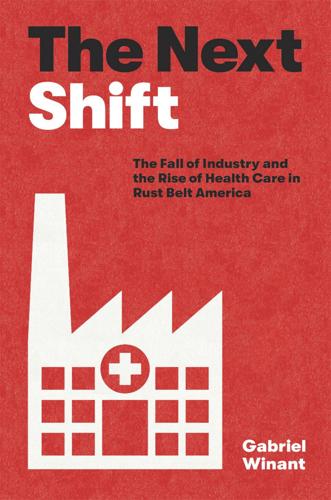
The Next Shift: The Fall of Industry and the Rise of Health Care in Rust Belt America
by
Gabriel Winant
Published 23 Mar 2021
“On Black Pittsburgh (II),” PPG, August 31, 1981; “Thornburgh Signs Mandatory-Sentencing Bill,” WOR, March 9, 1982; Pennsylvania Commission on Crime and Delinquency, “A Strategy to Alleviate Overcrowding in Pennsylvania’s Prisons and Jails,” January 1985, box 1, folder 6, MMDP; “New Prison Won’t Ease Crowding Much,” PPG, September 20, 1988; Pennsylvania Commission on Crime and Delinquency, “A Strategy to Alleviate Overcrowding in Pennsylvania’s Prisons and Jails,” January 1985, box 1, folder 6, MMDP; “Allegheny County Jail Reviewed,” WOR, April 18, 1980; “Prison System under Siege,” Allegheny Times, December 17, 1989; Borough of Homestead arrest records, January 15, 1986, box 1, folder 46, MMDP; Parsons, From Asylum to Prison. On the rise of mass incarceration, see Ruth Wilson Gilmore, Golden Gulag: Prisons, Surplus, Crisis, and Opposition in Globalizing California (Berkeley: University of California Press, 2007); Marie Gottschalk, Caught: The Prison State and the Lockdown of American Politics (Princeton, NJ: Princeton University Press, 2016); Elizabeth Hinton, From the War on Poverty to the War on Crime: The Making of Mass Incarceration in America (Cambridge, MA: Harvard University Press, 2016); Julilly Kohler-Hausmann, Getting Tough: Welfare and Imprisonment in 1970s America (Princeton, NJ: Princeton University Press, 2017). 38.
…
The institutions of social policy constructed between the 1930s and the 1960s worked to shunt the social crisis of deindustrialization into the health care system. At the bottom of the labor market, waged care work proliferated, responding to the process of industrial decline. In historical perspective, the process appears in close parallel to the rise of mass incarceration. Like the expansion of the prison system in the final decades of the twentieth century, the rise of the health care industry offered an economic fix to the social crisis brought about by deindustrialization, channeling public expenditure and state power into the management of surplus population, generating employment, profits, and social stability.40 In this light, the relationship between the midcentury “egalitarian” period and our own time looks quite different.
…
Like the expansion of the prison system in the final decades of the twentieth century, the rise of the health care industry offered an economic fix to the social crisis brought about by deindustrialization, channeling public expenditure and state power into the management of surplus population, generating employment, profits, and social stability.40 In this light, the relationship between the midcentury “egalitarian” period and our own time looks quite different. It was postwar liberalism that created the public-private welfare state that remains with us; that accepted the exclusion of huge categories of workers from social protection; that laid the groundwork for mass incarceration; that elevated the heteropatriarchal nuclear family into the only acceptable form of working-class household; that established widespread racial segregation in housing; that turned to financial markets to help policymakers govern through fiscal crisis; and that established a pluralist regime for labor law that could be captured by employers.41 Still traveling down this continuous historical path, we would be wrong to see the early twenty-first century as a return to the Gilded Age.
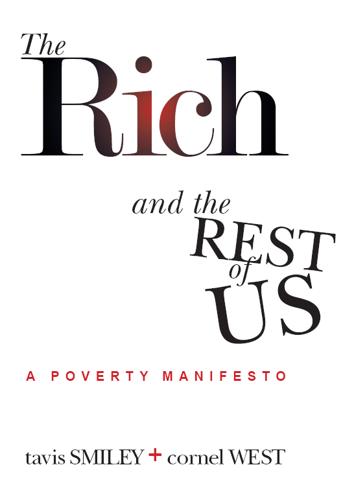
The Rich and the Rest of Us
by
Tavis Smiley
Published 15 Feb 2012
We need a food delivery system that ends hunger and food insecurity; promotes small regional farms; supports urban farming initiatives; and offers new employment opportunities through the growth, harvesting, and distribution of food. If we do this one right, America can demonstrate its ability to tackle and solve complex human problems. 6. Prisons & Mass Incarceration: Mass incarceration of minorities bankrupts the country; creates permanent, second-class citizenship; and locks formerly incarcerated individuals into on-the-street, economic concentration camps. Potentially salvageable people have been victims of the 20-year, race-based “War on Drugs” and a criminal criminal justice system.
…
To be sure, we recognize that weak family structures often contribute to generations of poverty, but we also recognize that weak families are deeply shaped and molded by larger social, economic, and historical forces. You can’t put out a fire with gasoline. You can’t rectify an injustice with more injustices. As Michelle Alexander brilliantly illustrates in her award-winning work, The New Jim Crow: Mass Incarceration in the Age of Colorblindness, a new racial caste and control system was designed as the criminal justice system after the elimination of America’s Jim Crow laws. The number of people behind bars has grown from 300,000 in the 1970s to more than 2.5 million today, and almost half—846,000, or 40.2 percent—of the prison occupiers are African American.
…
A Universal Food Delivery System would support and work to expedite all local, national, and international efforts aimed at delivering fresh, canned, and packaged produce to the hungry and, in the process, create sustainable, living-wage jobs for Americans currently underemployed or unemployed. PRISONS AND MASS INCARCERATION There’s another injustice against the poor seems to be growing in America. A November 2011 Wall Street Journal report confirmed that debtor prisons are making a comeback.100 Borrowers who can’t or don’t pay their debts are now being sent to jail. Credit card companies have become very efficient at having arrest warrants issued for debts if the accused doesn’t show up in court.
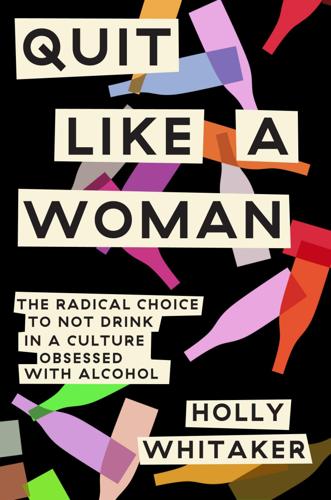
Quit Like a Woman: The Radical Choice to Not Drink in a Culture Obsessed With Alcohol
by
Holly Glenn Whitaker
Published 9 Jan 2020
“Incarceration, Substance Abuse, and Addiction,” Center for Prisoner Health and Human Rights, https://www.prisonerhealth.org/educational-resources/factsheets-2/incarceration-substance-abuse-and-addiction/;“The Fallout Legal Consequences of Alcoholism,” American Addiction Centers, June 18, 2019, https://americanaddictioncenters.org/alcoholism-treatment/legal-consequences. 319That the Rehab: Arjun Sethi and Cate Graziani, “Stop the Treatment Industrial Complex,” Politico, March 9, 2016, https://www.politico.com/agenda/story/2016/03/stop-the-treatment-industrial-complex-000061; Dan Munro, “Inside the $35 Billion Addiction Treatment Industry,” Forbes, April 27, 2015, https://www.forbes.com/sites/danmunro/2015/04/27/inside-the-35-billion-addiction-treatment-industry/#7a16304917dc. 31980 percent of them: “Mass Incarceration,” ACLU, https://www.aclu.org/issues/smart-justice/mass-incarceration; Christopher Wren, “Drugs or Alcohol Linked to 80% of Inmates,” New York Times, January 9, 1998; “The Drug War, Mass Incarceration, and Race,” Drug Policy Alliance, January 2018, http://www.drugpolicy.org/sites/default/files/drug-war-mass-incarceration-and-race_01_18_0.pdf. 319The American War on Drugs: Alexander S. Dawson, The Peyote Effect (Oakland: University of California Press, 2018), 44–54; Szasz, Ceremonial Chemistry, 75–87; Frederic Block, “Racism’s Hidden History in the War on Drugs,” HuffPost, March 5, 2013; Dale Gieringer, “The Opium Exclusion Act of 1909,” Counterpunch, February 6, 2009, https://www.counterpunch.org/2009/02/06/the-opium-exclusion-act-of-1909/. 320all drug use illicit around the globe: Fernando Esquivel-Suárez, “The Global War on Drugs,” Global South Studies, https://globalsouthstudies.as.virginia.edu/key-issues/global-war-drugs; Graham Boyd, “The Drug War Is the New Jim Crow,” ACLU Blog, July–August 2001, https://www.aclu.org/other/drug-war-new-jim-crow; Michelle Alexander, The New Jim Crow (New York: New Press, 2010). 320underwrites anti-blackness: T.
…
Esser et al.,“Prevalence of Alcohol Dependence Among US Adult Drinkers, 2009–2011,” Preventing Chronic Disease 11 (2014): 140329, http://dx.doi.org/10.5888/pcd11.140329. 85“I believe the person”: Koch quoted in Thomas Szasz, Ceremonial Chemistry: The Ritual Persecution of Drugs, Addicts, and Pushers (New York: Anchor Press, 1974), 231. 85Today around 20 percent: W. Sawyer and P. Wagner, “Mass Incarceration: The Whole Pie,” Prison Policy Initiative, March 19, 2019, https://www.prisonpolicy.org/reports/pie2019.html?c=pie&gclid=EAIaIQobChMIvJWj7Ii-4gIVGIrICh3HjgrfEAAYASAAEgLmEfD_BwE. 85around 3.3 million people: “Management of Substance Abuse,” World Health Organization, https://www.who.int/substance_abuse/facts/alcohol/en. 85450,000 people died: World Drug Report 2018: Executive Summary Conclusions and Policy Implications, United Nations Office on Drugs and Crime (Sales No.
…
.: Center for Behavioral Statistics and Study, 2017), 22, https://www.dasis.samhsa.gov/dasis2/nssats/2016_nssats_rpt.pdf. 119our criminal justice system: Kara Dansky, “Jail Doesn’t Help Addicts. Let’s Stop Sending Them There,” ACLU Blog, October 17, 2014, https://www.aclu.org/blog/smart-justice/mass-incarceration/jail-doesnt-help-addicts-lets-stop-sending-them-there; “Incarceration, Substance Abuse, and Addiction,” Center for Prisoner Health and Human Rights, n.d., https://www.prisonerhealth.org/educational-resources/factsheets-2/incarceration-substance-abuse-and-addiction/. 119medical doctors go to: Jan Hoffman, “Most Doctors Are Ill-Equipped to Deal with the Opioid Epidemic.

Border and Rule: Global Migration, Capitalism, and the Rise of Racist Nationalism
by
Harsha Walia
Published 9 Feb 2021
Prisons are the “new residential schools”36 and the “late modern ‘plantations’”37 with Indigenous and Black women as some of the fastest-growing incarcerated populations. Black women in the US are incarcerated at twice the rate as white women.38 Michelle Alexander argues that mass incarceration “functions more like a caste system than a system of crime control,” as she details the trajectory between slavery, Jim Crow, and mass incarceration, three primary anti-Black systems of control.39 Lisa Monchalin similarly argues that the incarceration of Indigenous women in Canada is not merely an issue of “overrepresentation” but a pillar of gendered settler-carceral governance.40 Settler colonialism is not only a pipeline to prisons but also a gendered carceral system itself, structured through land dispossession, imposition of the Indian Act disenfranchising tens of thousands of Indigenous women and regulating the Indian status and band membership of many more, and state removal of Indigenous children from their families.
…
The laws also implemented expedited removal (fast-tracked deportation proceedings with limited judicial oversight), imposed criminal penalties for unauthorized entry and reentry, and made detention and deportation retroactively mandatory for certain criminal convictions.70 Within six years, detentions tripled, with the number of female detainees quadrupling.71 Deportations shot up by 37 percent after the passage of these laws, averaging 150,000 annually.72 Tanya Maria Golash-Boza argues that mass deportation, normalized since the passage of these 1996 laws, is a form of racial governance enforced through expulsion of surplus labor.73 The convergence of “tough on crime” and “tough on immigration” sustains racialized control, while also ensuring a compliant labor force through the containment of surplus labor that exists alongside the outsourcing of maquiladora labor and the insourcing of migrant labor. Mass incarceration and mass deportation within neoliberalism thus serve as key techniques of conterminous social and labor control. Clinton’s punitive 1994 Violent Crime Control and Law Enforcement Act and 1996 Personal Responsibility and Work Opportunity Reconciliation Act intensified neoliberal impoverishment by linking race, immigration, welfare, and criminal law regimes.
…
A meaningful no borders politics requires an end to forced displacement caused by the brutalities of conquest, the voraciousness of capital, and the wreckages of climate change. We must wage resistance to displacement and immobility in all its forms: drone warfare, military occupations, policing agencies, mass incarceration, reservations, ghettos, gentrification, capitalist trade agreements, special economic zones, sweatshops, land grabs, resource extraction, and temporary labor programs. Dismantling borders requires that we abandon capitalism, which has only given us the merciless expropriation of land and exploitation of labor.
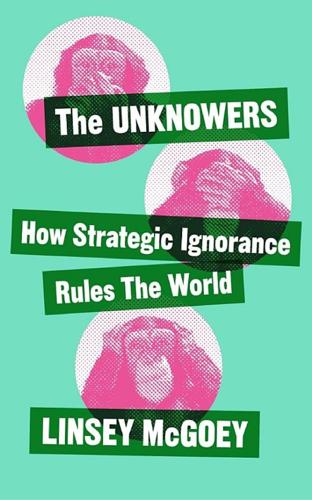
The Unknowers: How Strategic Ignorance Rules the World
by
Linsey McGoey
Published 14 Sep 2019
Proposals for mens rea reforms are openly sponsored and championed by the Koch Industries, working in collaboration first with staff in the Obama administration, and now with the Trump team. The reason why Obama staffers jumped enthusiastically at the cross-partisan effort was the hope of passing other criminal justice reforms aimed at improving the problem of mass incarceration in America. Cleverly, right-wing supporters couched their attempts to introduce new ‘excusable ignorance’ provisions in a language of human and civil rights, insisting that at a time of mass incarceration, legal reforms are needed to ensure fewer wrongful convictions occur and reduce the cost of maintaining large prison populations. Critics of the Koch brothers, on the other hand, have pointed out the irony of the timing of the Kochs’ sudden interest in the civil rights of black Americans.
…
Today, Koch-backed groups have been at the forefront of voter suppression efforts which make it harder in practice for people from communities of colour to vote. ‘It would seem prudent to view Koch support for criminal justice reform with a skeptical eye,’ Graves suggests.13 THAT’S ILLEGAL?! Why are the Koch brothers so interested all of a sudden in the problem of mass incarceration in America? The holy grail they’re after is something that could give them a sort of corporate ‘get out of jail’ free card in perpetuity for environmental crimes and work-related deaths. Their aim is to relax federal law that can penalize large corporations for cost-cutting measures that lead to severe environmental degradation and the death of workers even if companies don’t intend to break the law.
…
This point has been stressed by the Lawyers’ Committee for Civil Rights Under Law, an NGO lobbying for criminal reform of inequities which particularly affect African Americans and other ethnic and racial minority groups. They have suggested that mens rea reform legislation is ‘not likely have an appreciable effect on “over-criminalization” or “mass incarceration” because their provisions will not likely impact drug and immigration offenses, which comprise the vast majority of federal prosecutions.’17 THE SNOWMOBILE FALLACY One of the problems with proposed mens rea reforms is something that could be considered the ‘snowmobile fallacy,’ after a touchstone example used by corporate lobbyists who are trying to relax current federal legislation.
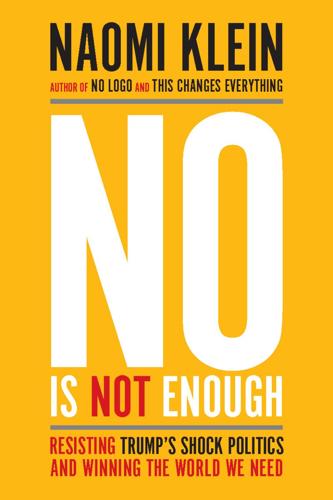
No Is Not Enough: Resisting Trump’s Shock Politics and Winning the World We Need
by
Naomi Klein
Published 12 Jun 2017
These policies have done far more to compromise the financial status of Black and Latino families, and it is within communities of color that the deepest service cuts have been inflicted. Moreover, the flip side of neoliberal economic policies that exile whole segments of the population from the formal economy has been an explosion of the state apparatus aimed at control and containment: militarized police, fortressed borders, immigration detention, and mass incarceration. The forty years since the neoliberal revolution began have seen the number of people behind bars in the United States increase by approximately 500 percent—a phenomenon, once again, that disproportionately affects Black and brown people, though whites are most certainly swept up in the system as well.
…
For its firefighting, the state relies on upwards of 4,500 prison inmates, who are paid a dollar an hour when they’re on the fire line, putting their lives at risk battling wildfires, and about two bucks a day when they’re back at camp. By some estimates, California saves about a billion dollars a year through this program—a snapshot of what happens when you mix austerity politics with mass incarceration and climate change. I Don’t Feel Hot—Do You Feel Hot? The uptick in high-end disaster prep also means there is less reason for the big winners in our economy to embrace the demanding policy changes required to prevent an even warmer and more disaster-prone future. Which might help explain the Trump administration’s determination to do everything possible to accelerate the climate crisis.
…
It was the collective memory of past shocks that made Spain resistant to new ones. 9/11 and the Perils of Official Forgetting When two planes flew into the World Trade Center in New York and another plowed into the Pentagon, on September 11, 2001, they hit a country which lacked the kind of shared memory of trauma that existed in Spain and Argentina. That’s not to say US history is unmarked by repeated traumas. The United States was founded in domestic state terror, from the genocide of Indigenous peoples to slavery through to lynching and mass incarceration; trauma has been ever-present right up to this day. Moreover, very frequently, shocks and crises have been handmaidens to the worst abuses. In the aftermath of the Civil War, the promise of land redistribution as economic reparation to freed slaves was promptly betrayed. The financial crisis of 1873, known as the Great Panic, further entrenched the excuse that the economy was too ravaged and the country too divided—and instead of reparations came a reign of terror against freed slaves in the South.
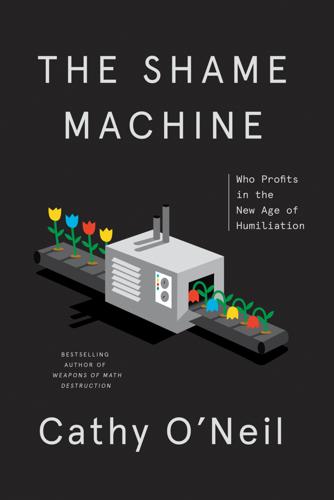
The Shame Machine: Who Profits in the New Age of Humiliation
by
Cathy O'Neil
Published 15 Mar 2022
GO TO NOTE REFERENCE IN TEXT Prison, of course, cost even more: “Annual Determination of Average Cost of Incarceration,” Federal Register, April 30, 2018, https://www.federalregister.gov/documents/2018/04/30/2018-09062/annual-determination-of-average-cost-of-incarceration. GO TO NOTE REFERENCE IN TEXT more than $3 billion per year: Kara Gotsch and Vinay Basti, “Capitalizing on Mass Incarceration: U.S. Growth in Private Prisons,” The Sentencing Project, August 2, 2018, https://www.sentencingproject.org/publications/capitalizing-on-mass-incarceration-u-s-growth-in-private-prisons/. GO TO NOTE REFERENCE IN TEXT “They are reckless criminals”: Christopher Rowland, “Prescription Opioids Destroyed Families. Now, Victims Worry Addiction Stigma May Keep Them from Getting Justice,” The Washington Post, December 2, 2019, https://www.washingtonpost.com/business/economy/prescription-opioids-destroyed-families-now-victims-worry-addiction-stigma-may-keep-them-from-getting-justice/2019/12/02/02f51c9e-0642-11ea-b17d-8b867891d39d_story.html.
…
In The War for Kindness, Jamil Zaki cites cases in which white cops defend a marauding colleague, instead of reporting or shaming him, because they feel for him. Maybe they trained with him; maybe they are concerned about his family. These tribal instincts lead us to defend our own and hammer on others. The same dynamic is at work when a judicial system headed by the in-group punches down on perceived outsiders—in our case, people of color—with mass incarceration or even execution. So empathy, while essential, cannot right social wrongs. Instead, consider a personal policy of due process. This can translate into giving people the benefit of the doubt whenever possible. Perhaps they didn’t mean to do it. Perhaps it was a misunderstanding. And usually, when a person errs, nobody feels it more deeply than they do.
…
See also poverty shame responses to the Lucerne Hotel shelter, 121–24 homophobia, 111 Hopi shame clowns, 3–5, 6 I Ikeida, Vosot, 209 incarceration, 89, 206. See also criminal justice system economic exploitation of parolees, 68–73 Oscar Jones’s story and the question of forgiveness, 214–15 masking in prison settings, 157 mass incarceration and racial inequities, 42–43, 44–45, 89, 213 incel community, 135–45, 148–49 dynamics and beliefs of, 138–45 origins of, 137 Elliot Rodger’s actions and influence, 136–37 India: Gandhi’s Salt March, 173–76 individual choice/personal responsibility tropes, 9–10, 88, 203.
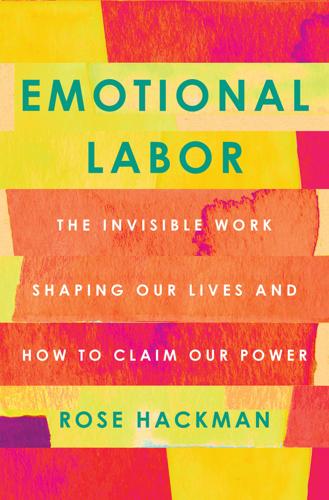
Emotional Labor: The Invisible Work Shaping Our Lives and How to Claim Our Power
by
Rose Hackman
Published 27 Mar 2023
“Demographics of the U.S. Military,” Council on Foreign Relations, updated July 13, 2020, accessed March 27, 2022, https://www.cfr.org/backgrounder/demographics-us-military. 12. Wendy Sawyer and Peter Wagner, Mass Incarceration: The Whole Pie 2022, Prison Policy Initiative, press release, March 14, 2022, accessed March 27, 2022, https://www.prisonpolicy.org/reports/pie2022.html. 13. Sawyer and Wagner, Mass Incarceration. 14. National Partnership for Pretrial Justice (website), accessed May 17, 2021, https://www.pretrialpartnership.org/. 15. Gina Clayton et al., Because She’s Powerful: The Political Isolation and Resistance of Women with Incarcerated Loved Ones (Los Angeles and Oakland, Calif.: Essie Justice Group, 2018), 95. 16.
…
This means that in a nation that employs over 1.3 million active military personnel, 84 percent of whom are men, more than a million families are coping with, supporting, and absorbing the effects of an armed global superpower in very real emotional ways, at home.11 It also means that in a nation with an incarcerated population of 1.9 million people, there are millions of families and loved ones invisibly coping with, supporting, and absorbing the ripple effects of a punishing system on individuals, families, and communities.12 Gina Clayton-Johnson, the founder of Essie Justice Group, told me that when the United States invested in four decades of mass incarceration, it effectively invested in social isolation and the rupturing of communities. Incarceration rates have exploded in the last four decades in large part because of harsh drug laws especially targeting Black communities and communities of color.13 While nine out of ten incarcerated people are men, those bearing the brunt of such aggressive policies are often entire communities held together by women.
…
That half a million people sit in American jails every day without a conviction because of not being able to make bail means women on the outside are forced into making impossible choices.14 Paying rent or paying for a loved one’s bail was just one of many agonizing decisions women had to face, said Clayton-Johnson, whose organization is among those advocating an end to the cash bail system. “These decisions are more than just cold calculations of plusses and minuses. They are hugely emotional decisions women are expected to take on,” she said. These burdens take a toll. A report15 published by her organization to document what was happening to women as a result of mass incarceration found that 70 percent of women with incarcerated loved ones were the primary wage earners in their family. It further found that 86 percent of them said the impact of having a loved one incarcerated had a severe or extreme effect on their emotional and mental health, and 63 percent said that their physical health had been significantly or extremely affected.
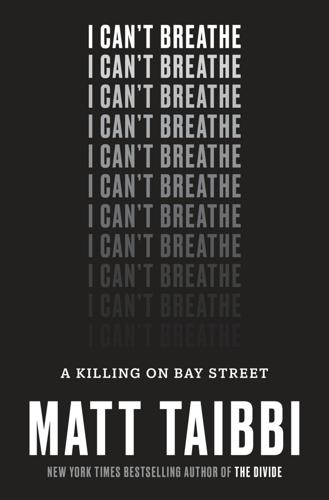
I Can't Breathe
by
Matt Taibbi
Published 23 Oct 2017
“He called it ‘felony money, misdemeanor time.’ ” — Eric Garner may have created a lot of his own problems, but he was also the victim of bad luck and atrocious timing. In the eighties and early nineties, when he was beginning to deal drugs, the crack dealer had become public enemy number one. Garner also happened to ply his trade in the worst possible place: New York State, ground zero for the mass incarceration movement. New York’s then governor Mario Cuomo spent the eighties and early nineties funding more than thirty new prisons using a loophole in an urban development law that, perversely, had been intended to create jobs in inner cities. It was also the era of the infamous 100:1 laws, when long mandatory sentences kicked in for selling crack in weights 100 times smaller than the weights required to send a powder-cocaine dealer away.
…
From the Barclays Center in Brooklyn to the West Side Highway to Columbus Circle to the Williamsburg Bridge to spots all over Harlem, the South Bronx, and Staten Island, major roads, highways, and commercial centers were closed off by furious protesters. Some of these crowds were spontaneous, and some weren’t. A dozen or more organizations, from Black Lives Matter to Copwatch to the Stop Mass Incarceration Network (a front group for the Revolutionary Communist Party, USA), had sprung to action. Many of these groups actively disliked, even detested, one another and, behind the scenes, began vying with one another to seize a role as leaders. Mostly, though, people just went out onto the streets spontaneously, massing in places like Union Square and Times Square and using intel from social media to seek out confrontations with the roving squads of police that set up in places like Rockefeller Center, the Seventy-ninth Street off-ramp of the West Side Highway, and Mount Sinai Hospital up in Spanish Harlem.
…
— A large part of the tension between protesters and police lay in the explosive and impossibly complicated argument about race that had long divided the whole country. On one side sat a group of mostly nonwhite Americans who believed (or knew from personal experience) that institutional racism is still a deathly serious problem in this country, as evidenced by everything from profiling to mass incarceration to sentencing disparities to a massive wealth gap. On the other side sat an increasingly impatient population of white conservatives that was being squeezed economically (although not nearly as much as black citizens), felt its cultural primacy eroding, and had become hypersensitive to any accusation of racism.
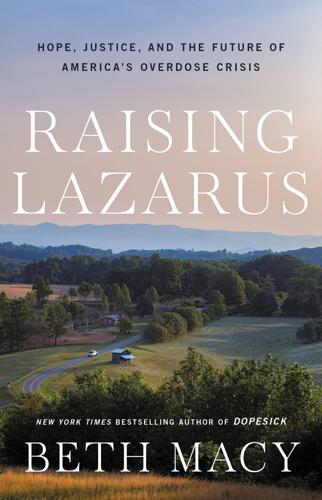
Raising Lazarus: Hope, Justice, and the Future of America’s Overdose Crisis
by
Beth Macy
Published 15 Aug 2022
In a revolving-door story that would become moustache-twirling fodder in books, documentaries, and television series, the drug’s FDA approval officer, Dr. Curtis Wright, went to work for Purdue soon after, earning $379,000 a year. And the cowed politicians who followed Nixon and Reagan—especially President Bill Clinton, with the help of then-Senator Joseph R. Biden—continued to amplify mass incarceration. It was a cynical attempt to claw back centrist White voters with the notion that Democrats could be tough on crime, too. By 2007, policing and imprisonment had become what financial gurus were calling a “superb growth industry.” Syndicated financial columnist Malcolm Berko encouraged his readers who dabbled in stocks to invest in private companies dedicated to incarceration.
…
By drawing such a bold line of demarcation between licit and illicit, policy makers demonized one group of drug users while medicalizing another without recognizing the overlap. “There was a failure to take the risk of addiction seriously in [the legal drug] markets because addiction had been coded” as something that only happened illicitly in poor and minority communities, Herzberg said. In other words, the mass incarceration of Black people who use drugs and the overpromotion of OxyContin for rural Whites were two sides of the same very racialized coin. We’re familiar with the terrible costs borne by the Black and Brown communities targeted by the War on Drugs. But the opioid crisis revealed that even the people for whom the system was built—people who had privileged access to medical care—paid an awful price, too.
…
A Tennessee congressman derided David’s question-dodging by quoting Upton Sinclair: “A man has difficulty understanding something if his salary depends on him not understanding it.” Massachusetts congresswoman Ayanna Pressley recited Richard Sackler’s oft-quoted “hammer on the abusers” deflection and blamed him for predatory practices that decimated minority communities already strained by mass incarceration. “Your family’s rhetoric fuels the stigma and harmful policies that have denied people in need of the resources they require to overcome their addiction. We do not need another failed war on drugs. What we need is a reckoning and accountability for drug companies who put profits over people and rob us of lives and the freedom of our loved ones.”
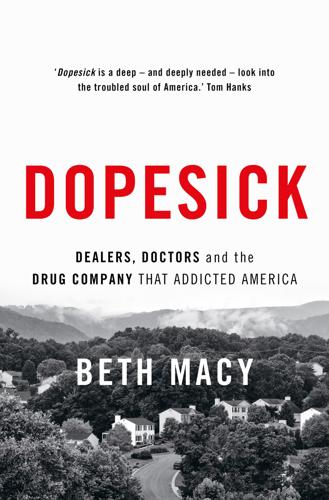
Dopesick: Dealers, Doctors and the Drug Company That Addicted America
by
Beth Macy
Published 4 Mar 2019
statewide corrections behemoth that returns: Author interview, Anthony West, chief operations officer, Virginia CARES, July 14, 2017. likens the war on drugs to a system: Michelle Alexander, The New Jim Crow: Mass Incarceration in the Age of Colorblindness (New York: New Press, 2010). Alexander’s thesis was further delineated by a 2017 book by scholar John F. Pfaff, in which he argues that the incarceration spike was fueled more by elected local prosecutors, the vast majority of them white men who operate behind a veil of secrecy and aggressively forge plea deals in 95 percent of cases: Locked In: The True Causes of Mass Incarceration—and How to Achieve Mass Reform (New York: Basic Books, 2017). shift in public spending from health and welfare programs: “Fact Sheet: Trends in U.S.
…
During the two years he’d spent there, he said, he spent his time working out, studying Arabic and Swahili, and reading the works of Guy Johnson, Eric Jerome Dickey, and Maya Angelou. On my way to the prison, I’d been listening to the audiobook of Michelle Alexander’s New Jim Crow, I told him, the seminal book on mass incarceration that likens the War on Drugs to a system of racial control comparable to slavery and Jim Crow. “I’ve read The New Jim Crow twice,” Ronnie said. He’d also read lawyer Bryan Stevenson’s majestic Just Mercy, a memoir about his work against the racial bias and economic inequities inherent in the criminal justice system, which included efforts on behalf of falsely accused death row inmates.
…
See also rehabilitation programs addiction medicine, 127, 213, 221, 270, 272 ADHD, 17, 112, 116, 124, 128, 133–35, 140, 155 Affordable Care Act, 206, 228, 276, 277 Afghanistan, 195 African Americans: and drug addiction stereotypes, 126, 127; and heroin distribution, 153, 159, 198; heroin use of, 106, 108–9, 130, 172; and mass incarceration, 252–53; and pain treatment, 253–54; poverty of, 275; as voters, 280 AIDS, 207, 284 Alcoholics Anonymous, 197, 216, 219, 224, 240, 286–87 alcohol use: and ADHD medications, 134; deaths associated with, 16, 150, 151; and family risk for addiction, 127; and heroin use, 24, 111, 142, 143, 144, 164; and laudanum, 21; and medication-assisted treatment, 217; and OxyContin, 51 Alexander, Michelle, 252–53 American Academy of Pain Medicine, 66–67 American Medical Association, 25, 271 American Pain Society, 66–67 Americans with Disabilities Act, 295 amphetamines, 116, 117 Anderson, Tony, 118 Andruscavage, Lisa, 210 Appalachia: drug diversion in, 18–19, 35, 147–48; and I-81, 10, 111–12, 129, 146, 152; opioid epidemic in, 8, 9–10, 15–18, 30, 32, 43, 57–58, 128–29, 150, 206–7, 217, 250–51, 273–74, 281, 282, 287, 290–96; and Purdue Pharma marketing, 52–53; and War on Poverty, 18, 43, 53 Appalachian Pain Foundation, 45–46 Ashcraft, Bobby Lee, Jr., 91 Asian Americans, 280 Ausness, Richard, 72, 267–68 Avruch, David, 291 Azer, Alex M., II, 220 Bailey, Dwight, 41–42 Banks, Colton, 138, 139–43, 145, 185, 191 Banks, Drenna, 138–43 Bassford, Andrew, 96, 132–33, 193–95, 251 Baucus, Max, 67 Bayer Laboratories, 10, 23–25, 218 Baylis, Bobby, 204–5, 234, 236–37, 241, 242, 245, 300 benzodiazepines, 35, 134, 213 Bickel, Warren, 106–7, 301–2 Bisch, Ed, 58, 61–63, 70–72, 79, 85, 88, 90–91 Bisch, Eddie, 58, 88 Bolstridge, Jesse: addiction of, 7, 8, 112–13, 114, 115, 175–76, 177; death of, 5, 9, 12, 107, 111, 172–73, 177, 183, 185, 252, 265; as football player, 6, 112, 157; grave of, 6–7, 10, 265–66, 268; and heroin distribution, 154–55; heroin use of, 155, 173, 175–76, 177; and rehabilitation, 155, 173–77; Ritalin prescription of, 17, 112, 155 Bradley Free Clinic, 232 Bristol Recovery Center, 292 Brownlee, John L., 73–74, 77–79, 80, 81–86, 96, 99 buprenorphine: and drug diversion, 213, 214, 286, 290; and medication-assisted treatment, 130, 144, 173, 210, 211–13, 215–19, 221, 222, 224, 228, 301, 302 Burke, Don, 284–85 Burroughs, William S., 22, 59 Burton, John, 28–29, 135, 242 Bush, George H.

The Survival of the City: Human Flourishing in an Age of Isolation
by
Edward Glaeser
and
David Cutler
Published 14 Sep 2021
The girl will not be safe if the police are defunded, but the boy will not be safe unless the police are reformed. In the 1990s, America tilted one way. We adopted draconian punishment rules like “Three Strikes and You’re Out” because of terrible crimes committed by people who should never have been on the streets. But those policies punished “not wisely but too well.” The mass incarceration of young men shows not only a lack of humanity but also stupidity. A smarter society should be able to target its punishments toward those who truly endanger the community. As we embark on a quest to reform criminal justice, we must heed the advice of Robert Heinlein and Milton Friedman: “there ain’t no such thing as a free lunch.”
…
The rise of Zoom will not endanger urban life as a whole, but it increases the risk facing any individual city. It creates the perilous possibility that long-simmering urban problems may lead to a cycle of decline. We visit these urban problems in the next sections: underperforming urban schools, police violence, and mass incarceration. We turn first to the battles over gentrification that reflect the larger crisis of urban affordability. Chapter 8 THE BATTLE FOR BOYLE HEIGHTS AND THE CLOSING OF THE METROPOLITAN FRONTIER At 2:35 p.m. on the afternoon of September 11, 2001, New York mayor Rudy Giuliani told CNN that “I want the people of New York to be an example to the rest of the country and the rest of the world that terrorism can’t stop us.”
…
There are other suspects for the drop in crime, including increasing numbers of police (especially in New York City), changing police strategies, fewer drug-related gang conflicts, legalized abortion, and reduced exposure of children to lead. Some even argue that video games led to less crime. Mass incarceration can impact crime through three distinct channels. First, prisons can deter crime, as longer sentences may make criminals warier of risking arrest. Second, prisons can incapacitate crime-prone individuals. Ida Ballasiotes certainly did not believe that Gene Kane and Earl Shriner could be scared straight, but she did believe that if they were locked up, they would do less harm.
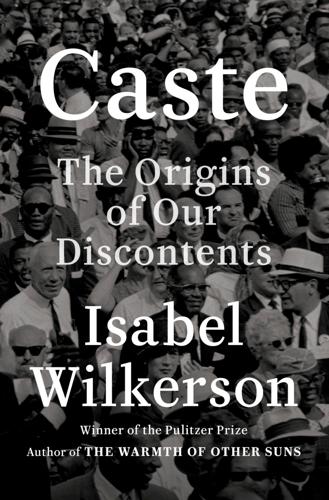
Caste: The Origins of Our Discontents
by
Isabel Wilkerson
Published 14 Sep 2020
“Here may be seen husbands separated from their wives, only by the width of the room, and children from their parents, one or both, witnessing the driving of the bargain that is to tear them asunder for ever, yet not a word of lamentation or anguish must escape from them; nor when the deed is consummated, dare they bid one another good-bye, or take one last embrace.” * * * —— In the United States, there developed two parallel worlds existing on the same plane with flagrant double standards to emphasize the purposeful injustices built into the system. Presaging the disparities that led to mass incarceration in our era, the abolitionist minister William Goodell observed the quandary of black people in antebellum America. “He is accounted criminal for acts which are deemed innocent in others,” Goodell wrote in 1853, “punished with a severity from which all others are exempted. He is under the control of the law, though unprotected by the law, and can know law only as an enemy.”
…
The crack cocaine epidemic of that era was dismissed as an urban crime problem rather than addressed as a social and health crisis, considered a black problem rather than a human one. The response was to criminalize addiction when the abusers were subordinate caste, which swelled the rate of mass incarceration, broke up families, and left the country ill-equipped for the incoming tragedy of opioid addiction. Caste assumptions created devastation on both sides of the caste divide and have made for a less generous society overall. Exclusion costs lives, up and down the hierarchy. The physician Jonathan M.
…
Many observers in the dominant caste were comforted by the bailiff’s gesture, which they saw as an act of loving, maternal compassion. Many in the subordinate caste saw it as a demeaning fetishization of a dominant-caste woman who was being extended comfort and leniency that are denied African-Americans, who are treated more harshly in an era of mass incarceration and in society over all. Was the bailiff showing empathy for a fellow officer? Was she patting her down, as some thought, and if so, why did she not wear gloves or have the convict stand, and why stroke only her hair? Was the bailiff channeling the convict’s pain, responding to ancient cues to protect the upper caste at all times, thus fulfilling the unspoken role assigned the subordinate caste for generations?
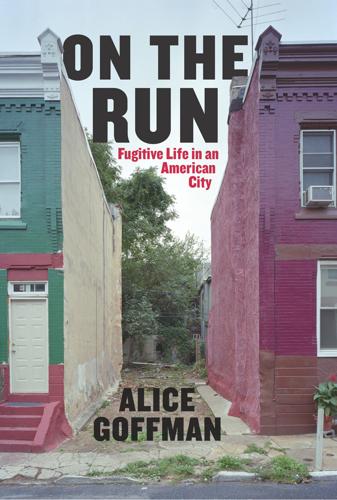
On the Run: Fugitive Life in an American City
by
Alice Goffman
Published 30 Apr 2014
The hour-long ride gave me some distance from the chaos and emergencies of 6th Street, and a chance to think about what I was seeing. I was also learning for the first time about mass incarceration. With Devah Pager and Bruce Western both in the Sociology Department at the time, the corridors of Wallace Hall were a hotbed of activity on the causes and consequences of the prison boom. After muddling through a slew of topics and themes, I came to see, through Devah and Bruce’s influence and Mitch Duneier’s guidance, that my project could be framed as an on-the-ground look at mass incarceration and its accompanying systems of policing and surveillance. I was documenting the massive expansion of criminal justice intervention into the lives of poor Black families in the United States.
…
Wacquant’s theoretical and empirical work on the expanding US penal system and its significance for American politics and race relations was a significant inspiration for this volume, and can be sampled in “The New Peculiar Institution: On the Prison as Surrogate Ghetto,” Theoretical Criminology 4, no. 3 (2000): 377–88; “Deadly Symbiosis: When Ghetto and Prison Meet and Mesh,” Punishment & Society 3, no. 1 (2001): 95–133; Urban Outcasts: A Comparative Sociology of Advanced Marginality (Cambridge: Polity Press, 2008); and Punishing the Poor: The Neoliberal Government of Social Insecurity (Durham, NC: Duke University Press, 2009). 11. Devah Pager, Marked: Race, Crime, and Finding Work in an Era of Mass Incarceration (Chicago: University of Chicago Press, 2007), 4–5. 12. Bruce Western, Punishment and Inequality in America (New York: Russell Sage Foundation, 2006), especially 191. 13. Of the 217 households surveyed by Chuck and me in 2007. 14. In these eighteen months of daily fieldwork, there were only five days in which I observed no police activity. 15.
…
Here I have omitted my small interjections, such as “yep,” “uh huh,” and “sure is” as well as other unrelated comments, such as those directed at the cat that had jumped up on the table. 6. See the appendix for a detailed account of Chuck’s death. 7. I typed this conversation into my phone while it was happening—the quotes should be taken only as a close approximation. CONCLUSION 1. Michelle Alexander, The New Jim Crow: Mass Incarceration in the Age of Colorblindness (New York: New Press, 2010); Loïc Wacquant, “Deadly Symbiosis: When Ghetto and Prison Meet and Mesh,” Punishment & Society 3, no. 1 (2001): 95–133. 2. Leon F. Litwack, Been in the Storm So Long: The Aftermath of Slavery (New York: Knopf, 1979). 3. Vagrancy laws have resurfaced recently in the form of “quality of life” policing.

The Color of Money: Black Banks and the Racial Wealth Gap
by
Mehrsa Baradaran
Published 14 Sep 2017
Law enforcement would be the front line of the War on Poverty, and would thereby increase its presence in and surveillance of the black communities. This criminalization of black life would increase over the next several decades, but its seeds and structure were planted during the Johnson administration.99 The War on Crime would take a heavy toll on the black population, leading to the mass incarceration of black men and the further devastation of the black ghetto, and it began ironically as a response to the violent protests of an already desperate and impoverished community. Once Jim Crow was destroyed and equality before the law established, a new strand of colorblind racism emerged. As Ibram Kendi explained, there have always been “two historical forces at work: a dual and dueling history of racial progress and the simultaneous progression of racism."100 “Law and order" became the language of the former white supremacists, who were now engaged on the front lines of the War on Crime.101 George Wallace, Strom Thurmond, and the last defenders of Jim Crow, once defeated, shifted their rhetoric to push for stronger criminal enforcement.102 But it wasn’t just the southern segregationists.
…
John David Skrentny, The Ironies of Affirmative Action: Politics, Culture, and Justice in America (Chicago: University of Chicago Press, 1996), 71. 35. Governor Brown called the rioters “terrorists" and promised to deal with them “forcefully." Elizabeth Hinton, From the War on Poverty to the War on Crime: The Making of Mass Incarceration in America (Cambridge, MA: Harvard University Press), 71. 36. Skrentny, Ironies of Affirmative Action, 73. 37. Gerald Horne, Fire This Time: The Watts Uprising and the 1960s (Charlottesville, VA: Da Capo, 1997), 36. 38. U.S. Congress, Senate, Committee on Banking and Currency, Subcommittee on Financial Institutions, “Consumer Credit and the Poor," 90th Congress, 2nd Session, April 19, 1968, 1; Louis Hyman, Debtor Nation: The History of America in Red Ink (Princeton, NJ: Princeton University Press, 2013), 194. 39.
…
Katharine Beckett, Making Crime Pay: Law and Order in Contemporary American Politics (New York: Oxford University Press, 1997), 32. 97. “The Wages of Hatred,” Wall Street Journal, July 18, 1966. For more on the backlash, see Rick Perlstein, Nixonland: The Rise of a President and the Fracturing of America (New York: Simon & Schuster, 2010), 121; Michelle Alexander, The New Jim Crow: Mass Incarceration in the Age of Colorblindness (New York: New Press, 2011), 42. 98. These rioters were described as having been “bred” from “broken homes, illegitimacy, and other social ills,” all of which have “warped the mind” of black youth, a problem that was terminal. Hinton, From the War on Poverty to the War on Crime, 4, 75. 99.

Revolution at Point Zero: Housework, Reproduction, and Feminist Struggle
by
Silvia Federici
Published 4 Oct 2012
In the United States, presumably the most successful example of neoliberalism, the welfare system has been dismantled—especially AFDC, which affects women with dependent children.15 Thus female-headed families have been completely pauperized, and working class women must now hold more than one job to survive. Meanwhile the number of women in jail has continued to increase, and a policy of mass incarceration has prevailed that is consistent with the return of plantation-type economies also in the heartland of industrialism. Women’s Struggle and the International Feminist Movement What are the implications of this situation for the international feminist movements? The immediate answer is that feminists should not only support the cancellation of the “Third World debt” but engage in a campaign for a policy of reparations, returning to communities devastated by “adjustment” the resources taken away from them.
…
In reality, the destruction of human life on a large scale has been a structural component of capitalism from its inception, as the necessary counterpart of the accumulation of labor power, which is inevitably a violent process. The recurrent “reproduction crises” that we have witnessed in Africa over the last decades are rooted in this dialectic of labor accumulation and destruction. Also the expansion of noncontractual labor and of other phenomena that may seem like abominations in a “modern world”—such as mass incarceration, the traffic in blood, organs and other human parts—should be understood in this context. Capitalism fosters a permanent reproduction crisis. If this has not been more apparent in our lifetimes, at least in many parts of the Global North, it is because the human catastrophes it has caused have been most often externalized, confined to the colonies, and rationalized as an effect of cultural backwardness or attachment to misguided traditions and “tribalism.”
…
Most significantly, we are witnessing the development of a homeless, itinerant workforce, compelled to nomadism, always on the move, on trucks, trailers, buses, looking for work wherever an opportunity appears, a destiny once reserved in the United States to seasonal agricultural workers chasing crops, like birds of passage, across the country. Along with impoverishment, unemployment, overwork, homelessness, and debt has gone the increasing criminalization of the working class, through a mass incarceration policy recalling the seventeenth century Grand Confinement, and the formation of an ex-lege proletariat made of undocumented immigrant workers, students defaulting on their loans, producers or sellers of illicit goods, sex workers. It is a multitude of proletarians, existing and laboring in the shadow, reminding us that the production of populations without rights—slaves, indentured servants, peons, convicts, sans papiers—remains a structural necessity of capital accumulation.
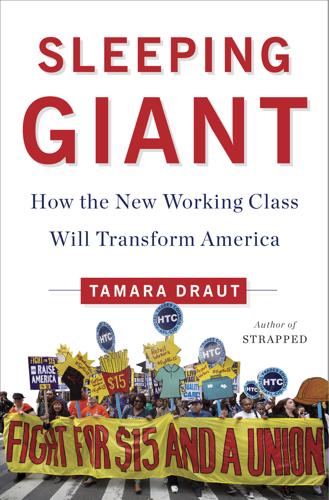
Sleeping Giant: How the New Working Class Will Transform America
by
Tamara Draut
Published 4 Apr 2016
Instead of having access to private doctors and world-class care at Kaiser Permanente, she and her brothers now had to go to the public county hospital. Her dad was never able to rebound to his previous salary, instead relying on a series of low-paying jobs at auto-repair franchises like Midas. Cullors describes the connection between deindustrialization and mass incarceration as happening “fast, fast, fast.” Her neighborhood, Van Nuys, was poor in the 1990s, and right next door to the affluent community of Sherman Oaks, which made Van Nuys susceptible to gentrification and its black residents undesirable. “The neighborhood became super-surveilled and super-policed.
…
Liss’s goal for NVM is to create an active membership organization whose engagement goes beyond clicking on an email voicing an opinion on legislation. With twenty thousand people signed up on the email list, the organization has gotten a bird’s-eye view of the challenges it faces in bridging alliances across race. When it has sent out pro-immigration emails, it has gotten push-back from some members. When it has sent out emails about mass incarceration, it has gotten push-back from some members. But Liss won’t be deterred. In September 2015, New Virginia Majority brought together two hundred activists from across the state to ratify a common state agenda, which will provide alignment and shared goals across organizations working in Virginia.
…
John Kasarda, “Urban Industrial Transition and the Underclass,” Annals of the American Academy of Political and Social Science, 501, no.1 (1990): pp. 26–47. 44. Ibid. 45. Ibid. 46. Mary D. Edsall and Thomas B. Edsall, Chain Reaction: The Impact of Race, Rights, and Taxes on American Politics (New York: Norton, 1992), pp. 12–13. 47. Michelle Alexander, The New Jim Crow: Mass Incarceration in the Age of Color Blindness (New York: New Press, 2012), p. 52. 48. Ibid., p. 49. 49. Alexander, The New Jim Crow, pp. 49–50. During Reagan’s first term, FBI antidrug funding rose from $8 million to $95 million. Between 1981 and 1991, Department of Defense antidrug funding surged from $33 million to over $1 billion in 1991, and the Drug Enforcement Administration’s antidrug spending grew from $86 million to $1 billion—all while drug-treatment funding at federal agencies was cut by more than three-quarters. 50.
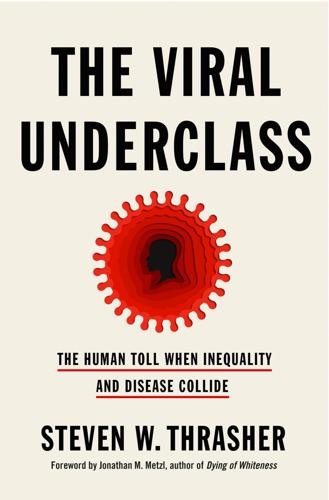
The Viral Underclass: The Human Toll When Inequality and Disease Collide
by
Steven W. Thrasher
Published 1 Aug 2022
All those new prisons and one hundred thousand cops he proudly put on the streets in the mid-1990s were expensive. As Alexander wrote, “the Clinton administration didn’t reduce the amount of money devoted to the management of the urban poor; it changed what the funds would be used for. Billions of dollars were slashed from public-housing and child-welfare budgets and transferred to the mass-incarceration machine. By 1996, the penal budget was twice the amount that had been allocated to food stamps.” Prioritizing penal and policing budgets while simultaneously reducing welfare created, in ways implicit and explicit, a population ever more vulnerable not just to hunger, but also to viruses and pandemics.
…
Disability as a precursor to increased viral risk need not be preordained. People who have trouble breathing or need immune system treatment could have their health protected with the ability to work from home, accessible mental health care, guaranteed housing to keep them off the street, freedom from mass incarceration, and the right to live near friends and family (with the help of home aides, if needed) in small settings, instead of being hidden away in a care center. COVID-19 removed so much touch from our lives that, after learning Ward had died, I found myself thinking about how transgressively queer people had maintained intimacy with people who could not care for themselves in the early years of AIDS.
…
COVID-19 hot spot Rikers Island jail: Nick Pinto, “If Coronavirus Deaths Start Piling Up in Rikers Island Jails, We’ll Know Who to Blame,” Intercept, March 23, 2020, https://theintercept.com/2020/03/23/coronavirus-rikers-jail-de-blasio-cuomo/. including Harry Truman: Naomi Murakawa, The First Civil Right: How Liberals Built Prison America (New York: Oxford University Press, 2014). Truman, Lyndon Johnson: Elizabeth Hinton, From the War on Poverty to the War on Crime: The Making of Mass Incarceration in America (Cambridge, MA: Harvard University Press, 2016). “action to end the AIDS crisis”: ACT UP, last modified 2019, https://actupny.org/. according to the New York Times: Philip Hilts, “Clinton’s Director of Policy on AIDS Resigns Under Fire,” New York Times, July 9, 1994, https://www.nytimes.com/1994/07/09/us/clinton-s-director-of-policy-on-aids-resigns-under-fire.html.

Poverty for Profit
by
Anne Kim
Twice as many Americans today live in neighborhoods with a poverty rate of 30 percent or more compared to a generation ago.25 Children born in the poorest fifth of households have a less than 10 percent shot at reaching the top 20 percent, according to Harvard University researcher Raj Chetty, and only about half of sons can expect to earn more than their fathers.26 Downward mobility is a threat. A Black child born in the top fifth of households, finds Chetty, is as likely to fall to the bottom as they are likely to remain at the top.27 Too many Americans face structural barriers such as low-quality schools, housing segregation, mass incarceration, and lack of access to good jobs. The nation has yet to undertake systemic reforms that recognize and rectify these historic inequities. Government antipoverty programs could also be more generous. In 2017, for instance, government benefits and tax relief lifted more than 39 million Americans out of poverty, according to one analysis, and lowered the poverty rate by 12 percentage points.28 Bigger investments could certainly mean greater impacts.
…
As early as the mid-1800s, “economizing state legislatures awarded contracts to private entrepreneurs to operate and manage Louisiana’s first state prison, New York’s Auburn and Sing Sing penitentiaries and others,” writes prison privatization expert Byron Eugene Price in his book Merchandizing Prisoners.115 Scandals and abuses led to the industry’s near-demise through the 1950s before “expanding prison populations, pressures from courts to quickly add prison space and increases in prison costs” sparked a revival in the 1980s, Price writes.116 Between 1985 and 2005, the number of Americans behind bars grew to a stunning 1.6 million—in part because of rising crime rates but also because of the “war on drugs,” harsher sentences, and other policies encouraging mass incarceration.117 While states struggled with the influx of inmates, prison entrepreneurs saw a golden opportunity to relaunch an industry. Leading the way was Nashville-based Corrections Corporation of America (CCA, now CoreCivic), founded in 1983 by Republican Party activist Thomas Beasley and financed by venture capitalist Jack Massey.118 Massey had already made his fortune building both Kentucky Fried Chicken (he bought the chain from founder “Colonel” Harland Sanders for $2 million in 1964) and the Hospital Corporation of America, now the largest hospital chain in America.119 When a court ordered Tennessee to fix its overcrowded prisons by the end of 1985, CCA boldly offered to spend $250 million—including $150 million to build two new prisons—in exchange for exclusive rights to run the state’s system for ninety-nine years.120 The company lost its bid, but brazen tactics like these would characterize the prison industry’s rapid rise in the 1980s and 1990s.
…
(PRIDE), which advertises more than three thousand products for sale, including furniture, clothing, stationery, and even dentures.190 In 2021, PRIDE generated $59.5 million in sales and paid its inmate workers between $0.20 and $0.95 an hour.191 The Price of Privatized Injustice The companies that benefit from mass incarceration have made it their business to maintain the status quo. They depend on a steady supply of detainees whose wealth they can extract and whose labor they can exploit. The “benefits” they return to the public are minimal, while the damage they inflict is incalculable. No evidence conclusively shows that privatized prisons save governments money.
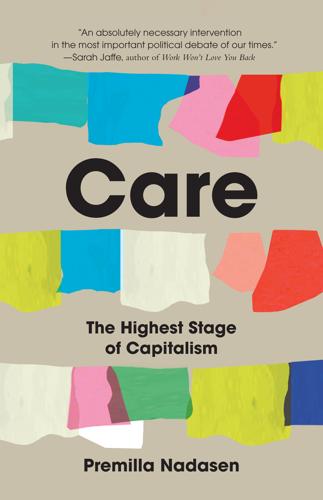
Care: The Highest Stage of Capitalism
by
Premilla Nadasen
Published 10 Oct 2023
“Caseload Data 1995 (AFDC Total),” Office of Family Assistance, Administration for Children and Families, Department of Health and Human Services, December 19, 2004, https://www.acf.hhs.gov/ofa/data/caseload-data-1995-afdc-total. 13. Elizabeth Hinton, From the War on Poverty to the War on Crime: The Making of Mass Incarceration in America (Cambridge: Harvard University Press, 2016); Ruth Wilson Gilmore, Golden Gulag: Prisons, Surplus, Crisis, and Opposition in Globalization in California (Berkeley: University of California Press, 2007); Michelle Alexander, The New Jim Crow: Mass Incarceration in the Age of Colorblindness (New York, The New Press, 2012). 14. Dorothy Roberts, Torn Apart: How the Child Welfare System Destroys Black Families—and How Abolition Can Build a Safer World (New York: Basic Books, 2022), 39. 15.
…
Lise Vogel, Marxism and the Oppression of Women: Toward a Unitary Theory (New Brunswick: Rutgers University Press, 1983); Nancy Fraser, “Contradictions of Capitalism and Care,” New Left Review 100 (2016): 99–117; Susan Ferguson, Women and Work: Feminism, Labour, and Social Reproduction (London: Pluto Press, 2020); Tithi Bhattacharya, Social Reproduction Theory Remapping Class, Recentering Oppression (London: Pluto Press, 2017). 7. Fraser, “Contradictions of Capitalism and Care.” 8. Mae Ngai, The Chinese Question: The Gold Rushes and Global Politics (New York: W.W. Norton & Company, Inc., 2021). 9. Elizabeth Hinton, From the War on Poverty to the War on Crime: The Making of Mass Incarceration in America (Cambridge: Harvard University Press, 2016). 10. Keeanga-Yamahtta Taylor, Race for Profit: How Banks and the Real Estate Industry Undermined Black Homeownership (Chapel Hill: University of North Carolina Press, 2019). 11. Claudia Jones, “An End to the Neglect of the Problems of the Negro Woman!
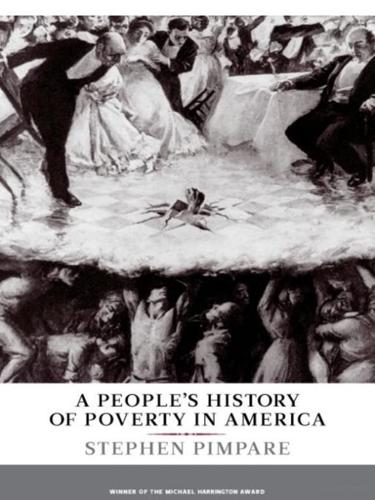
A People's History of Poverty in America
by
Stephen Pimpare
Published 11 Nov 2008
Felons and ex-offenders inhabit their own sphere in the welfare state, and they are typically denied eligibility for public housing, food stamps, or, in some states, licenses to be bus drivers or hairdressers. As I’ve suggested, to comprehend the political economy of the ghetto we must consider the manner in which the mass incarceration of black men has removed potential fathers, partners, and wage earners from their community. Urban poverty cannot be understood without incorporating the prison. This was as true in our past as it is now, when the punishment for poverty—codified in an array of antivagrancy and anti-tramping laws in the North as well as the black codes of the South—was debtor’s prison, the work farm, or indentured servitude, just as jail or expulsion from the city is today punishment for loitering, begging, sleeping in public places, or other public displays of need.55 It is useful to remember that the Thirteenth Amendment did not abolish slavery: it explicitly retained involuntary servitude “as a punishment for crime whereof the party shall have been duly convicted.”
…
Brown, Leslie Scheuler-Whitaker, and Shannon Collier-Tenison, “Welfare Reform on American Indian Reservations: Initial Experience of Service Providers and Recipients on Reservations in Arizona,” Social Policy Journal 1, no. 1 (2002): 83. 18 Mimi Abramovitz, “Challenging the Myths of Welfare Reform from a Woman’s Perspective,” Social Justice 21, no. 1 (spring 1994): 17–21. 19 Jodi-Levin Epstein, “Welfare, Women, and Health: The Role of Temporary Assistance for Needy Families,” Henry J. Kaiser Family Foundation, 2003. 20 Richard M. Tolman and Jody Raphael, “A Review of Research on Welfare and Domestic Violence,” Journal of Social Issues 56, no. 4 (2000): 655–82. 21 Devah Pager, Marked: Race, Crime, and Finding Work in an Era of Mass Incarceration (Chicago: University of Chicago Press, 2007). 22 For an examination of these issues in the wake of 1996’s welfare reform, see Sharon Hays, Flat Broke with Children: Women in the Age of Welfare Reform (New York: Oxford University Press, 2004). 23 Virginia E. Schein, Working from the Margins: Voices of Mothers in Poverty (Ithaca, NY: ILR/Cornell University Press, 1995), 88–89. 24 In Kathryn Edin and Laura Lein, Making Ends Meet: How Single Mothers Survive Welfare and Low-Wage Work (New York: Russell Sage, 1997), 75–76. 25 Lisa Featherstone, “Down and Out in Discount America,” The Nation, January 3, 2005. 26 Jill Duerr Berrick, Faces of Poverty: Portraits of Women and Children on Welfare (New York: Oxford University Press, 1995 [1997]), 83. 27 Kathleen Mullan Harris, “Work and Welfare Among Single Mothers in Poverty,” American Journal of Sociology 99, no. 2 (September 1993): 317–52. 28 Mary E.
…
Donald, “Dependents and Delinquents,” Journal of Negro History 6, no. 4 (October 1921): 458–70; see also Stephen Pimpare, The New Victorians: Poverty, Politics, and Propaganda in Two Gilded Ages (New York: The New Press, 2004), chap. 6. 56 Marie Gottschalk, The Prison and the Gallows: The Politics of Mass Incarceration in America (New York: Cambridge University Press, 2006), 199; David Cole, No Equal Justice: Race and Class in the American Criminal Justice System (New York: The New Press, 1999). 57 David M. Oshinsky, “Worse Than Slavery”: Parchman Farm and the Ordeal of Jim Crow Justice (New York: Free Press, 1996), 39. 58 Jeff Manza and Christopher Uggen, “Punishment and Democracy: Disenfranchisement of Nonincarcerated Felons in the United States,” Perspectives on Politics 2, no. 3 (September 2004): 491–505; Angela Behrens, Christopher Uggen, and Jeff Manza, “Ballot Manipulation and the ‘Menace of Negro Domination’: Racial Threat and Felon Disenfranchisement in the United States, 1850–2002,” American Journal of Sociology 109, no. 3 (November 2003): 559–605.
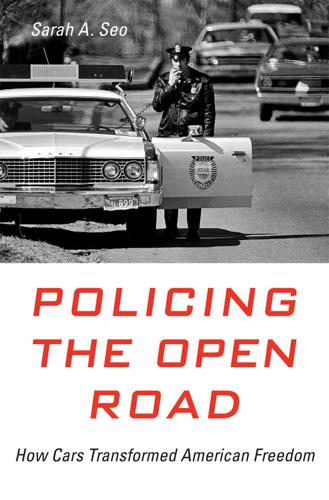
Policing the Open Road
by
Sarah A. Seo
Figures are hard to come by, but one early report indicated that in the sixteen smallest states, the number of officers as a percentage of the population nearly doubled from 1910 to 1930. In addition to adding manpower, municipalities unified the police function and increased the police’s discretionary authority. Courts then sanctioned that accumulation and concentration of power. The most glaring part of this history, considering that it culminated with mass incarceration by century’s end, is race. Today, it would be improbable that Mrs. Bates, a white woman sitting in the passenger seat next to her husband of social standing, would be killed in a police shooting, a tragedy that now falls mostly on minority drivers. The statistics bearing this out, as well as stories like Sandra Bland’s, not only reveal a problem of discrimination and implicit bias; they also raise a troubling question about our laws that have actually enabled racialized policing.10 Contrary to what one might expect, the social and legal developments that made the systematic policing of minorities possible did not originate with an intention to do so.
…
But by enabling discretionary policing, the Fourth Amendment had also created opportunities for racial profiling.62 If the profusion of car cases since Carroll v. United States manifested an area of constitutional law without a coherent theory of jurisprudence, then the car cases decided in the era of mass incarceration betrayed a Fourth Amendment without a theory of justice. To be sure, the Supreme Court in Whren did recognize discriminatory policing as a constitutional issue. “We of course agree with petitioners,” the opinion stated, “that the Constitution prohibits selective enforcement of the law based on considerations such as race.”
…
On Judge Simeone, see “Remembering Joe Simeone,” Saint Louis University School of Law, May 5, 2015, https://perma.cc/2C3K-NAGW. 13. Franklin E. Zimring, “Continuity and Change in the American Gun Debate,” in Guns, Crime, and Punishment in America, ed. Bernard E. Harcourt (New York: New York University Press, 2003), 29–30; see also Elizabeth Hinton, From the War on Poverty to the War on Crime: The Making of Mass Incarceration in America (Cambridge, MA: Harvard University Press, 2016); Michael W. Flamm, Law and Order: Street Crime, Civil Unrest, and the Crisis of Liberalism in the 1960s (New York: Columbia University Press, 2005). On gun control laws in the 1930s, see Adam Winkler, Gunfight: The Battle over the Right to Bear Arms in America (New York: W.
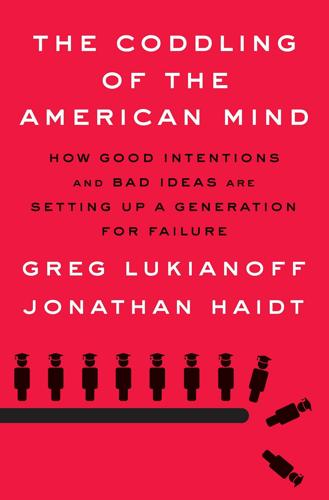
The Coddling of the American Mind: How Good Intentions and Bad Ideas Are Setting Up a Generation for Failure
by
Greg Lukianoff
and
Jonathan Haidt
Published 14 Jun 2018
When I was part of groups like this, everyone was on exactly the same page about a suspiciously large range of issues. Internal disagreement was rare.74 It is difficult to imagine a culture that is more antithetical to the mission of a university.75 The Power of Common Humanity Today Michelle Alexander, in her best-selling book, The New Jim Crow: Mass Incarceration in the Age of Colorblindness,76 illustrates what happens to the millions of black men dragged into the criminal justice system—often for possession or use of small amounts of marijuana. They are released into a society where they struggle to find jobs, are disqualified from state benefits, and sometimes face the loss of the right to vote, leading to an “undercaste” in American society that is in some ways reminiscent of the Jim Crow South.
…
In books like Radley Balko’s Rise of the Warrior Cop: The Militarization of America’s Police Forces77 and FIRE cofounder Harvey Silverglate’s Three Felonies a Day: How the Feds Target the Innocent,78 libertarians have expressed opposition to both overpolicing and the excesses of the war on drugs. The conservative group Right on Crime opposes overcriminalization, mass incarceration, and the drug war.79 There are opportunities for real cooperation on serious but potentially solvable issues.80 For activists seeking reform, the lesson is to find common ground. Marches and rallies are good for energizing your “team,” but as Columbia University professor of humanities Mark Lilla points out in his book The Once and Future Liberal: After Identity Politics, they are not enough to bring about lasting change.
…
Berkowitz (Ed.), Advances in experimental social psychology (Vol. 2, pp. 267–299). New York, NY: Academic Press. Adams, J. S., & Rosenbaum, W. B. (1962). The relationship of worker productivity to cognitive dissonance about wage inequities. Journal of Applied Psychology, 69, 161–164. Alexander, M. (2010). The new Jim Crow: Mass incarceration in the age of colorblindness. New York, NY: The New Press. Almas, I., Cappelen, A. W., Sorensen, E. O., & Tungodden, B. (2010). Fairness and the development of inequality acceptance. Science, 328, 1176–1178. Anderson, L., Lewis, G., Araya, R., Elgie, R., Harrison, G., Proudfoot, J., . . .
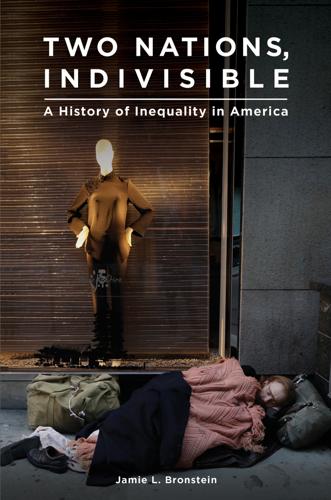
Two Nations, Indivisible: A History of Inequality in America: A History of Inequality in America
by
Jamie Bronstein
Published 29 Oct 2016
Oscar Handlin and Lilian Handlin, “America and Its Discontents: A Great Society Legacy,” American Scholar (Winter 1995): 15–37, at 34. 27. Katz, The Underclass Debate, 16–18. 28. Quadagno, The Color of Welfare, 178. 29. Horowitz, “New Deal to New Federalism,” 145. 30. Quadagno, The Color of Welfare, 162–163. 31. Michelle Alexander, The New Jim Crow: Mass Incarceration in the Age of Colorblindness (New York: New Press, 2010), 48. 32. Jennifer Hoschchild, What’s Fair? American Beliefs about Distributive Justice (Cambridge, MA: Harvard University Press, 1986), 278. 33. Ibid., 175, 253. 34. Ibid., 190, 255. 35. Maurice A. St. Pierre, “Reaganomics and Its Implications for African-American Family Life,” Journal of Black Studies vol. 21 no. 3 (Mar., 1991): 325–340. 36.
…
Jessica Pishko, “Locked Up for Being Poor,” The Atlantic, February 25, 2015, available online at http://www.theatlantic.com/national/archive/2015/02/locked-up-for-being-poor/386069/, accessed August 10, 2015; Campbell Robertson, “A City Where Policing, Discrimination and Raising Revenue Went Hand in Hand,”New York Times, March 4, 2015, available online at http://www.nytimes.com/2015/03/05/us/us-details-a-persistent-pattern-of-police-discrimination-in-a-small-missouri-city.html?_r=0, accessed August 10, 2015; “A Modern System of Debtor Prisons,” New York Times, March 28, 2016, available online at http://www.nytimes.com/2016/03/28/opinion/a-modern-system-of-debtor-prisons.html, accessed June 18, 2016. 64. Michelle Alexander, The New Jim Crow: Mass Incarceration in the Age of Colorblindness (New York: New Press, 2010), 147–148, 192. 65. Jon Swaine, Oliver Laughland, and Jamiles Lartey, “Black People Killed by Police Twice as Likely to Be Unarmed as White People,” Guardian, June 1, 2015, available online at http://www.theguardian.com/us-news/2015/jun/01/black-americans-killed-by-police-analysis, accessed June 2, 2015. 66.
…
Robert Alexander Kraig, “The 1912 Election and the Rhetorical Foundations of the Liberal State,” Rhetoric and Public Affairs vol. 3 no. 3 (2000): 363–395. 100. Benjamin Disraeli, Sybil: Or the Two Nations (Aylesbury, UK: Penguin Books, 1981), first published 1845, 422. Select Bibliography Alexander, Michelle. The New Jim Crow: Mass Incarceration in the Age of Colorblindness. New York: New Press, 2010. Alstott, Anne, and Bruce Ackerman. The Stakeholder Society. New Haven, CT: Yale University Press, 2000. Alter, Jonathan. The Defining Moment: FDR’s Hundred Days and the Triumph of Hope. New York: Simon and Schuster, 2006. Bailey, Martha J., and Nicolas J.
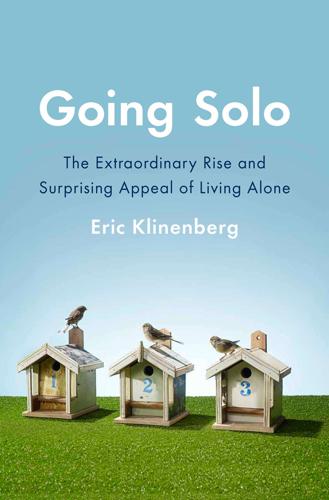
Going Solo: The Extraordinary Rise and Surprising Appeal of Living Alone
by
Eric Klinenberg
Published 1 Jan 2012
African Americans who live alone, Marsh argues, are “not just a phenomenon of early adulthood,” but are instead “on a trajectory to becoming the most prominent household within the black middle class if not the entire black community.”2 What’s driving this increase? Harvard sociologist William Julius Wilson argues that two major social changes—the dramatic disappearance of industrial jobs once occupied by African American men, and the subsequent mass incarceration of men from these same communities—has generated a rising class of “unmarriageable males” and thereby reduced the intraracial marriage market. But this is not the entire story. For decades, marriages between black men and white women have been more common than marriages between white men and black women, and in the 2000s they were more than twice as common.
…
Storr, who was careful to note that solitude can take a constructive or destructive course depending on the way it’s used, reports that “many of the world’s greatest thinkers have not reared families or formed close personal ties.” Storr, Solitude, p. 1. 4. On the reluctance of employers to hire men with criminal records, particularly African Americans, see Devah Pager, Marked: Crime, Race, and Finding Work in an Era of Mass Incarceration (Chicago: University of Chicago Press, 2007). 5. See Porter and O’Donnell, “Facing Middle Age”; and Richard Fry and D’Vera Cohn, “Women, Men, and the New Economics of Marriage.” 6. The University of Wisconsin sociologist Alice Goffman makes a similar observation in her ethnographic study of young black men with criminal records in Philadelphia: “Suspicious even of those closest to them, young men cultivate unpredictability or altogether avoid institutions, places, and relations on which they formerly relied.”
…
Journal of Design History 18 (2005), no. 1: 99–114. Owen, David. “Green Manhattan: Why New York Is the Greenest City in the U.S.” The New Yorker, October 18, 2004. Packaged Facts. “Singles in the U.S.: The New Nuclear Family.” Rockville, Md., 2007. Pager, Devah. Marked: Crime, Race, and Finding Work in an Era of Mass Incarceration. Chicago: University of Chicago Press, 2007. Park, Young Jin. “The Rise of One-Person Householders and their Recent Characteristics in Korea.” Korea Journal of Population and Development 23 (1994), no. 1: 117–29. Parkes, C. Murray, B. Benjamin, and R. G. Fitzgerald. “Broken Heart: A Statistical Study of Increased Mortality Among Widowers.”
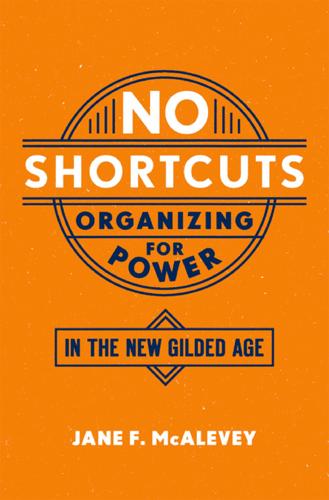
No Shortcuts: Organizing for Power in the New Gilded Age
by
Jane F. McAlevey
Published 14 Apr 2016
The resulting deeply conservative judiciary has relentlessly chipped away at the major laws sustaining the victories of labor and civil rights, overturning hard-fought, key provisions of affirmative action and voting-rights protections. Moreover, along with austerity and privatization, conservative courts have facilitated a vertically integrated for-profit prison system, resulting in the mass incarceration of African Americans, detention centers overflowing with Latinos, and massive profits for the putrid penal system’s corporate shareholders.9 The corporate class also created their version of a popular front, seizing the cultural apparatus through such rulings as the Federal Communications Commission’s Clinton-era decision to allow multinationals to outright own the means of communication.
…
A bifurcated union and community alliance, which is what Richard Trumka promoted at the quadrennial convention of the AFL-CIO in 2013, will not be as effective, because the groups Trumka proposed to ally with and that most unions do engage are too weak themselves to make any real difference. Maintaining the bifurcation that has existed for the past forty years also denies agency to today’s heavily female workforce. Women have long understood that issues such as child care, good housing, quality schools, clean drinking water, safe streets, and an end to mass incarceration and police violence are every bit as important as higher wages to the well-being of workers and their families. Understanding how to frame a more integrated approach that covers these needs requires further clarity about, and a little history of, the differences between mobilizing and organizing.
…
He sums it up on page 11 of Rules for Radicals: “In the end [this is] a conviction—a belief that if people have the power to act, in the long run they will, most of the time, reach the right decisions.” Yet that power has resulted in genocide against Native Americans; centuries of slavery; today’s mass incarceration of people of color; right-wing opposition to immigrant rights, taxes, and government; and the ongoing denial that unpaid homemaking is as hard as most wage work. None of this easily squares with Alinsky’s simple “conviction” that those who have the power to act will almost always act wisely and well.

Data Action: Using Data for Public Good
by
Sarah Williams
Published 14 Sep 2020
The video asks the public to imagine if just “one million dollars was spent on resettlement rather than imprisonment,” what the communities might look like. While the video did not suggest a policy action, it was meant to teach the public about a topic, ask them to rethink it from their own perspective, and ultimately provoke a debate on mass incarceration and its effects on the communities once home to the incarcerated. The Architecture League exhibition helped the project gain recognition of the larger arts and architecture community, and was included in the “Design and the Elastic Mind” exhibition at the Museum of Modern Art in New York in 2008.
…
Brian Harley, “Maps, Knowledge, and Power,” Geographic Thought: A Praxis Perspective, 2009, 129–148. 20 Ibid. 21 Laura Kurgan, Close Up at a Distance: Mapping, Technology, and Politics (Cambridge, MA: MIT Press, 2013). 22 Kurgan, Close Up at a Distance. 23 Michelle Alexander, The New Jim Crow: Mass Incarceration in the Age of Colorblindness (New York: The New Press, 2012). 24 DataMade, “Chicago's Million Dollar Blocks,” January 7, 2019, https://chicagosmilliondollarblocks.com/. 25 Laura Kurgan, director of the Spatial Information Design lab and the principal investigator (PI) for the grant, brought this diverse group together. 26 Australian law Reform Comission, “How Does Justice Reinvestment Work?”
…
PLA Notes 39, no. 2 (2000): 10–13. Alessa, Ali, and Miad Faezipour. “A Review of Influenza Detection and Prediction through Social Networking Sites.” Theoretical Biology & Medical Modelling 15 (February 1, 2018). https://doi.org/10.1186/s12976-017-0074-5. Alexander, Michelle. The New Jim Crow: Mass Incarceration in the Age of Colorblindness. New York: The New Press, 2012. “All the Stops.” Bklynr. Accessed January 10, 2019. https://www.bklynr.com/all-the-stops/. Altay, Nezih, and Melissa Labonte. “Challenges in Humanitarian Information Management and Exchange: Evidence from Haiti.” Disasters 38, no. s1 (2014): S50–72. https://doi.org/10.1111/disa.12052.

Merchants of the Right: Gun Sellers and the Crisis of American Democracy
by
Jennifer Carlson
Published 2 May 2023
Americans broadly responded to the social unrest of the 1960s with calls for law and order that would pathologize urban African Americans as the progenitors of subversive politics and criminal activity.23 Jim Crow might have been crumbling in the South under the pressure of the Civil Rights movement, but what would replace it—the system of mass incarceration that legal scholar Michelle Alexander24 would call the “New Jim Crow”—was already beginning to take shape. Whether explicitly aimed at disarming Black Power groups (such as California’s Mulford Act of 1967) or galvanized by the problem of urban crime that framed Black boys and men as violent criminals (such as the 1968 Gun Control Act), the embrace of gun regulation in the 1960s was intertwined with the broader criminalization of Blackness.
…
As Phillips and Milner (2021: 201) observe, “too many people fixate on their own freedoms from, burying their responsibility to cultivate freedoms for.” 50. hooks (2014: 215). 51. Winfrey and Perry (2021). 52. Brown (2012). 53. hooks (1994: 298). 54. Ross (2021: 3). 55. Du Bois (2016: 28). 56. As just one example, see Murakawa (2014) on the liberal justification of mass incarceration. 57. As James Baldwin wrote in 1963, “this is the crime of which I accuse my country and my countrymen, and for which neither I nor time nor history will ever forgive them, that they have destroyed and are destroying hundreds of thousands of lives and do not know it and do not want to know it.… But it is not permissible that the authors of devastation should also be innocent.
…
Accessed August 12, 2021. https://www.nytimes.com/interactive/2019/12/20/magazine/1619-intro.html. Simmons-Duffin, S. (2021). Poll Finds Public Health Has a Trust Problem. NPR. Accessed October 22, 2021. https://www.npr.org/2021/05/13/996331692/poll-finds-public-health-has-a-trust-problem. Simon, J. (2010). Consuming Obsessions: Housing, Homicide, and Mass Incarceration since 1950. University of Chicago Legal Forum, 1(7), 165–204. Simon, R. (2020). State Preemption of Local Gun Regulations: Taking Aim at Barriers to Change in Firearm Policy. SSRN, 1–59. Simpson, M. (2020). For a Prefigurative Pandemic Politics: Disrupting the Racial Colonial Quarantine. Political Geography, 84(2021). doi: https://doi.org/10.1016/j.polgeo.2020.102274.
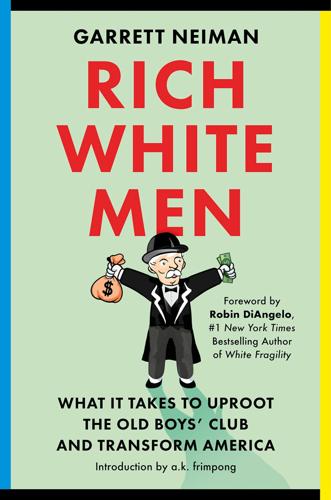
Rich White Men: What It Takes to Uproot the Old Boys' Club and Transform America
by
Garrett Neiman
Published 19 Jun 2023
Even wrongly convicted and nonviolent offenders sometimes find themselves sentenced to death by guard brutality, inmate violence, or unsanitary conditions. The COVID-19 pandemic has compounded the health crisis in American prisons: as of April 2021, three thousand incarcerated people died of COVID-19.40 In today’s era of mass incarceration, both liberals and conservatives are questioning the massive resources that the United States is allocating to maintain its role as the incarceration capital of the world. According to the American Action Forum, the United States spends nearly $300 billion annually policing communities and incarcerating 2.2 million people.41 The societal costs—lost earnings, adverse health effects, and damage to families—are triple the direct costs, bringing the total annual burden of America’s criminal justice system to $1.2 trillion.
…
Over time, harms become normalized, inferiority becomes internalized, and social norms become embedded in interpersonal, institutional, and structural relationships as systems of oppression. That culture of disrepair can be seen in America’s lackluster response to harm caused by genocide, settler colonialism, slavery, Jim Crow, and mass incarceration. That paradigm also applies to other systems of oppression. For example, my colleague Allen helped me understand that a rape culture developed in the United States less because of the actions of individual rapists and more because of the way institutions responded when such harms were perpetrated.
…
At the time, land sold for three to five dollars per acre.23 Black people never got their promised forty acres and a mule, but white enslavers got that and then some.24 Genocide, settler colonialism, and slavery are not the only places where the United States can repair harm through reparations. Other transgressions include Jim Crow restrictions, mass incarceration, and Puerto Rico’s continued treatment as an American colony, which is a glaring example of how colonialism is not a relic of America’s past but very much part of its present. Some of the rich white men I know see reparations as a bridge too far, favoring instead a national truth and reconciliation process they hope would bring the country together.
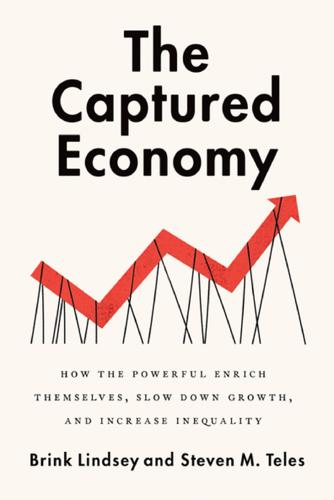
The Captured Economy: How the Powerful Enrich Themselves, Slow Down Growth, and Increase Inequality
by
Brink Lindsey
Published 12 Oct 2017
Such coalitions don’t necessarily require a less ideological Congress. Indeed, the progress of ideological purism, whether of the anti-statist or egalitarian variety, can facilitate new political groupings. Consider, for example, criminal justice reform, where many conservatives have become more skeptical of mass incarceration precisely because they have gone further in an anti-statist direction.42 Something similar can occur with respect to finance and intellectual property, where anti-statism has led some conservatives to see crony capitalism where once they saw support for business. Ideological purists on both poles may find more friends at the other extreme than they can cobble together on their own team.
…
Texas Department of Licensing and Regulation, No. 12-0657, 469 S.W.3d 69 (2015). 36.License to Uber: A Better Way to Fix Irrational Licensing, 64 UCLA LAW REVIEW __ (forthcoming 2017). 37.See, e.g., Maria Santos Bier, “Warren and Vitter on ‘Too Big to Fail,’ ” Cato at Liberty (blog), September 17, 2015, http://www.cato.org/blog/warren-vitter-too-big-fail. 38.See “Occupational Licensing: A Framework for Policymakers,” July 2015, https://www.whitehouse.gov/sites/default/files/docs/licensing_report_final_nonembargo.pdf; “Housing Development Toolkit,” September 2016, https://www.whitehouse.gov/sites/whitehouse.gov/files/images/Housing_Development_Toolkit%20f.2.pdf. 39.See, e.g., Derthick and Quirk, The Politics of Deregulation. 40.For the origins of this ungainly term for a liberal-libertarian synthesis, see Brink Lindsey, “Liberaltarians,” New Republic, December 4, 2006, http://www.cato.org/publications/commentary/liberaltarians. 41.John Aldrich and David Rohde, “The Transition to Republican Rule in the House: Implications for Theories of Congressional Government,” Political Science Quarterly (Winter 1997–98): 541–67. 42.David Dagan and Steven Teles, Prison Break: Why Conservatives Turned against Mass Incarceration (New York: Oxford University Press, 2016). 43.Heather Hurlburt and Chayenne Polimedio, “Can Transpartisan Coalitions Overcome Polarization? Lessons from Four Case Studies,” New America, April 2016, https://na-production.s3.amazonaws.com/documents/final_transpartisan.pdf. INDEX Acemoglu, Daron, 8 Adele, 81 Admati, Anat, 58 affluence, 91, 110–11, 118, 122, 124, 140–47 agenda-setting, 132–36, 204n9 agglomeration, economies of, 114, 118 American Bar Association, 107 American Dental Association, 105 American Medical Association, 102–3 Americans with Disabilities Act, 28 anticompetitive collusion,184n1 antitrust legislation, 11, 13, 166, 171 artificial scarcity, 17, 19, 32–33, 120, 184n1 assets bubbles and, 35–55, 190n19 management of, 38 “Tobin’s Q” and, 19–20, 22–23 valuation of, 49 authoritarianism, 3, 8, 179 Avent, Ryan, 119 Bailey, James,186n14 bailouts, 52–53, 55–56, 175 Baker, Dean, 12 Baldwin, Pater, 78 banking.

Rules for Revolutionaries: How Big Organizing Can Change Everything
by
Becky Bond
and
Zack Exley
Published 9 Nov 2016
We have to have voters make demands of their representatives in Congress. Together, we will constitute a wave that will swamp the influence of big money, corporate media, and other establishment players who are invested in maintaining the status quo. What do big organizing goals look like? Make public college free. End the drug war and stop the mass incarceration of black and brown people. Let everyone enroll in Medicare and make health care truly universal. Pursue an industrial policy that seeks to put everyone to work in the best jobs possible. None of these are crazy things to ask for. And it’s not crazy to ask for them all at once. In fact, all of those things are the status quo in almost every high- and middle-income country in the world.
…
He outlined the radical solutions our moment calls for, not the tepid incrementalist compromises that most politicians think are all that is feasible. Bernie didn’t talk about education tax credits or even debt-free college. He demanded free college tuition. He didn’t advocate for complicated health insurance schemes, he said “health care is a human right.” Bernie called for an end to mass incarceration, not incremental changes in sentencing laws. He had no ten-point plan to regulate fracking to the point that it wouldn’t be feasible in most places in the United States. He simply said we should ban fracking. When it came to the deportation of children, he couldn’t have been clearer.

The Meritocracy Trap: How America's Foundational Myth Feeds Inequality, Dismantles the Middle Class, and Devours the Elite
by
Daniel Markovits
Published 14 Sep 2019
For example, among black men born in 1960, high school dropouts have a 59 percent chance of going to prison at some point in their lives, whereas college graduates have a 5 percent chance. See James Forman Jr., “Racial Critiques of Mass Incarceration: Beyond the New Jim Crow,” 25 (on file with author). See also Bruce Western and Christopher Wildeman, “The Black Family and Mass Incarceration,” Annals of the American Academy of Political and Social Sciences 621 (2009): 221–42. fallen by roughly a third: The share of households has fallen from 61 percent to just under 50 percent, and the share of income has fallen from 62 percent to 43 percent.
…
Most conspicuously, the nearly 20 million people who have been imprisoned or carry a felony conviction—up from just 2.5 million in 1960—are excluded from all but the most marginal forms of employment and condemned to live under the gloomy shadow of the association between work and honor. This group is constructed through any number of racial biases, including in policing, criminal procedure, and the substantive criminal law, and it includes nonwhites and especially African Americans in such disproportion that mass incarceration and its consequences have been called the New Jim Crow. The meritocratic idea that industry confers honor sheds a revealing new light on the workings of this caste order beyond the prison. Where prior convictions preclude subsequent employment, meritocratic inequality performs an astonishing inversion of the American race order.
…
According to one researcher’s statistics, incarceration has quadrupled within the past forty years. Sarah Shannon et al., “The Growth, Scope, and Spatial Distribution of People with Felony Records in the United States, 1948–2010,” Demography 54, no. 5 (October 2017): 1804–5, Table 1. the New Jim Crow: Michelle Alexander, The New Jim Crow: Mass Incarceration in the Age of Colorblindness (New York: New Press, 2010). middle-class sexual habits: In the late eighteenth century, aristocratic society began rejecting puritanism. See Faramerz Dabhoiwala, The Origins of Sex: A History of the First Sexual Revolution (Oxford: Oxford University Press, 2012).
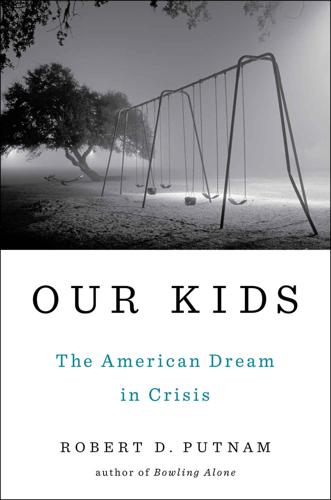
Our Kids: The American Dream in Crisis
by
Robert D. Putnam
Published 10 Mar 2015
More than half of all black children born to less educated parents in 1990 experienced parental imprisonment.57 This period of exploding incarceration is precisely the period in which single-parent families became more and more common in the less educated, lower-income stratum of the population. Correlation does not prove causation, of course, but mass incarceration has certainly removed a very large number of young fathers from poor neighborhoods, and the effects of their absence, on white and nonwhite kids alike, are known to be traumatic, leaving long-lasting scars. They certainly did in David’s life in Ohio and Joe’s life in Oregon. Paternal incarceration (independent of other facts about a child’s background, like the parents’ education and income and race) is a strong predictor of bad educational outcomes, like getting poor grades and dropping out of school.
…
Nicole Shoenberger, “Young Men’s Contact with Criminal Justice System,” National Center for Family & Marriage Research FP-12-01, accessed April 24, 2012, http://www.bgsu.edu/content/dam/BGSU/college-of-arts-and-sciences/NCFMR/documents/FP/FP-12-01.pdf. See also Bryan L. Sykes and Becky Pettit, “Mass Incarceration, Family Complexity, and the Reproduction of Childhood Disadvantage,” ANNALS of the American Academy of Political and Social Science 654 (July 2014): 127–49. 57. Becky Pettit and Bruce Western, “Mass Imprisonment and the Life Course: Race and Class Inequality in U.S. Incarceration,” American Sociological Review 69 (2004): 151–69; Christopher Wildeman, “Parental Imprisonment, the Prison Boom, and the Concentration of Childhood Disadvantage,” Demography 46 (2009): 265–80. 58.
…
On the effects of parental incarceration on children’s mental health, see Kristin Turney, “Stress Proliferation Across Generations? Examining the Relationship Between Parental Incarceration and Childhood Health,” Journal of Health and Social Behavior 55 (September 2014): 302–19; and Sykes and Pettit, “Mass Incarceration, Family Complexity, and the Reproduction of Childhood Disadvantage. 59. For a careful summary of these studies, see McLanahan and Percheski, “Family Structure and the Reproduction of Inequalities.” 60. Sara McLanahan and Gary Sandefur, Growing Up with a Single Parent: What Hurts, What Helps (Cambridge: Harvard University Press, 1994); Wendy Sigle-Rushton and Sara McLanahan, “Father Absence and Child Wellbeing: A Critical Review,” in The Future of the Family, eds.
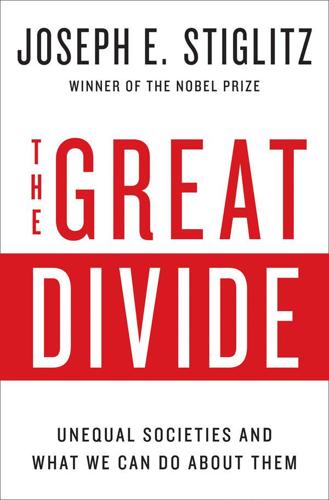
The Great Divide: Unequal Societies and What We Can Do About Them
by
Joseph E. Stiglitz
Published 15 Mar 2015
Discrimination takes new forms; racial profiling remains rampant in many American cities, including through the stop-and-frisk policies that became standard practice in New York. Our incarceration rate is the world’s highest, although there are signs, finally, that fiscally strapped states are starting to see the folly, if not the inhumanity, of wasting so much human capital through mass incarceration. Almost 40 percent of prisoners are black. This tragedy has been documented powerfully by Michelle Alexander and other legal scholars. The raw numbers tell much of the story: There has been no significant closing of the gap between the income of African-Americans (or Hispanics) and white Americans the last 30 years.
…
The essays in this part prepare the way to those in the next, where we look at the causes of this growing inequality. Notes 1. Some have suggested that this is not just an accident but a continuation of policies of discrimination that have long plagued the United States. See, in particular, Michelle Alexander, The New Jim Crow: Mass Incarceration in the Age of Colorblindness, rev. ed. (New York: New Press, 2012). 2. See, for instance, Joseph E. Stiglitz, Freefall: America, Free Markets, and the Sinking of the World Economy (New York: W. W. Norton, 2010). EQUAL OPPORTUNITY, OUR NATIONAL MYTH* PRESIDENT OBAMA’S SECOND INAUGURAL ADDRESS USED soaring language to reaffirm America’s commitment to the dream of equality of opportunity: “We are true to our creed when a little girl born into the bleakest poverty knows that she has the same chance to succeed as anybody else, because she is an American; she is free, and she is equal, not just in the eyes of God but also in our own.”
…
Soaring tuitions and declining incomes have resulted in larger debt burdens. Those with only a high school diploma have seen their incomes decline by 13 percent over the past 35 years. Where justice is concerned, there is also a yawning divide. In the eyes of the rest of the world and a significant part of its own population, mass incarceration has come to define America—a country, it bears repeating, with about 5 percent of the world’s population but around a fourth of the world’s prisoners. Justice has become a commodity, affordable to only a few. While Wall Street executives used their high-retainer lawyers to ensure that their ranks were not held accountable for the misdeeds that the crisis in 2008 so graphically revealed, the banks abused our legal system to foreclose on mortgages and evict people, some of whom did not even owe money.
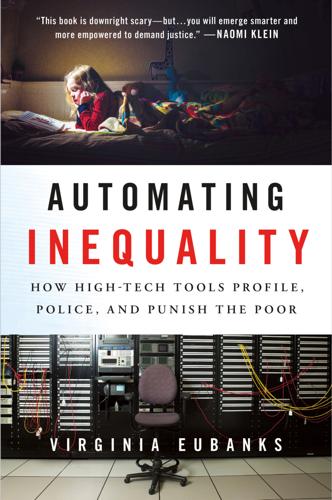
Automating Inequality
by
Virginia Eubanks
And while the unhoused often became part of Occupy encampments, the movement struggled to embrace their leadership and center their issues. The affirmation of all Black lives at the heart of the Black Lives Matter movement has helped to bridge class divides and to mobilize an extraordinary cross-section of people to fight against police brutality, end mass incarceration, and build strong and loving communities. The movement’s founders, Alicia Garza, Opal Tometi, and Patrisse Cullors, are clear that the movement condemns all state violence, not just police violence. As part of its reparations platform, The Movement for Black Lives—a collective of 50 organizations including the Black Lives Matter Network—calls for the establishment of an unconditional and guaranteed minimum livable income for all Black people.
…
Scientific charity policed the lives of poor and working-class people for two generations, with brutal results. Today, the digital poorhouse uses its high-tech tools to infer and predict: to police events that haven’t even happened yet. In my most pessimistic moments, I fear that we are winning the fight against mass incarceration at just the historical moment when the digital poorhouse makes the physical institution of the prison less necessary. Corporations already anticipate the immense cost savings of building a digital prison state without walls. A 2012 Deloitte Touche Tohmatsu report titled Public Sector, Disrupted, for example, sees “transforming criminal justice with electronic monitoring” as an “opportunity for disruptive innovation” in government services.

Doppelganger: A Trip Into the Mirror World
by
Naomi Klein
Published 11 Sep 2023
I couldn’t see how a serious discussion of actual disaster capitalism could avoid getting blended with truly dangerous anti-vaccination fantasies and outright coronavirus denialism. Pipikism had thwarted me. The Green New Reset? More disturbingly, the forces of farcicalization in the Mirror World also seemed to be undercutting nascent and fragile attempts to actually address many of the real crises we face, from climate breakdown to mass incarceration to the ruinously exploitative working conditions that the pandemic laid bare. It seems so distant now, but there were a few months in 2020—a good half a year—when there had been a widespread belief that the pandemic might be a catalyst for a great many of the structural changes our societies had been collectively procrastinating and avoiding.
…
Their story completely ignores the fact that in that summer of 2020, despite mask mandates and social distancing rules, millions of people took to the streets, day after day, night after night, to rise up against police murders of Black people, and to demand a radical reallocation of resources away from mass incarceration and militarized policing and toward educational, housing, and health infrastructure and services that would begin to close the wealth and investment gaps that treat Black communities as de facto second class, even if legalized segregation has ended. If you were a person concerned that Covid marked the dawn of a new age of CCP-inspired mass obedience, surely it would be worth mentioning that the largest protests in the history of the United States happened in the Covid era, with millions of people willing to face clouds of tear gas and streams of pepper spray to exercise their rights to speech, assembly, and dissent.
…
So cutting-edge, scholars have shown, that the systems developed to transport, insure, depreciate, track, control, and extract maximum wealth from this coerced labor shaped many aspects of modern accounting and human resources management. And as Rinaldo Walcott, a scholar of race and gender, writes in his manifesto On Property, “The ideas forged in the plantation economy continue to shape our social relations.” Among those social relations are modern policing, mass surveillance, and mass incarceration. On what else does the claim to exceptionalism rest? The fact that European Jewry was so deeply assimilated and embedded in European culture, so committed to being “civilized,” as it was defined on the continent at the time. Many of those killed were even rich. But what of the established Japanese families sent to internment camps in the United States and Canada in this same period?
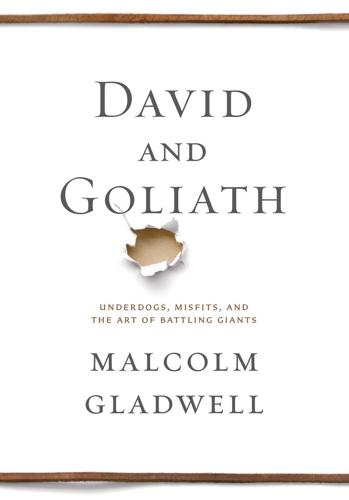
David and Goliath: Underdogs, Misfits, and the Art of Battling Giants
by
Malcolm Gladwell
Published 30 Sep 2013
The charts showing the relationship between age and criminality are from Alfred Blumstein, “Prisons: A Policy Challenge,” in Crime: Public Policies for Crime Control, James Q. Wilson and Joan Petersilia, eds. (ICS Press, 2002), 451–82. Todd Clear’s book on the effects of mass incarceration on poor places is Imprisoning Communities: How Mass Incarceration Makes Disadvantaged Neighborhoods Worse (Oxford University Press, 2007). You can find Clear’s hard-to-get-published paper “Backfire: When Incarceration Increases Crime” in the Journal of the Oklahoma Criminal Justice Research Consortium 3 (1996): 1–10. There is an entire library of studies on the effects of Three Strikes on California’s crime rate.

The Authoritarian Moment: How the Left Weaponized America's Institutions Against Dissent
by
Ben Shapiro
Published 26 Jul 2021
Edsall, “Clinton Stuns Rainbow Coalition,” Washington Post, July 14, 1992, https://www.washingtonpost.com/archive/politics/1992/06/14/clinton-stuns-rainbow-coalition/02d7564f-5472-4081-b6b2-2fe5b849fa60/. 34. Rashawn Ray and William A. Galston, “Did the 1994 crime bill cause mass incarceration?,” Brookings Institution, August 28, 2020, https://www.brookings.edu/blog/fixgov/2020/08/28/did-the-1994-crime-bill-cause-mass-incarceration/. 35. “Barack Obama’s Remarks to the Democratic National Convention,” July 24, 2004, https://www.nytimes.com/2004/07/27/politics/campaign/barack-obamas-remarks-to-the-democratic-national.html. 36. Jonathan V. Last, “Michelle’s America,” Weekly Standard, February 18, 2008, https://www.washingtonexaminer.com/weekly-standard/michelles-america. 37.

The Hidden Half: How the World Conceals Its Secrets
by
Michael Blastland
Published 3 Apr 2019
See the chapter called ‘Big is not small’. 32 This is sometimes known as the contingent theory of history. 33 Also remembering that explorer and biologist Alfred Russel Wallace was coming to similar conclusions to Darwin about evolution through natural selection. 34 For the Beatles, it was a bus. Mick Jagger and Keith Richard met on platform 2 of Dartford station. Is public transport the regularity? 35 Bruce Western and Christopher Wildeman, ‘The Black Family and Mass Incarceration’, Annals of the American Academy of Political and Social Science, vol. 621, 2009, pp. 221–242. 36 J. Freund et al., ‘Association Between Exploratory Activity and Social Individuality in Genetically Identical Mice Living in the Same Enriched Environment’, Neuroscience, vol. 309, 2015, pp. 140–152; and J.
…
McShane et al. ‘Abandon Statistical Significance’, The American Statistician, forthcoming. 9 Unpublished research by the Winton Centre for Evidence and Risk Communication. 10 See the Hamilton Project, Policy Memo, May 2014. Their source: Bruce Western and Christopher Wildeman, ‘The Black Family and Mass Incarceration’, Annals of the American Academy of Political and Social Science, vol. 621, 2009, pp. 221–242. Since then, the incarceration rate has fallen for all groups, but the disparity between black and white may have grown. 11 Tim Harford’s book Adapt: Why Success Always Starts with Failure, London, Little, Brown, 2011 makes a good case for trying to embrace disruption in business and elsewhere. 12 Andrew Gelman and Thomas Basbøll, ‘When Do Stories Work?’
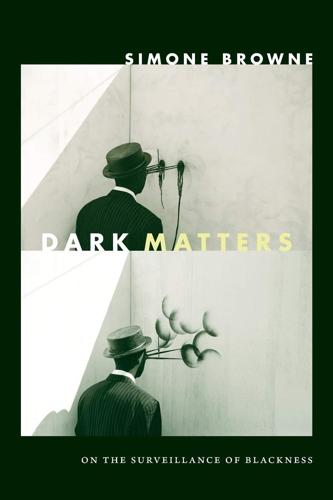
Dark Matters: On the Surveillance of Blackness
by
Simone Browne
Published 1 Oct 2015
In the sense that blackness is often absented from what is theorized and who is cited, it is ever present in the subjection of black motorists to a disproportionate number of traffic stops (driving while black), stop-and-frisk policing practices that subject black and Latino pedestrians in New York City and other urban spaces to just that, CCTV and urban renewal projects that displace those living in black city spaces, and mass incarceration in the United States where, for example, black men between the ages of twenty and twenty-four are imprisoned at a rate seven times higher than white men of that age group, and the various exclusions and other matters where blackness meets surveillance and then reveals the ongoing racisms of unfinished emancipation.30 Unfinished emancipation suggests that slavery matters and the archive of transatlantic slavery must be engaged if we are to create a surveillance studies that grapples with its constitutive genealogies, where the archive of slavery is taken up in a way that does not replicate the racial schema that spawned it and that it reproduced, but at the same time does not erase its violence.
…
Pearson International Airport, 157–59 Lévesque, Maroussia, 157–59 Lewis, Jason Edward, 157–59 Li, Zhou, and Geng (study), 112–13 London Committee of the Society for Effecting the Abolition of the Slave Trade, 45, 47–49 Long, Edward, 95–97 Lose Your Mother (Hartman), 99 Lott, Eric, 81 Louis XV, 36 L’Ouverture, Toussaint, 44 lynching, 38, 67–68, 105, 179n56 Lyon, David, 13, 17–18, 24, 26, 40–41, 76, 121, 143 Macey, David, 165n7 Mad TV, 151 Magnet, Shoshana, 146 Maison des Esclaves, 45 Malcolm in the Middle (TV show), 151 Malcolm X, 3 “Mama’s Baby, Papa’s Maybe” (Spillers), 93 mammy figures, 57–58, 150, 187n63 Mann, Steve, 18, 20–21 Mantracker (TV show), 63–69, 174n1, 174n6 A Map to the Door of No Return (Brand), 31, 45 Marley, Bob, 45, 50, 172n92 Marman, DeShon, 139–40, 156 Marmillion, Valsin Bozonier, 90, 102 Marriot, David, 68 Martin, Erik, 167n51 The Martyrs and the Fugitive (Platt), 96 Marx, Gary T., 14–15 Marxism, 1–2 mash-ups, 124–29 mass incarceration, 10, 13, 40, 67–68 Mathieson, Thomas, 38–39, 174n4 maximum-security society, 15–16 Mayer, Jillian, 163 Mayfield, Brandon, 115, 181n90 McAllistair, Marvin, 81 McClintock, Anne, 97–98 McKittrick, Katherine, 37, 67, 79–80 McVeillance, 20 Mendieta, Eduardo, 183n122 Men in Black (film), 92, 119–22 Mercer, Kobena, 138–39 microresistances, 6 Middelburgsche Commercie Compagnie, 99 Middle Passage, 42, 45, 172n92 migration.

The Liberal Moment
by
Nick Clegg
and
Demos (organization : London, England)
Published 12 Nov 2009
In the latest British Crime Survey, overall crime was up 5 per cent over the year, with acquisitive crimes of theft from the person and domestic burglary both rising, by 25 per cent and 1 per cent respectively.50 So the evidence suggests that there are wider forces at work to explain the ebb and flow of crime in Britain. Yet Labour has the security crisis ignored this evidence and claimed instead that its policy of mass incarceration has worked, even though it is an approach that has brought our prison system to the brink of meltdown. In 1996, 61,114 people were in prison but in July 2008, it was over 83,000. The number of women in prison has nearly doubled, from 2,672 in 1997 to 4,565 in August 2008. We have the highest rate of young people in prison in Europe.51 Yet there is no evidence this is cutting crime: two thirds of people sent to prison re-offend within two years, compared to half of those given a community sentence.

Cities Under Siege: The New Military Urbanism
by
Stephen Graham
Published 30 Oct 2009
Hajjar stresses that the Israeli state’s description of the status of the West Bank and Gaza as sui generis, in order to assert that IHL does not actually apply, is legally indistinguishable from US claims that such law was inapplicable to the invasion of Afghanistan because it was a ‘failed state’.49 She also underlines that both the US and Israeli states have often argued that the statelessness of their enemies automatically means they have no rights whatsoever under IHL. In both cases, it is a legal trick that has been used to legitimize mass incarceration without trial. Moreover, both states have used national laws to authorize legal practices that contravene the norms and rules of IHL, a form of ‘domesticating’ international law for questionable purposes.50 ISRAEL AND THE ‘PALESTINIANIZATION’ OF IRAQ In late 2003, as the US military’s task in Iraq quickly morphed from the relatively simple challenge of destroying an infinitely inferior state military to the challenge of pacifying complex urban insurgencies, Israel’s direct involvement in shaping the doctrine, weaponry and military thinking of US occupying forces grew dramatically – with corresponding pay-offs for the Israeli economy.
…
Such partitioning of Iraqi cities and urban districts by US forces inevitably echo the erection of massive concrete barriers in the West Bank and the increasingly militarized borders and ‘shoot to kill’ zones in and around Gaza. Check-points, buffer zones, enforced identity cards, collective punishments, mass incarcerations without trial, imprisonment of suspects’ relatives, and associated bulldozings of landscapes and buildings deemed to be sheltering enemies – all smack of direct imitation of Israeli policy (whilst also echoing earlier counterinsurgency wars in Algeria, Vietnam, and elsewhere). Such similarities have not been lost on Iraq’s urban residents as they encounter these familiar but shocking new ‘security’ geographies.
…
Under these conditions, the work of an artist like Boeskov becomes a rare chance to actually play the governance game, by opening up a public space for refusing, contesting and challenging these new tracking and recording regimes’.74 COLLABORATION Finally, and perhaps most important, countergeographic strategies which attempt to undermine the new military urbanism must work beyond new assertions of cosmopolitanism or democracy75 They must engage and collaborate with, rather than merely speaking on behalf of, those on the receiving end of urbicidal violence, the ruthless imposition of neoliberal fundamentalism, and the spread of mass incarceration.76 It is necessary to work against the habitual silencing of the non-Western Other because, as we have seen in this book, acts of silencing are often combined with representations that legitimatize the power to penetrate and reorder societies en masse, from afar, through war, through ‘modernization (or, indeed, demodernization), or through the violent imposition of ‘democracy’ or ‘civilization’.
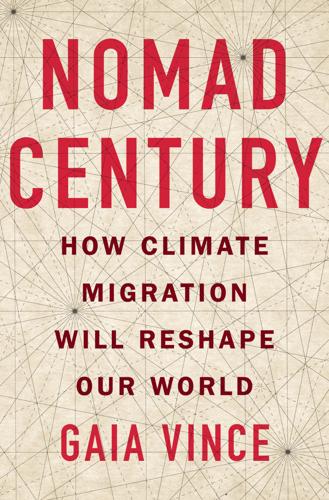
Nomad Century: How Climate Migration Will Reshape Our World
by
Gaia Vince
Published 22 Aug 2022
Over the past decade, promises to reduce immigration and strengthen borders have been a vote winner even for liberal governments in progressive democracies. Meanwhile, populist, nationalist leaders have become ever more draconian in their dealings with foreign workers and refugees. From the mass incarceration of Mexicans in the US, to the hostile environment of Brexit Britain, to the weaponization of Middle Eastern refugees by Belarus in the winter of 2021, the issue of migration has been shaped into a public threat – a crisis – and this has given rise to anti-immigration movements and far-right political parties.
…
Kung peoples Kutupalong refugee camp, Bangladesh Kyrgyzstan Lagos Lake Chad Lammy, David land ownership language/linguistics; language classes for new arrivals; and nation state Laos Las Vegas Latin America: Amazon region; first nation states in; fragile social systems in; impact of climate emergency; mega-El Niño (1997–8); migrants in Parla, Spain; rivers fed by glaciers; rural to urban migration League of Nations Leipzig liberalism Libya Lima livestock farming: by drone; feeding of animals; impact of drought; inhumane treatment of animals; insects as feed; land and water used for; meat and dairy subsidies; need for huge reduction in Ljubljana, Slovenia locust plagues London Macau Maillard chemical reaction maize production, global Malacca Straits Malaysia Maldives Mali Manchester Mangroves Marijuana marine life: fish populations; impact of global warming; starved of oxygen by algae marshes Mayan civilization Mayors Migration Council McCarthy, Kate McCay, Adam McConnell, Ed Medellín, Colombia media, prejudice against migrants Mediterranean Mekong River Melbourne, Pixel Building Merkel, Angela Mesopotamia Met Office, UK, methane Mexico Mexico City Miami Micronesians Middle East migrant cities: the Arctic as new region for; charter cities option; and circulation of community resources; ‘climate haven’ cities; creation of entirely new cities; as cultural factories; environmental sustainability; evidence of decline of tribalism in; expanding existing cities; in the new north; planning future cities; repurposing/adaptation of; successful urban development/planning in; as synergistic; training for rural migrants; water-management infrastructure migrants/immigrants: arrival in family groups; ‘Bangla’ communities in London; contribution to global GDP; creation of active markets by; distinction between refugees and; dominant hostile narratives of in West; ‘economic migrant’ term; evidence of decline in hostility towards; harnessing potential of; immigrant inclusion programmes; as indentured labour; internal migration; Boris Johnson’s language on; language classes for; levels of patriotism of; living in slums/shanty towns; mentoring and support for; as percentage of global population; racist and prejudicial tropes about; returning to origin countries; seasonal; situations of appalling abuse/danger; state-sponsored support needed for migration: and advantageous genetic modifications; barriers to today; as benefitting everyone; controlled by city authorities; as deeply interwoven with cooperation; and diversified genes/culture; evidence of decline of anti-immigrant feeling; free movement ends in twentieth century; and historic climate change; historical; human displacement at record levels; inherited routes and channels; and mental illness; as not reduced by aid; reluctance to move; and skin colour; of stuff/resources; as survival strategy used widely in nature; as valid and essential part of human nature; world’s major cities created by migration, arguments against/fears around: fears around crime and violence; and jobs; long evolutionary roots to prejudice; in the media; populist politicians; pressure on inadequate host services; prospect of radical change; resting on true/pure national identity idea; security/terrorism issues; and welfare systems migration, climate-driven: Covid cooperation as hopeful example; due to flooding; and geopolitical mindset; global agreement on pathways needed; hypothetical scenarios/models enabling; as inevitable; Kiribati’s ‘migration with dignity’ programme; mass movement already under way; move to higher elevations; national and regional relocation schemes; need for strong nation-states; need to plan practically now; numbers affected today; predicted future numbers; and Refugee Convention (1951); risk of domination by wealthy elites; as solution not problem; speed of movement of climate niches; water issues to be main driver migration, urban; access to health and education; community sponsorship models; family retention of farmland; and intensive infrastructure development; as most effective route out of poverty; population fall due to; role of business in migrant integration; from rural areas; successful management of; as unplanned and iterative; in the West (1850–1910); and workforce shortages in global north Miller, David mineral supples/extraction mining industry Mongla (Bangladesh) Mongolian steppes Morocco Mumbai, mussels Myanmar Nairobi Nansen, Fridtjof nation state: Anderson’s ‘imagined communities’; claims that country is ‘too full’; first created by revolutionaries; and genetic variation; and geopolitical mindset; and language; leases/purchases of territory by; model as often failing; nationality as arbitrary line drawn on map; need for reinvention of; as norm after First World War; and system of borders; translocation of existing nation states National Health Service (UK) national identity: and anti-immigrant feeling; and bureaucracy; creation of first nation states; ethnic and cultural pluralism as the norm; evidence of decline of tribalism; feelings of loss of/decline; and ideology of nationalism; lack of political meaning before end of eighteenth century; nation state as norm after First World War; need to change immigration narrative; patriotism of welcomed migrants; predicated on mythology of homogeneity; and supranational identity; transition to pan-species identity Nauru Neanderthals negative emissions technologies Netherlands; Delta Programme; Energiesprong house insulation Neukölln (Berlin) New Orleans New Story (nonprofit) New York City; ‘Big U’ seawall project; NYCID programme New Zealand; Managed Retreat and Climate Adaptation Act Newtok, Alaska Nicaragua Niger, West Africa Nigeria nitrogen Noem, Kristi nomadic pastoralism Nordic nations Normans North Korea Northern Ireland Northwest Passage Norway Notre Dame, University of, Global Adaptation Initiative nuclear power; fusion reactor technology Nusantara (Borneo) Nuuk (Greenland) Obayashi (Japanese firm) oceans/seas: acidification; as energy source in north; and enhanced weathering techniques; global warming absorbed by; impact of 4° C-hotter world; impact of carbon emissions; jellyfish explosions; long-distance migratory voyages; marine heatwaves; and migratory raiders; Miocene Era sea levels; North Atlantic currents; Northwest Passage; nutrient and oxygen circulation; ocean fertilization; release of carbon dioxide; rise in sea levels; sea grasses; sourcing food from; toxic algae blooms oil industry OmniTrax (US freight company) Ottoman Turks Overjeria, Bolivian village Paine, Thomas Pakistan Palaeo-Eskimos, Canadian palaeontology Palestine Panama Papua New Guinea Paris climate meeting (2015) Parla (near Madrid) passports Patagonia Patel, Priti patriotism Pearl River Delta Peatlands people-traffickers Peri, Giovanni permafrost, infrastructure built on Persian Gulf Peru Pfizer vaccine Philippines; nurses from Philistines Photios of Constantinople Phuket, Thailand Phytoplankton plains/steppes plants/vegetation: destruction of by wildfires; genetic tools to help adaptation; grass verge areas; heat damage to crops; during last ice age; move to plant-based diet; planted to increase crop yields; replanting of; rooftop vegetation/gardens plastic waste Pleistocene epoch Poland political and socioeconomic systems: in Africa; benefits to democracy of migration; cooperation during Covid upheaval; corporate food system; democracy based on inclusiveness; development of governance systems; end of multinational empires; erosion in the powers of global bodies; failure over decarbonization; far-right political parties/groups; fossil fuels as embedded in; geopolitical constraints; geopolitical implications of farming’s shift north; global institutions with enforceable powers needed; and ideal temperature question; inequality as failure of policy; institutional bias over skin-colour; institutional trust levels; international diplomacy; move from feudalism to centralized monarchy; nation-state model spreads; need for global planning over migration; need for redistributive policies; need for strong nation-states; new regional unions option; pledge of ‘strong borders’ as vote-winner; possible new political institutions/structures; post-war institutions and inequality; strong/stable institutions in north; translocation of existing nation states; and transnational rivers/’water towers’; vested interests in the rich world; Westphalian state system pollinators pollution Polynesians populist politicians Portugal postcolonial diaspora poverty see inequality and poverty Próspera ZEDE (embryonic charter city) Prussia Puerto Rico Putin, Vladimir Pygmies Qatar race and ethnicity: and anti-immigrant feeling; deliberately prejudicial policies; and demographic change; European colonialism; fallacy of biological ‘race’; heat related inequalities; unconscious bias in society; white supremacists rain gardens rainfall: altering patterns of; captured by roof gardens/storage; seeding of clouds rare earth metals Raworth, Kate, Doughnut Economics, recycling Refugee Convention (1951) refugees: from Afghanistan; barred from working; Burmese Rohingya in Bangladesh; climate change not in legal definition of; distinction between migrants and; EU seeks quota system for; hostile rhetoric towards; judgemental terms used about; and Nansen passports; privately sponsored; from Syrian crisis (2015–16) see also asylum-seekers renewable power production: as adding to, not replacing, fossil fuels; artificial light delivered by LEDs; hybrid hydro-solar power concept; hydroelectric plants; as leading job creator; and net zero targets; phenomenal rise in; refrigerant units in global south; solar-powered closed-cycle farming; storage technology; zero-carbon new-builds Republic of the Congo restoring our planet’s habitability; biodiversity loss; ‘blue carbon’; climate change-biodiversity loss as linked; cooling of global temperatures; decarbonizing measures; enhanced weathering techniques; future repopulation of abandoned regions; genetic tools to help species adapt; as global, labour-intensive task; natural restoration after human abandonment; nature guardianship in tropical regions; need for speed; negative emissions technologies; ocean fertilization; paying communities to protect ecosystems; regenerative agriculture; replanting of vegetation; solar radiation reduction tools, see also geoengineering retail services rice; SRI cultivation process rivers: drying out of; fed by glaciers; heavier rainfall as increasing flows; lack of in Gulf region; pollution discharged into; transnational Roatan, Caribbean island of Rocky Mountains Rome, ancient Romer, Paul Rotterdam rural living: and depopulation crisis; flight from drought/heat hit areas; impact of flooding; massive abandonment of in coming decades; migration to urban areas; and population expansion in Africa; remittances from urban migrants; as single largest killer today; and water scarcity Russell, Bertrand Russia: and charter cities model; depopulation crisis; economic benefits from global heating; economic sanctions on; expansion of agriculture in; infrastructure built on permafrost; invasion of Ukraine (2022); mega-heatwave (2010); migrant workforce in east; as potential area for charter cities; small-scale modular nuclear reactors in; water resources in Rwanda: Hutus and Tutsis in; special protective zones in; and UK asylum-seeker plan Salla, Finnish town of sanitation Saudi Arabia Saunders, Doug Sawiris, Naguib Scandinavia scientific discovery Scotland sea grasses Seasteading movement Seven Dials, London sex industry Shanghai sharing/circular economy Shenzhen Shyaam a-Mbul Siberia silicates Silicon Valley Silk Road Singapore sinkholes Skellefteå, Sweden slavery Slovenia slum dwellers; conditions at Kutupalong refugee camp; in Lagos; in Lima; and urban heat island effect; vulnerability to flooding social class/hierarchies: and anti-migrant attitudes; barriers erected against migration of the poorest; despair and anger of ‘left behind’ natives; development of; and gentrification; middle class migrants; myth of meritocracy; prejudice as often defensive fear-based reaction social networks; benefits of trade; cities as focal points for trade; Dunbar number; entangled ancestries/identities; forged by migrants; and knowledge flow; loss due to gentrification; migrants in family groups; and mistrust of outsiders; need for inclusive governance; and reluctance to migrate; in slum areas; social clustering of migrants; synergy created by; and unjust hierarchies; welcoming of strangers to social services see welfare systems and social services socioeconomic system see political and socioeconomic systems soil: ‘biochar’ use in; biomatter decay in; as carbon store; impact of heat on; impact of wildfires on; integrated soil-system management in China; and overuse of fertilizers; and perennial cereals; use of silicates in solar power Solar Radiation Management Governance Initiative South Dakota South Korea Southern Ocean Soviet Union soya production Spain Spitalfields, London stateless persons Sudan sulphate cooling concept Sumerian civilization Sunak, Rishi Sweden Switzerland Syrian crisis (2015–16) Tabasco, Mexican state of Tabassum, Marina Tahiti Tajikistan Tanzania Tasmania textiles industry Thailand Thepdet, Supranee thermal wallpaper Thiel, Peter Thirty Years War Thwaites Glacier Tokyo Toltecs Tong, Anote Tourism trade and commerce; cities as focal points for networks; free movement of goods; free trade; global trade deals; origins and development of transport infrastructure: aviation; decarbonizing of; electric-powered vehicles; equitable access to; in global south; and limitations of battery weight; problems due to extreme heat; sail power as due a revival; in successful migrant cities; use of foot or pedal trees: American chestnut trees; cycles of burn and recovery; as ‘emissions offset’; giant sequoias; ‘green wall’ tree-planting projects; vine-like lianas Trestor, Anne Marie tropical regions: benefit of solar cooling idea; impact of climate emergency; nature guardianship in; population rise in Trump, Donald Tsipras, Alexis tundra Turkey Turkmenistan Tuvalu UAE Uganda Ukraine: maize exports; Russian invasion of (2022) United Kingdom: ageing population in; anti-immigrant feeling in; Brexit; Commonwealth Immigrants Act (1962); and Covid pandemic; destruction of peatlands in; flood defences in London; historical migration to; history of granting asylum; ‘hostile environment’ policy; impact of climate emergency; and inevitability of change; low statutory sick pay level; migratory shift to southeast; planned fusion reactors; planning laws; renewable power production; Rwanda proposal for asylum-seekers; slow processing of asylum claims; small boats in English channel; wet-farming in United Nations: Global Compact for Safe, Orderly and Regular Migration (2018); HCR; Human Rights Council; International Labour Organization; International Organization for Migration; and Nansen Passport concept; suggested new global migration body United States: Chinese Exclusion Act (1882); ‘climate-proof’ cities in; as created from global migrants; dam removal in; demographic change in; and depopulation crisis; and extreme La Niña events; and future climate problems; Green New Deal; heat related inequalities; Homestead Act; immigrant-founded companies; impact of climate emergency; indigenous communities; and inevitability of change; lack of universal healthcare in; leases/purchases of territory by; low spending on social services; mass incarceration of Mexicans in; meat industry in; migration to since 1980s; and mineral extraction; municipal codes; net zero commitment; nineteenth century migration to; patriotism of migrants; refugee children in detention camps; resettlement project in Louisiana; rural to urban migration; seeding of clouds in; Trump’s work visa restrictions; ‘urban visas’ in; yield gap in university towns urban development/planning: Bijlmermeer (outside Amsterdam); and elderly populations; and inclusive government policies; machizukuri process in Tokyo; need for integrated high-rise/low-rise; new canals/water features to combat heat; parks/squares/public spaces; planning and zoning laws; slum clearance programmes; social capital investment in cities USAID Uttarakhand, Indian state Uzbekistan Venezuela Venice Vermont Vietnam Vikings war/violent conflict: over water scarcity; triggered by climate upheaval water, fresh: circulated, cleaned, stored and reused; closed-circuit water recycling; conflict triggered by scarcity; crop irrigation; desalination techniques; drip-irrigation systems; evaporative losses; geopolitics of water control; held in glaciers; impact of heat on supplies; importance of new water policies; inland lake systems; need for urban underground reservoirs; new waterways and river diversions; pumping of groundwater; purified sewage recycled; as resource anxiety of this century; running dry of aquifers; salination of groundwater; used for livestock; water pricing/tax policies Waterloo, Ontario weather systems: cyclonic storms in Bay of Bengal; El Niño events; extreme La Niña events; extreme weather events; Intertropical Convergence Zone (ITCZ); monsoon regions; trade winds welfare systems and social services: access to in migrant cities; and arguments against migration; and bureaucracy; despair and anger of ‘left behind’ natives; intensive infrastructure development needed; low spending on in USA; migrant access to; migration as benefitting social care systems; punitive restrictions on new migrants Westphalia, Peace of (1648) Whales wheat production, global Wilson, E.
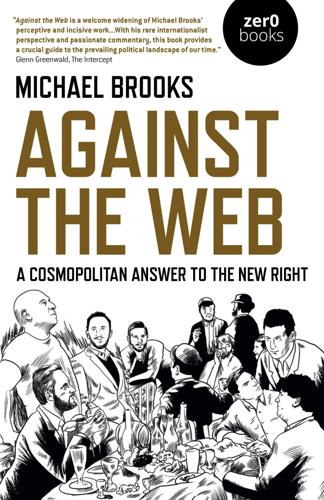
Against the Web: A Cosmopolitan Answer to the New Right
by
Michael Brooks
Published 23 Apr 2020
(The media’s habit of treating those economic concerns as an exclusively “white” issue is maddening given that by any measure the effects of deindustrialization have come down hardest on the rustbelt’s black population. See Malaika Jabali’s work on Wisconsin in 2016.) Nonetheless, it’s hard not to imagine that Clinton’s repellent history on issues like the mass incarceration of “superpredators” didn’t play a role in adding to the disgust and indifference that resulted in non-white voter turnout being much lower than it was in 2012, or that at least a few voters in Dearborn didn’t care that Sanders was less likely than Clinton to kill their relatives in future drone strikes.
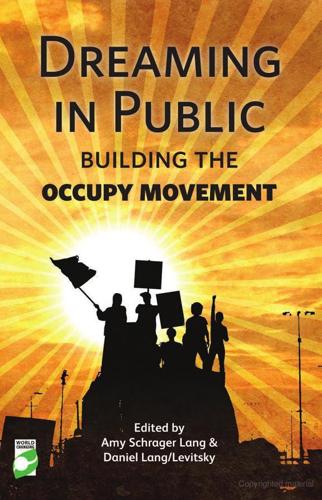
Dreaming in Public: Building the Occupy Movement
by
Amy Lang
and
Daniel Lang/levitsky
Published 11 Jun 2012
As veterans of the Civil Rights, Women’s, Peace, Environmental, LGBTQ, Immigrant Justice, labor rights and other movements of the last 60 years, we are convinced that Occupy Wall Street is a continuation, a deepening and expansion of the determination of the diverse peoples of our nation to transform our country into a more democratic, just and compassionate society – a more perfect union. We believe that the rapidly expanding and racialized impoverishment of our population, the rise of mass incarceration, the celebration of the culture of war and violence, all create the bitter divisions among the peoples of our nation and throughout the world. Indeed, we believe such developments among us ultimately diminish the quality of life for all humanity, beginning with our own children who watch as we lower the priority for their care and education.
…
One of my POC Caucus comrades eventually couldn’t take it any more and spoke out of ‘process’ to explain that raising these sorts of concerns is exactly why we exist as a caucus at spokes council. Because communities of color have suffered violence for generations – the violence of white supremacy, the violence of the police, the violence of mass incarceration, the violence of poverty. Again, no one listened to what she was saying but only put up their ‘point of process’ hand signs and rolled their eyes. I was talking about it with another friend from the POC Caucus on the phone the next day, and he felt like we have lost all good faith in the spokes council.
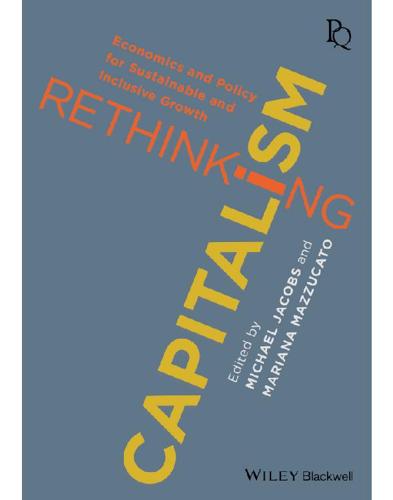
Rethinking Capitalism: Economics and Policy for Sustainable and Inclusive Growth
by
Michael Jacobs
and
Mariana Mazzucato
Published 31 Jul 2016
(This cannot, of course, happen in the Cobb–Douglas production function so beloved by macroeconomists.) But I have seen no evidence for this sudden change in technology—and no theory for why this might have happened. 40 America’s mass incarceration policies have also been an important instrument of discrimination. See M. Alexander, The New Jim Crow: Mass Incarceration in the Age of Colorblindness, New York, The New Press, 2010. 41 For a recent account of this literature, see K. Basu, Beyond the Invisible Hand: Groundwork for a New Economics, Princeton, NJ, Princeton University Press, 2010. See also J.
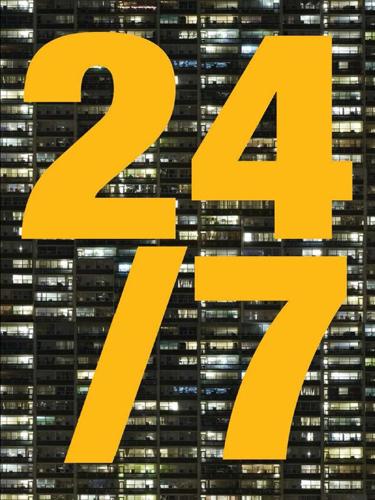
24/7: Late Capitalism and the Ends of Sleep
by
Jonathan Crary
Published 3 Jun 2013
Obviously, the magnitude of the anti-systemic insurrections in Asia, Latin America, and the urban ghettos of the US demanded the massive use of interconnected forms of economic, penal, and military violence over this period—forms of violence that continue to evolve in the present, as a new wave of struggles and “springtimes” has begun to coalesce. For example, the current mass incarceration of millions of African-Americans has its origins in the aftermath of the urban uprisings of the 1960s. But a parallel counter-insurgency, taking shape in the late 1970s, was primarily ideological, although sweeping in scope. Its target was a tentative constellation of forms of sociality that needed to be destroyed or deformed to produce acquiescence in the face of the global shift to more brutal forms of finance capital and the expanding monetization of everyday life.
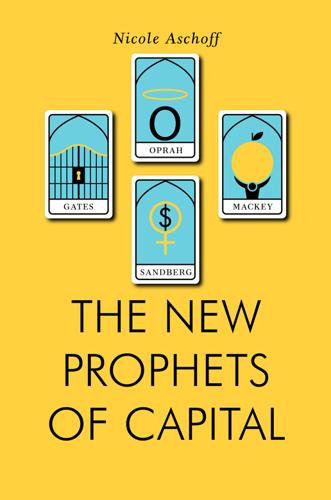
The New Prophets of Capital
by
Nicole Aschoff
Published 10 Mar 2015
Feminist, civil rights, and environmental activists kept fighting, but the powers that be moved with a new, unified force to crush dissent: Organized labor was shaken and class-based movements were discredited. The War on Drugs, followed later by Bill Clinton’s Three Strikes law, fuelled an unprecedented trend of mass incarceration that overwhelmingly targeted black and Hispanic men; and the rise of the radical right brought women into direct conflict with each other, focusing feminist battles on holding ground already won rather than embracing more encompassing visions of liberation. The balance of power that had seemed, for a moment in the early 1970s, to favor working people shifted definitively in favor of capital.
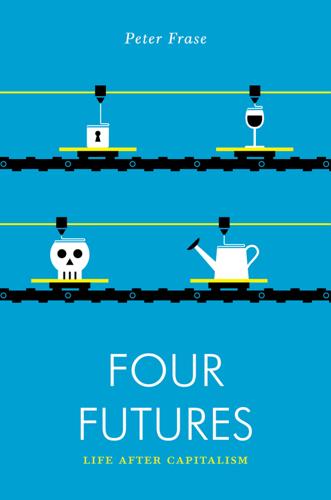
Four Futures: Life After Capitalism
by
Peter Frase
Published 10 Mar 2015
At this point these models of “future crime risk” start to come uncomfortably close to the dystopia of the Philip K. Dick story (and later Tom Cruise movie) The Minority Report, in which a “Precrime” division arrests people for crimes they have not yet committed. Today even some on the right are questioning mass incarceration, sometimes simply on budgetary grounds. But barring any effort to actually provide for either prisoners or the workers who benefit from the prison boom, what is to become of all these surplus populations? Sometimes, those who make it to prison are the lucky ones. Steeped in a culture that is quick to resort to violence, police forces routinely maim and kill those suspected of minor crimes or no crime at all.
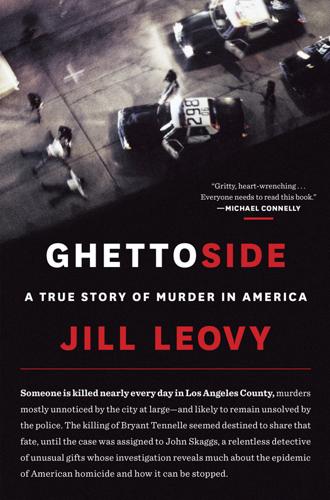
Ghettoside: A True Story of Murder in America
by
Jill Leovy
Published 27 Jan 2015
Many thanks to epidemiologist Isabelle Sternfeld for years of help with these records. 21 violent crime was plummeting in Los Angeles County Countywide homicides reached a high of 2,113 deaths in 1992 and had fallen to 1,085 in 2006, according to statistics provided at the author’s request by Craig Harvey, Los Angeles County coroner’s office. Crime would, of course, fall much lower after that. 22 “progressives tend to avoid or change the subject” James Forman, Jr., “Racial Critiques of Mass Incarceration: Beyond the New Jim Crow,” Faculty Scholarship Series 3599 (2012): p. 128. 23 “The familiar dismal statistics” Randall Kennedy, Race, Crime and the Law (New York: Vintage, 1998), p. 145. CHAPTER 2 1 such calls, at least in this year, came more than once a day, on average There were 835 shooting victims in South Bureau in 2007, and 1,016 in 2006—Los Angeles Police Department, Crime and Arrests Weekly Statistics, Dec. 31, 2007.
…
Murphy, “Research and Statistics Note, No. 2014-01: African Americans: Description of Social Security and Supplemental Security Income Participation and Benefit Levels Using the American Community Survey” (Social Security Administration, Official of Retirement and Disability Policy, Office of Research, Evaluation and Statistics, January 2014), p. 13. SELECT BIBLIOGRAPHY Alexander, Michelle. The New Jim Crow: Mass Incarceration in the Age of Color Blindness. New York: New Press, 2010. 2012 edition. Anderson, Elijah. Code of the Street. New York: W.W. Norton, 1999. Ayers, Edward L. Vengeance and Justice: Crime and Punishment in the 19th Century American South. New York: Oxford University Press, 1984. Berg, Manfred.
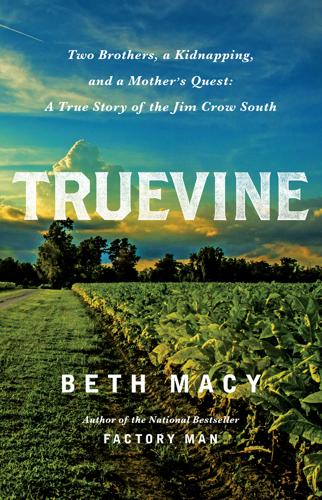
Truevine: Two Brothers, a Kidnapping, and a Mother's Quest: A True Story of the Jim Crow South
by
Beth Macy
Published 17 Oct 2016
Description of tug-of-war over brothers: “Circus United a Negro Family,” Roanoke Times, Oct. 15, 1927. Black and white incarceration rates: “Ratio of proportion admitted to prison to share of population, by race, 1926–1993,” Figure H, and other analyses, Robynn J. A. Cox, “Where Do We Go from Here? Mass Incarceration and the Struggle for Civil Rights,” Economic Policy Institute, Jan. 16, 2015: http://www.epi.org/publication/where-do-we-go-from-here-mass-incarceration-and-the-struggle-for-civil-rights/. “disturbed showmen tore their hair”: Scott Hart, “Vexing Problem Develops over Two Circus Albinos,” Roanoke Times, Oct. 17, 1927. Chapter Ten. Not One Single, Solitary, Red Penny Interviews: Nancy Saunders, Al Stencell, Greg Renoff, Harvey Lutins, Nancy Barbour, Melville “Buster” Carico, T.
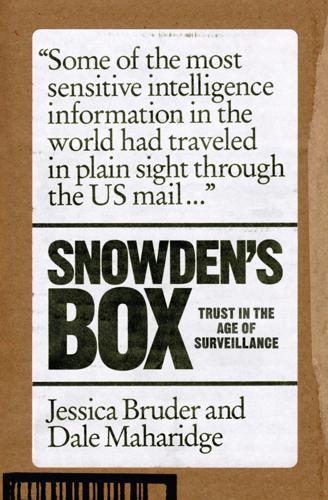
Snowden's Box: Trust in the Age of Surveillance
by
Jessica Bruder
and
Dale Maharidge
Published 29 Mar 2020
Four months after the first Snowden leaks, the literary organization PEN surveyed American writers on how the revelations impacted their lives. The results were unsettling. Writers worried they were being monitored. Many admitted to censoring themselves or feeling reluctant to write, speak, or do research about politically sensitive subjects online. Topics that might make them targets, they speculated, included mass incarceration, the drug wars, sexual assault in the military, anti-American sentiment overseas, the Occupy movement, and the NSA leaks themselves. “I have felt that even to comment on the Snowden case in an email would flag my email as worthy of being looked at,” one anonymous respondent wrote. PEN’s researchers were disturbed by these responses.

Literary Theory for Robots: How Computers Learned to Write
by
Dennis Yi Tenen
Published 6 Feb 2024
For instance, large, complicated social problems such as abusive language or racism can manifest in the constellation of certain often-repeated expletives or negative stereotypes. Cleverly, the computer can distinguish the two meanings of race based on its contextual location. Race words found near speed records and distances mean something different from those found near disparity or mass incarceration. Not so cleverly, a computer that “learns” from biased language—everything ever written—may continue to spread abuse or racism it has learned from humans. Despite its shortcomings, a vectorized model of language has allowed machines to begin making complex inferences, related to the meaning of the words they don’t really “know.”
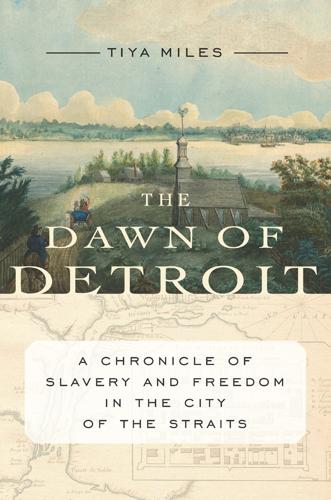
Dawn of Detroit
by
Tiya Miles
Published 13 Sep 2017
Our Department of Afroamerican and African Studies was centrally involved in this activity along with faculty in Social Work, Sociology, Urban Planning, and the Residential College, so I sat in on these discussions with urban planners, sociologists of the city, and twentieth-century urban historians, which heightened and sharpened my interest in Detroit. Although my peers were discussing postindustrial society, food deserts, green spaces, mass incarceration, and the pitfalls of gentrification, I could see links between this modern (and postmodern) Detroit and the Detroit of the colonial and early American eras when slavery was practiced. I began to visit Detroit museums and historic sites in southeastern Michigan to try to feel the outlines of a story I might tell even as my imagination was captured by a quotation by a colleague involved in the Detroit School discussions, the historian Charles Bright, who had written the following about Detroit history in an article in the Journal of American History: The dominant historical discourse [on Detroit] is one of rise and fall, spiked by an immense nostalgia for the city that once (briefly) was.
…
Peter Onuf has argued that southerners could accept the slavery exception in the Northwest because they expected to benefit economically through commercial exchange with the region as it grew. Peter S. Onuf, Statehood and Union: A History of the Northwest Ordinance (Bloomington: Indiana University Press, 1987), 46–49, 110–11. 4. Northwest Ordinance (1787), www.ourdocuments.gov. Accessed May 5, 2015. 5. Heather Ann Thompson, “Why Mass Incarceration Matters: Rethinking Crisis, Decline, and Transformation in Postwar American History,” Journal of American History (December 2010): 703–734, on prison labor see 717–23. 6. David G. Chardavoyne, “The Northwest Ordinance and Michigan’s Territorial Heritage,” in Paul Finkelman and Martin J. Hershock, eds., The History of Michigan Law (Athens: Ohio University Press, 2006), 20. 7.
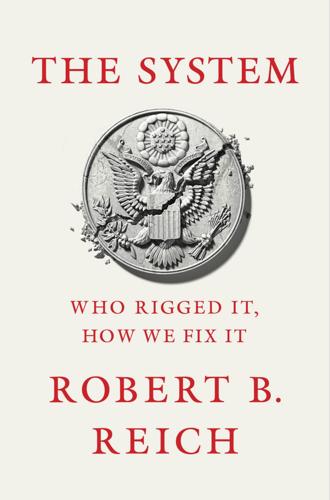
The System: Who Rigged It, How We Fix It
by
Robert B. Reich
Published 24 Mar 2020
It is difficult to imagine the bottom 90 percent joining together in a multiracial, multiethnic coalition of working-class, poor, and middle-class Americans at a time when white voters without college degrees are repeatedly told that the country has been taken over by undocumented immigrants, Latinos, African Americans, and a “deep state” of coastal liberals, intelligence agencies, and the mainstream media. Trump and other demagogues are masterful at telling big lies, and they are backed by the oligarchy’s big money. It is also difficult to imagine such a coalition emerging when people of color are threatened by mass incarceration and mass deportation, and when women face new restrictions on reproductive freedom. Fear for oneself and one’s family is a potent deterrent to collective action. Creating such a coalition will therefore require something more than class consciousness. It will necessitate a common understanding of what it means to be a citizen with responsibilities for the greater good.

The Ones We've Been Waiting For: How a New Generation of Leaders Will Transform America
by
Charlotte Alter
Published 18 Feb 2020
The bill he signed to “end welfare as we know it” helped some welfare recipients find jobs, but cut off desperately needed cash for families stuck in deep poverty. His 1994 crime bill had a few redeeming qualities (including the assault weapons ban and the Violence Against Women Act) but ultimately accelerated the mass incarceration of a generation of young black men. Boomers shored up Social Security for just long enough so that they’ll have it when they retire—the Social Security Trust Fund is expected to be exhausted by 2035, when the youngest boomers will be in their seventies and the average millennial is still hard at work.
…
Some observers critiqued Black Lives Matter for not having a specific set of demands or a foundational document, but in the age of social media, the rules had changed: “Twitter is our text,” Cullors told me in 2015. The movement was an expression of rage: for Trayvon Martin, and later for Michael Brown and Eric Garner and every other unarmed black man killed in America. But it was also about rage at what scholar Michelle Alexander called “the New Jim Crow,” a system of mass incarceration that disproportionately targeted black people, overwhelmingly young black men. By 2015, more than 9 percent of black men between twenty and thirty-four were incarcerated, compared to less than 2 percent of white men the same age. Even as crime rates stayed low in American cities, the school-to-prison pipeline extended across the country.
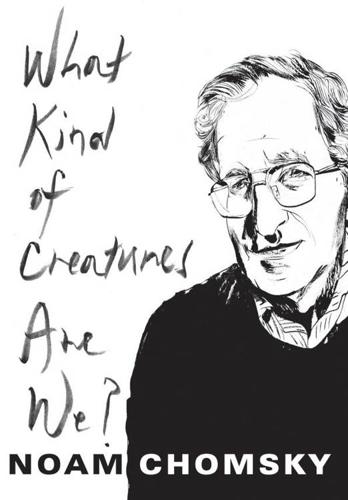
What Kind of Creatures Are We? (Columbia Themes in Philosophy)
by
Noam Chomsky
Published 7 Dec 2015
Kerber, “Why Diamonds Really Are a Girl’s Best Friend: Another American Narrative,” Dædalus 141, no. 1 (2012): 89–100; and Taylor v. Louisiana, 419 U.S. 522 (1975). On African Americans, see Douglas Blackmon, Slavery by Another Name: The Re-Enslavement of Black Americans from the Civil War to World War II (New York: Doubleday, 2008); and Michelle L. Alexander, The New Jim Crow: Mass Incarceration in the Age of Colorblindness, rev. ed. (New York: New Press, 2012). On aliens, see Rasul v. Myers, Court of Appeals, District of Columbia Circuit, January 2008, April 2009. On corporations, see sources in Noam Chomsky, Hopes and Prospects (Chicago: Haymarket, 2010), 30–31; and David Ellerman, “Workplace Democracy and Human Development: The Example of the Postsocialist Transition Debate,” Journal of Speculative Philosophy 24, no. 4 (2010): 333–53. 29.
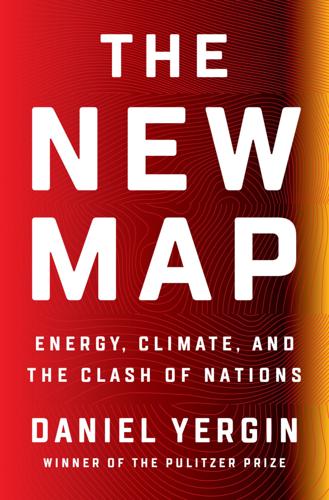
The New Map: Energy, Climate, and the Clash of Nations
by
Daniel Yergin
Published 14 Sep 2020
Following a series of terrorist attacks that left scores dead, Beijing has clamped down with great severity. It has established large camps for Uighurs and other Muslims, holding perhaps as many as a million people. Chinese officials describe them as “education and training centers.” Critics describe them differently—as “mass incarceration” and indoctrination. These camps have become a focus of controversy and stimulated much international protest. After the U.S. House of Representatives passed a bill calling for sanctions and restrictions on transactions with Chinese companies involved in the region, the Foreign Ministry in Beijing denounced the bill as “gross” interference “in China’s internal affairs” and said that China’s policy is “about fighting violence, terrorism and separatism” and “advancing deradicalization.”
…
House of Representatives Passing the Uyghur Human Rights Policy Act of 2019,” December 4, 2019; Jonathan D. Pollack and Jeffrey A. Bader, Looking Before We Leap: Weighing the Risks of US-China Disengagement, Brookings Foreign Policy Brief, July 2019; Lindsay Maizland; Lucy Hornsby, “Chinese Official Defends Mass Incarceration of Uighurs,” Financial Times, March 12, 2019; Steven Lee Myers, “China Defends Crackdown on Muslims, and Criticizes Times Article,” November 18, 2019 (“fakery”); Sheena Chestnut Greitens, Myunhee Lee, and Emir Yazici, “Counterterrorism and Preventative Repression: China’s Changing Strategy on Xinjiang,” International Security, Winter 2019/2020, pp. 9–47. 7.
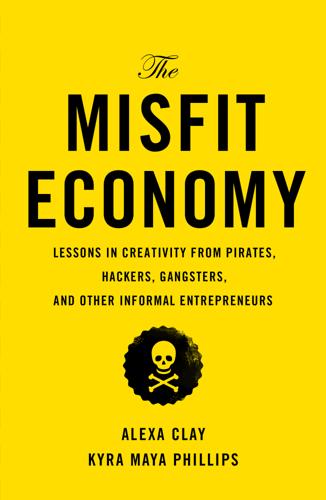
The Misfit Economy: Lessons in Creativity From Pirates, Hackers, Gangsters and Other Informal Entrepreneurs
by
Alexa Clay
and
Kyra Maya Phillips
Published 23 Jun 2015
Barbato, “Testing Prison Inmates for Entrepreneurial Aptitude,” May 19, 2004, Hofstra University and Rochester Institute of Technology. 2. Linda Anderson, “Troubled Teenagers Equal Entrepreneurial Success,” Financial Times, March 18, 2013, http://www.ft.com/cms/s/2/a8c08352-8c9b-11e2-aed2-00144feabdc0.html#axzz3IrN7GYCD. 3. Peter Wagner and Leah Sakala, “Mass Incarceration: The Whole Pie,” Prison Policy Initiative, March 12, 2014, http://www.prisonpolicy.org/reports/pie.html. 4. Matthew C. Sonfield, “From Inmate to Entrepreneur: A Preliminary Analysis,” Hofstra University. 5. Raphael Minder, “In Spain, Jobless Find a Refuge Off the Books,” New York Times, May 16, 2012, http://www.nytimes.com/2012/05/17/world/europe/spaniards-go-underground-to-fight-slump.html?
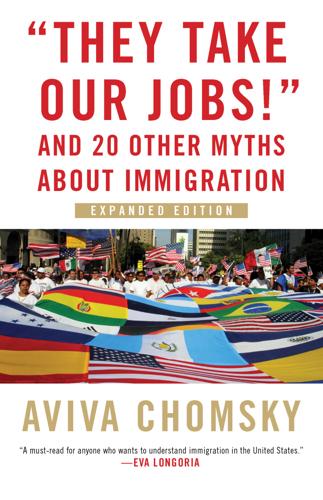
"They Take Our Jobs!": And 20 Other Myths About Immigration
by
Aviva Chomsky
Published 23 Apr 2018
They believe the risk at home is greater.”7 DONALD TRUMP, IMMIGRATION, AND THE WORKING CLASS It wasn’t that big a jump from President Bill Clinton’s criminalization of immigrants with the 1996 Illegal Immigration Reform and Immigrant Responsibility Act (IIRIRA) to Obama’s recriminalization with humanitarian exceptions, to candidate and then president Donald Trump’s repeated references to immigrants as “rapists,” “criminals,” “bad hombres,” and “bad dudes.” Nativism had become one arm of a multifaceted project of the criminalization of people of color, with mass incarceration, expansion and militarization of the police, and the creation of a climate of fear so as to justify the growth and institutionalization of a repressive apparatus at home and abroad. As I already argued in the book, anti-immigrant sentiment responds more to economic anxiety and to media and politicians’ fanning its flames than it does to actual facts about immigration and immigrants.

A Generation of Sociopaths: How the Baby Boomers Betrayed America
by
Bruce Cannon Gibney
Published 7 Mar 2017
While society had better options, the Boomers favored ever-stricter laws and processed ever more people into the prison system, the spectacle of law and order always being more satisfying to Boomer psychology than any reality of justice or efficacy. While Reagan often gets the blame for the rise of imprisonment, it was Boomers who (frequently in bipartisan accord) passed the most odious laws and Boomer administrations that presided over the most spectacular and fruitless phases of mass incarceration. In the 1960s and 1970s, the argument for expanding incarceration had a certain reasonable dimension, because the United States had problems with crime—young people have a higher propensity to commit crime, as do antisocial people, and the United States was well supplied with both: Boomers.
…
What Boomers are responsible for is the explosion in the prison population, vastly increasing the numbers of those exposed to institutional injustice while providing no real path for these prisoners to become self-sufficient on release. As ex-convicts bleed into the probation system and then the general public, the costs will be disproportionately borne by current and future taxpayers, not the Boomers who presided over mass incarceration in the first place. One notable perversity of Boomer justice is the creation of a police state by Leftists of the very same generation so heavily associated with protesting the “pigs” during the Vietnam War, the 1968 Democratic Convention, and so on, their supposedly libertarian cogenerationalists, and even small-state Rightists.
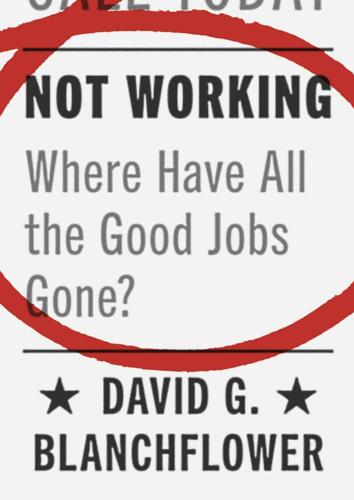
Not Working: Where Have All the Good Jobs Gone?
by
David G. Blanchflower
Published 12 Apr 2021
Midskill workers in the United States are either more unwilling, or less able, to transition to jobs with different skill levels and are increasingly likely to move from unemployment to non-participation rather than back into work. Taken together, Tomlinson suggests, these factors are all likely to have contributed to falls in prime-age participation rates in the United States and the inverse outcome in the UK. Good stuff. The CEA (2016b) also noted that the rise of mass incarceration and the associated rise in the fraction of the population that was formerly incarcerated look to be part of the explanation for the reduction in prime-age participation rates. The number of men behind bars in the United States has increased substantially, growing from 564 per 100,000 in the population in 1990 to 890 per 100,000 in 2014.
…
Black men suffered a 4.7- to 5.4-percentage-point reduction in their employment rate, while the equivalent for Latino men was 1.4–1.6 percentage points, and for white men it was 1.1–1.3 percentage points. They found that 6–6.7 percent of the male working-age population were former prisoners, while 13.6–15.3 percent were people with felony convictions, which seems incredibly high. Other advanced countries don’t use mass incarceration and don’t prevent ex-prisoners from working after their sentences are completed; they have figured out that rehabilitation works. In terms of GDP, Bucknor and Barber calculate that the population of former prisoners and people with felony convictions led to a loss of $78–87 billion in GDP in 2014.
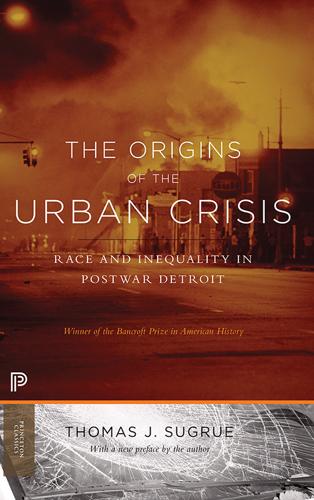
The Origins of the Urban Crisis
by
Sugrue, Thomas J.
Crain’s Detroit Business, Book of Lists 2013, Table: Largest Detroit Employers. Available http://www.crainsdetroit.com/section/book_of_lists2013, accessed 19 September 2013; Bill Vlasic, “Detroit is Now a Charity Case for Carmakers,” New York Times, September 23, 2013 9. Heather Ann Thompson, “Unmaking the Motor City in the Age of Mass Incarceration,” The Journal of Law in Society, (Wayne State University Law School, forthcoming 2014). 10. My overview draws from the indispensable survey of Detroit’s finances by Nathan Bomey and John Gallagher, “How Detroit went broke: The answers may surprise you—and don’t blame Coleman Young,” Detroit Free Press, September 15, 2013. 11.
…
Katz and Mark Rose, eds., Public Education Under Siege (Philadelphia: University of Pennsylvania Press, 2013); Diane Ravitch, The Death and Life of the Great American School System, revised ed. (New York: Basic Books, 2011); and Jean Anyon, Ghetto Schooling: A Political Economy of Urban Educational Reform (New York: Teachers College Press, 1997). 36. On incarceration and employment, see Devah Pager, Marked: Race, Crime, and Finding Work in an Era of Mass Incarceration (Chicago: University of Chicago Press, 2007) and Thompson, “Unmaking the Motor City.” On welfare policy, see Michael B. Katz, The Undeserving Poor: America’s Enduring Confrontation with Poverty, Second Edition (New York: Oxford University Press, 2013). P.2 Abandoned and collapsed houses, like this one near my father’s childhood home on Detroit’s West Side, are a common sight in Detroit in the early twenty-first century.
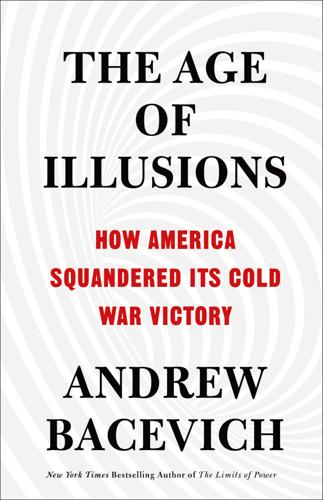
The Age of Illusions: How America Squandered Its Cold War Victory
by
Andrew J. Bacevich
Published 7 Jan 2020
Her “comprehensive progressive vision for America’s future” included the following: a reduced tax burden on working families; an end to the “quiet epidemic” of substance abuse; a cure for Alzheimer’s disease; a “new, wide-ranging autism initiative”; campaign finance reform; the elimination of campus sexual assault; installation of a half billion solar panels to address climate change; the defeat of ISIS; criminal justice reform to terminate “the era of mass incarceration”; expanded opportunities for the disabled; universal preschool for every four-year-old child; an end to the “epidemic of gun violence”; a gigantic infrastructure program; the eradication of HIV and AIDS; the elimination of child poverty; guaranteed paid family and medical leave; “universal, quality, affordable healthcare for everyone”; and a “safe and strong” America that will “lead the world in the 21st century.”47 All this and more.
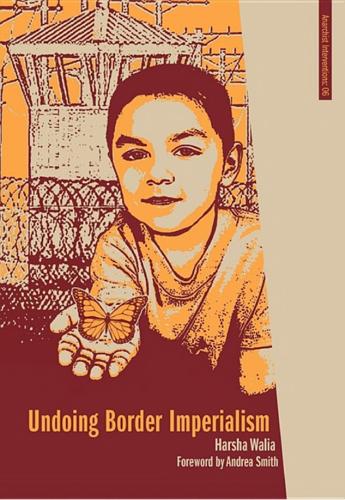
Undoing Border Imperialism
by
Harsha Walia
Published 12 Nov 2013
Smith, who introduces this book, has written extensively about how white supremacy in North America is constituted through interrelated but separate logics: “slaveability/anti-black racism, which anchors capitalism; genocide, which anchors colonialism; and orientalism, which anchors war.”(24) Under Smith’s first pillar, black people are constructed as property of the state and capital due to the legacy of slavery and current conditions of mass incarceration. The second pillar is the assimilation and attempted disappearance of Indigenous people through genocide and settler colonialism in order to illegally claim land and resources. The final pillar is Orientalism—a term theorized by Said that casts certain communities, especially Arab and/or Muslim, as permanent internal and external threats to empire.
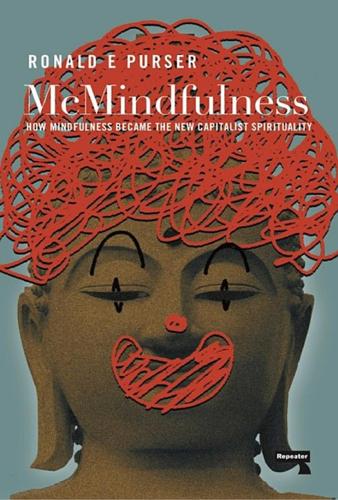
McMindfulness: How Mindfulness Became the New Capitalist Spirituality
by
Ronald Purser
Published 8 Jul 2019
Mindfulness programs are aligned with the interests of power, not questioning the institutional order. There is never a focus on the exploitation of workers, or the mindless export of suffering as pollution, and other externalities. Mindfulness in politics has not had the slightest impact on global warming, unprecedented inequality, poverty, mass incarceration, racism, sexism, corruption or militarism. Why would it when its aims are so tame and inward-focused? Psychoanalysis was similarly neutered by being Americanized. Many European psychoanalysts were Marxists and socialists. These neo-Freudians viewed neuroses as a social disease, saying personal troubles could not be divorced from historical and social contexts.

Give People Money
by
Annie Lowrey
Published 10 Jul 2018
Over the past three decades, the average net worth of white families has climbed more than 80 percent, three times the rate for black families, a study by the Institute for Policy Studies and the Corporation for Enterprise Development has found. Were that pattern to continue for the next three decades, white households would gain $18,000 in wealth a year, with black households gaining just $750. The racial wealth gap would never close. The emergence of the Black Lives Matter movement, the growing calls to end mass incarceration, the sunset of the Obama presidency, the start of the Trump presidency, the furious marching of Nazis and racists on the streets: all of these trends have coalesced as the UBI conversation has come to the fore. In his essay “The Case for Reparations,” the Atlantic writer Ta-Nehisi Coates made a moral argument for trying to repair these injustices.
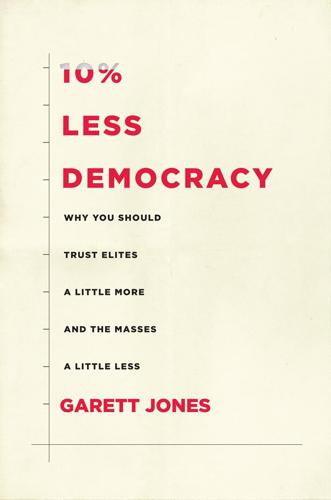
10% Less Democracy: Why You Should Trust Elites a Little More and the Masses a Little Less
by
Garett Jones
Published 4 Feb 2020
Here I want to suggest another way to improve voter education levels: by inaction rather than action. Here I have a pro-epistocracy voting reform that involves doing nothing at all: don’t restore voting rights to felons. This issue of whether felons should be allowed to vote has been salient in the United States in recent years as the rise in mass incarceration in the 1980s and 1990s created millions more convicted, imprisoned, and released felons than ever before. In the United States, and to some degree in Belgium, Italy, Greece, and Luxembourg, convicted felons are stripped of their voting rights even after their release from prison.²¹ The rights-based argument for doing so is that felons have violated the social contract in an important way and have thereby lost the right to vote.
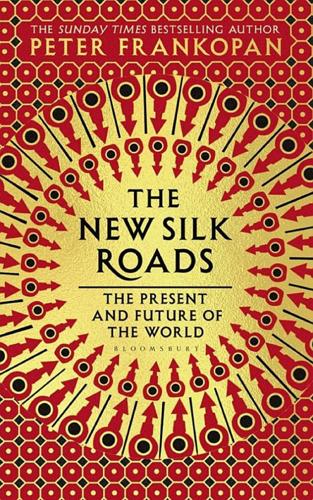
The New Silk Roads: The Present and Future of the World
by
Peter Frankopan
Published 14 Jun 2018
‘It was like hell,’ said one.70 These measures are all part of what the Chinese leadership has called a ‘great wall of iron’ being placed around the western provinces; this was essential, said President Xi, so that ‘people of all ethnic groups feel the Party’s care and the warmth of the motherland’.71 Others have called it ‘the largest mass incarceration of a minority population in the world today’.72 Concern about Afghanistan’s instability has also played a role in Chinese efforts to reinforce the frontier, both through initiatives such as the Quadrilateral Cooperation and Coordination Mechanism, a joint project between China, Afghanistan, Tajikistan and Pakistan, and with support and training for border troops in neighbouring countries.

The Broken Ladder
by
Keith Payne
Published 8 May 2017
Fry, “Wealth Inequality Has Widened Along Racial, Ethnic Lines Since End of Great Recession,” Pew Research Center, December 12, 2014, www.pewresearch.org/fact-tank/2014/12/12/racial-wealth-gaps-great-recession/. Pager tested for real-life discrimination: D. Pager, Marked: Race, Crime, and Finding Work in an Era of Mass Incarceration (Chicago: University of Chicago Press, 2008). Kenneth and Mamie Clark: K. B. Clark, Prejudice and Your Child (Middletown, CT: Wesleyan University Press, 1988). predicted by their appearance in their mug shots: I. V. Blair, C. M. Judd, and K. M. Chapleau, “The Influence of Afrocentric Facial Features in Criminal Sentencing,” Psychological Science 15 (2004): 674–79.
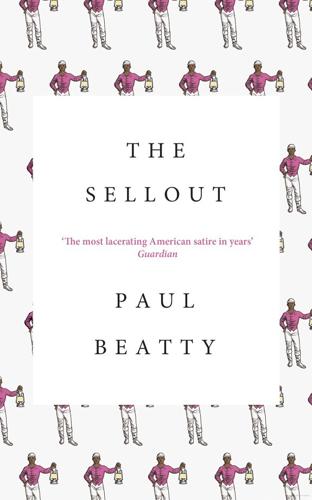
The Sellout: A Novel
by
Paul Beatty
Published 2 Mar 2016
Chavez Ravine, where a generations-old Mexican-American neighborhood was torn down, its residents forcibly removed, beaten, and left uncompensated to make room for a baseball stadium with ample parking and the Dodger Dog. Seventh Street, between Mesa and Centre, is the vortex where in 1942 a long line of buses idled as Japanese-Americans began the first step toward mass incarceration. And where would Hominy be most happy but on the #125 bus rolling through Dickens, a racial vortex unto itself. His seat on the right-hand side, three rows from the front door, the spinning epicenter of racism. The signs were such good replicas, most people didn’t notice the difference, and even after you “read” them, your comprehension tricked you into thinking the signs said what they’d always said, PRIORITY SEATING FOR SENIORS AND THE DISABLED, and although it was the first, the yogi’s complaint wouldn’t be the only one Marpessa fielded that day.
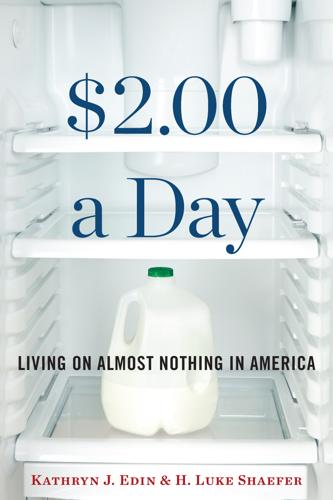
$2.00 A Day: Living on Almost Nothing in America
by
Kathryn Edin
and
H. Luke Shaefer
Published 31 Aug 2015
.” [>] identifiably black or white: Marianne Bertrand and Sendhil Mullainathan, “Are Emily and Greg More Employable Than Lakisha and Jamal? A Field Experiment on Labor Market Discrimination,” American Economic Review 94, no. 4 (2004): 991–1013. [>] relative to whites: For descriptions of both studies, see Devah Pager, Marked: Race, Crime, and Finding Work in an Era of Mass Incarceration (Chicago: University of Chicago Press, 2007). [>] wildly inaccurate: Persis S. Yu and Sharon M. Dietrich, “Broken Records: How Errors by Criminal Background Checking Companies Harm Workers and Businesses” (National Consumer Law Center, Boston, April 2012), http://www.nclc.org/images/pdf/pr-reports/broken-records-report.pdf. [>] average low-wage job in America: Andrew Leigh, “Who Benefits from the Earned Income Tax Credit?

Twilight of the Elites: America After Meritocracy
by
Chris Hayes
Published 11 Jun 2012
Hertz notes that race is a crucial factor in mobility, particularly for those in the lowest income bracket. “The gap between median black family income and median white family income hasn’t changed in twenty years,” he told me. “That is not a society moving toward equality. It’s a society that’s reproducing inequality by race.” Part of this is likely due to the rise of the war on drugs and mass incarceration, which disproportionately impacts African Americans. A report based on the research of Bruce Western and Becky Pettit, published by Pew, looked at the effect that our criminal justice policies have on social mobility. It found that incarceration dramatically reduces earnings after release, as well as the prospects for children of those incarcerated.
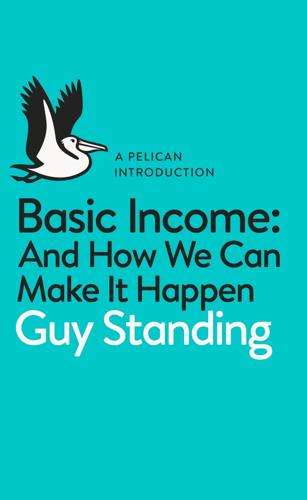
A Pelican Introduction: Basic Income
by
Guy Standing
Published 3 May 2017
A report by the National League of Cities, which represents 19,000 US cities and towns, has recommended that cities investigate basic income.5 Meanwhile, a newly influential movement, Black Lives Matter, allying over fifty organizations, issued an ‘official platform’ in August 2016 that included a demand for a universal basic income (UBI). It also argued for an additional amount (a sort of UBI+) to be paid to black Americans as reparation for the harms of colonialism, slavery and the mass incarceration of mainly young black men in modern times. Without endorsing this specific demand, which would be hard to administer fairly, the essence of the platform is a demand for reparation for past injustices. The Middlesbrough tale of Chapter 2 is very much along the same lines. In Europe, the scope for greater public pressure has been enhanced by the energies of new political parties, by national networks that are welcoming new members, and by new initiatives such as the annual Basic Income Week events.
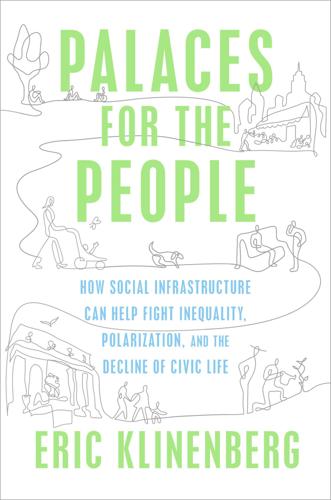
Palaces for the People: How Social Infrastructure Can Help Fight Inequality, Polarization, and the Decline of Civic Life
by
Eric Klinenberg
Published 10 Sep 2018
” * * * Stories like these help explain the popularity—or perhaps the necessity—of social infrastructures that serve as safe spaces for members of excluded groups that are subjected to prejudice, discrimination, and violence. Oppressed communities often endure extreme social and economic pressures that inhibit the formation of stable, enduring relationships. In the United States, as the Harvard sociologist Orlando Patterson has argued, the history of slavery, ghettoization, segregation, and mass incarceration has led to high levels of instability within the black community. “Afro-Americans are the most unpartnered and isolated group of people in America,” Patterson writes, “and quite possibly in the world.” Black Americans, and all other groups that face severe discrimination, need spaces that foster support and cohesion.

Artificial Unintelligence: How Computers Misunderstand the World
by
Meredith Broussard
Published 19 Apr 2018
New York Daily News, December 30, 2014. http://www.nydailynews.com/news/crime/chicago-uber-driver-charged-alleged-rape-passenger-article-1.2060817. Alcor Life Extension Foundation. “Official Alcor Statement Concerning Marvin Minsky.” Alcor News, January 27, 2016. Alexander, Michelle, and Cornel West. The New Jim Crow: Mass Incarceration in the Age of Colorblindness. Revised ed. New York: New Press, 2012. Ames, Morgan G. “Translating Magic: The Charisma of One Laptop per Child’s XO Laptop in Paraguay.” In Beyond Imported Magic: Essays on Science, Technology, and Society in Latin America, edited by Eden Medina, Ivan da Costa Marques, and Christina Holmes, 207–224.

The Globotics Upheaval: Globalisation, Robotics and the Future of Work
by
Richard Baldwin
Published 10 Jan 2019
Numbers from “Income and Poverty in the United States: 2016”, by J. Semega, K. Fotenot, and M. Kollar, US Census Bureau, September 2017, and Yale’s Environmental Performance Index, http://archive.epi.yale.edu/epi/issue-ranking/water-and-sanitation, and https://www.vox.com/2015/4/7/8364263/us-europe-mass-incarceration 4. Quotes from Mike Bygrave, “Where Did All the Protesters Go?”The Observer, July 14, 2002. 5. Quoted in David Mogan, “Truth About Tech Campaign Takes on Tech Addiction,” CBSNews. com, February 5, 2018. 6. Jonathan Haidt, “The Key to Trump is Stenner’s Authoritarianism”, The Righteous Mind (blog), January 6, 2016. 7.

AIQ: How People and Machines Are Smarter Together
by
Nick Polson
and
James Scott
Published 14 May 2018
Julia Angwin and Jeff Larson, “Bias in Criminal Risk Scores Is Mathematically Inevitable, Researchers Say,” ProPublica, December 30, 2016, https://www.propublica.org/article/bias-in-criminal-risk-scores-is-mathematically-inevitable-researchers-say. 26. Julia Angwin, Jeff Larson, Surya Mattu, and Lauren Kirchner, “Machine Bias,” ProPublica, May 23, 2016, https://www.propublica.org/article/machine-bias-risk-assessments-in-criminal-sentencing. 27. Leah Sakala, “Breaking Down Mass Incarceration in the 2010 Census,” Prison Policy Initiative report, May 28, 2014, https://www.prisonpolicy.org/reports/rates.html. INDEX The index that appeared in the print version of this title does not match the pages in your e-book. Please use the search function on your e-reading device to search for terms of interest.
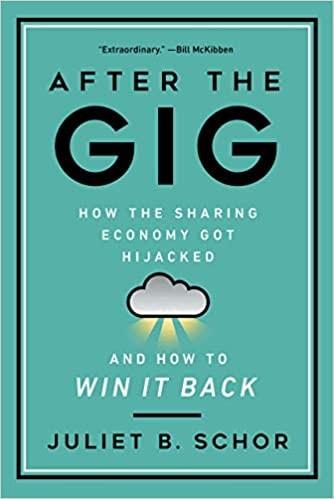
After the Gig: How the Sharing Economy Got Hijacked and How to Win It Back
by
Juliet Schor
,
William Attwood-Charles
and
Mehmet Cansoy
Published 15 Mar 2020
O’Sullivan, Feargus. 2018. “Barcelona Finds a Way to Control Its Airbnb Market.” CityLab, June 6, 2018. Pacitti, Aaron. 2011. “The Cost of Job Loss and the Great Recession.” Journal of Post Keynesian Economics 33 (4): 597–620. Pager, Devah. 2007. Marked: Race, Crime, and Finding Work in an Era of Mass Incarceration. Chicago: University of Chicago Press. Paharia, Neeru, Anat Keinan, Jill Avery, and Juliet B. Schor. 2011. “The Underdog Effect: The Marketing of Disadvantage and Determination through Brand Biography.” Journal of Consumer Research 37 (5): 775–90. Parigi, Paolo, and Bogdan State. 2014. “Disenchanting the World: The Impact of Technology on Relationships.”
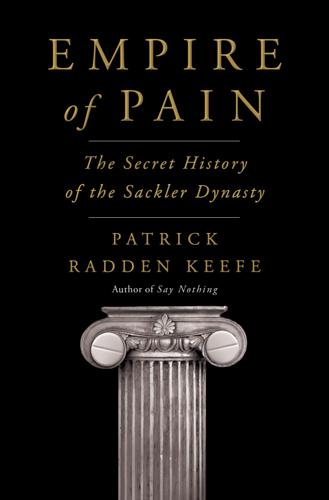
Empire of Pain: The Secret History of the Sackler Dynasty
by
Patrick Radden Keefe
Published 12 Apr 2021
While Madeleine was making The Lottery, she started to think about the role of prison in American society. “It’s kind of the flip side,” she observed. “It’s what happens when people don’t get a good education. I knew we had more people in prison than anywhere in the world.” Madeleine decided that she would explore the vexing problem of mass incarceration by making a fictional feature film about an older prisoner on the eve of his release. As a documentarian, however, she wanted the film to feel grounded in the real world. So she decided she would try to make the movie inside an actual functioning prison—“with prisoners acting.” To another young filmmaker, this might have seemed like an artistically ambitious but logistically impossible notion.
…
Purdue executives might have evaded jail time for their role in a scheme that generated billions of dollars for Madeleine’s family, but in 2016, Indiana’s governor, Mike Pence, signed a law reinstating a mandatory minimum sentence for any street-level dealer who was caught selling heroin and had a prior conviction: ten years. Nationwide, 82 percent of those charged with heroin trafficking were Black or Latino. It is impossible to speak honestly about mass incarceration without also speaking of the war on drugs. And it’s impossible to speak honestly about the war on drugs without addressing the opioid crisis. Yet this was the rhetorical needle that Madeleine Sackler somehow managed to thread. It was a deft performance. For the most part, she was able to weigh in, sagely, on the plight of America’s prison population without being asked to account for her own familial connection to one of the underlying drivers of that crisis.

Bricks & Mortals: Ten Great Buildings and the People They Made
by
Tom Wilkinson
Published 21 Jul 2014
Inmates of the latter hospital were finely graded following a policy of what John Thompson and Grace Goldin called ‘divide and conquer’: each idiot, each maniac and each melancholic had his or her cell, which – because of the building’s low-lying site – periodically filled with Seine water and sewer rats. This mass incarceration, which Michel Foucault called ‘the Great Confinement’, was repeated across Europe: for example, in England there were houses of correction and later workhouses. In the Bethlem Royal Hospital, which under its nickname Bedlam became a byword for insanity, inmates were subjected to the stares and laughter of the paying public: advertising the attractions within, a statue on the gate represented ‘raving’ madness bound in chains.
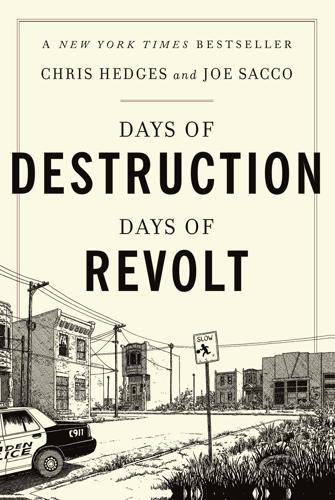
Days of Destruction, Days of Revolt
by
Chris Hedges
and
Joe Sacco
Published 7 Apr 2014
There is a mysterious quality to all popular uprisings. Astute observers know the tinder is there, but never when it will be lit. I had watched this dynamism in the Middle East in late 1987. The brutality of the Israeli occupation of the Palestinian territories, which included extrajudicial killings, mass detentions, mass incarcerations, house demolitions, deportations, and crippling poverty in the West Bank and Gaza, was sending out waves of rage, especially through the young, whose dignity, hopes, and dreams were being crushed in the concrete hovels of the Palestinian refugee camps. But none of us expected that a general uprising would be ignited on December 8, 1987, after four Palestinians from the Jabalia refugee camp were killed in a traffic accident involving an Israeli truck.

Please Don't Sit on My Bed in Your Outside Clothes: Essays
by
Phoebe Robinson
Published 14 Oct 2021
When a white person is considered the leading voice in how to be antiracist, it creates more harm and mental anguish for Black people because they are proven right yet again that there is no conceivable way that, even when armed with years of education and personal experience, they can be seen as authorities on antiracism, or the many ills that stem from a racist society, including advocating for government policies and legislation, addressing racial disparities in poverty, jobs, mass incarceration, and housing, and how the police system was designed, as Olivia B. Waxman wrote in her Time magazine article “How the U.S. Got Its Police Force”: In the South, however, the economics that drove the creation of police forces were centered not on the protection of shipping interests but on the preservation of the slavery system.

Who Is Rich?
by
Matthew Klam
Published 3 Jul 2017
There’d been moments over the winter when I’d wanted to interrupt our epistolary love affair to unleash a searing rant of impeccable erudition—on the history of unstructured capitalism, twentieth-century U.S. imperialism, American workers forced to compete with Asian slave labor, private for-profit mass incarceration, Donald Rumsfeld, the Koch brothers, Citizens United, and the coming worldwide extinction—but I never got around to it. I went through her purse and found some used Kleenex, hair ties, gum, a tube of Pantene Overnight Miracle. Eyeglasses, a kid’s toy pen that looked like a cucumber. An Air France deck of cards.

SEDATED: How Modern Capitalism Created Our Mental Health Crisis
by
James. Davies
Published 15 Nov 2021
In fact, when Moscow hosted the Olympics Games in 1980, the government actually refused to host the Paralympics too. They just said, we don’t have any disabled people here! It’s only you in the West who have this problem.’ Such Soviet propaganda during the 1970s and 1980s did not lead just to the mass incarceration and maltreatment of people with mental health and other disabilities, but also to the failure to develop any community mental health services, because if all mental health problems were defeated by communism, no such services were required. ‘During that time there were no social workers, no psychologists, no therapists, only psychiatrists who were prescribing huge dosages of psychotropic medication and incarcerating people.
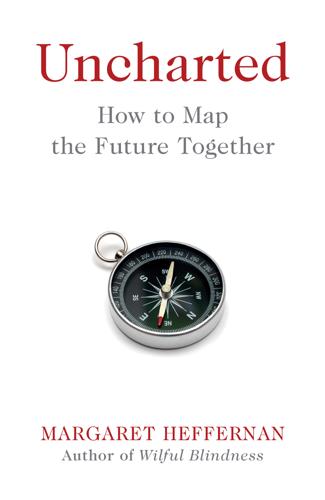
Uncharted: How to Map the Future
by
Margaret Heffernan
Published 20 Feb 2020
There was no plan. By 1990, one person died from AIDS every minute in America. In cities, it had become the leading cause of death for women aged 15–44. Promising drugs remained untested. Congress voted $800 million for treatment – but none of the money was ever released. Rumours of deportations, mass incarceration and suicides swirled around the community. Activists were dying; they were also burning out. But as they retired the field, others replaced them, fired by the certainty that if silence meant death, acting up at least meant possibility. ‘Faith defies uncertainty’ is how David France put it. Without optimism, there was nothing.
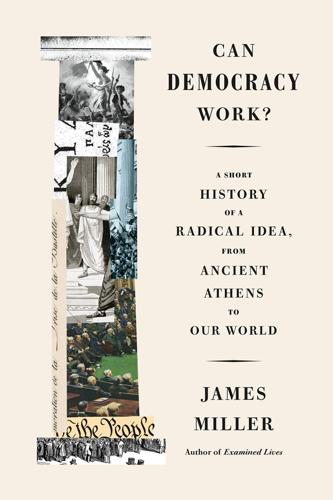
Can Democracy Work?: A Short History of a Radical Idea, From Ancient Athens to Our World
by
James Miller
Published 17 Sep 2018
Please use the search function on your e-reading device to search for the relevant passages documented or discussed. Abbé-Sieyès abolitionism Achen, Christopher Adams, John Adams, John Quincy Adams, Samuel Adbusters Aegina Aelius Aeschylus Africa, postcolonial African Americans: mass incarceration of; in Rhode Island; voting rights of Albany, N.Y., Tocqueville and Beaumont’s visit to Albany Argus Alcibiades Alcmaeonid family All-Russian Union of Railroad Employees and Workers All-Russia Peasants’ Union American Association for Public Opinion Research American Bureau of Labor Statistics American Civil Liberties Union American colonies American Commonwealth, The (Bryce) American culture, commerce and American democracy; commerce and; consent as core principle of; democratic clubs in, see democratic clubs, American; distrust of big government in; elections as central to; equality as principle for; factions in; French Revolution’s impact on; individualism and; popular sovereignty and; presidency in, see presidency, U.S.; private property and; Republican Rome as model for; self-reliance as principle of; slavery and; Tocqueville on; voting rights in, see voting rights; Wilson on American Dream American exceptionalism American Political Science Association American Revolution “American Scholar, The” (Emerson) Ames, Fisher anarchists Anaxagoras Ancient Law (Maine) Andreyev, L.
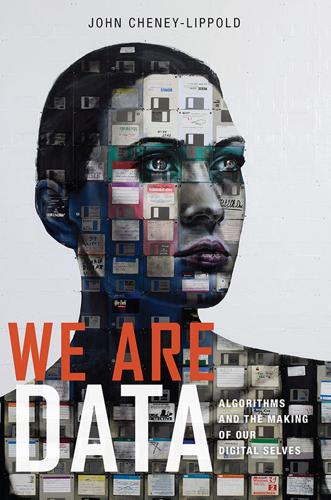
We Are Data: Algorithms and the Making of Our Digital Selves
by
John Cheney-Lippold
Published 1 May 2017
Jeremy Gorner, “Chicago Police Use Heat List as Strategy to Prevent Violence,” Chicago Tribune, August 21, 2013, http://articles.chicagotribune.com. 66. Anthony Braga, Andrew Papachristos, and David Hureau, “The Effects of Hot Spots Policing on Crime: An Updated Systematic Review and Meta-analysis,” Justice Quarterly 31, no. 4 (2012): 633–663. 67. Todd R. Clear, Imprisoning Communities: How Mass Incarceration Makes Disadvantaged Neighborhoods Worse (Oxford: Oxford University Press, 2007). 68. Gorner, “Chicago Police Use Heat List.” 69. Max Weber, The Methodology of the Social Sciences (New York: Free Press, 1949), 90. 70. Tarleton Gillespie, “The Relevance of Algorithms,” In Media Technologies: Essays on Communication, Materiality, and Society, ed.
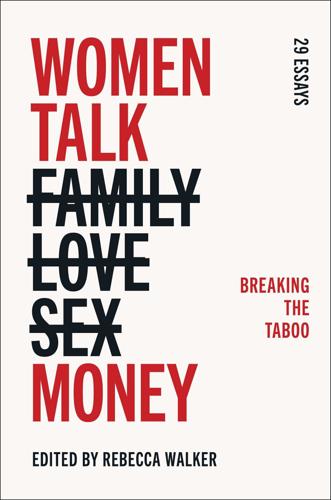
Women Talk Money: Breaking the Taboo
by
Rebecca Walker
Published 15 Mar 2022
Most of us hadn’t experienced the fear of not being able to pay your health care bill. Or the sensation of a cop pulling you over because of the color of your skin. Or the feelings of powerlessness in the face of incarceration. It was clear to us that we couldn’t solve economic injustice, racial profiling, or mass incarceration on our own. But we could do our part. Solidarity, it seemed to us, was based on an understanding of interconnection. It was based on the admission that my wealth is partly tied to your poverty. It was scary and guilt-provoking to admit, but we were forced to recognize that our families made their wealth by extracting the labor of workers or refining the raw materials of the earth.
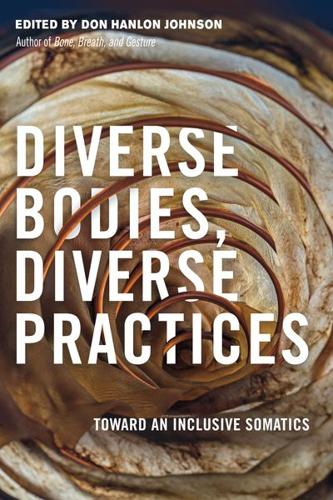
Diverse Bodies, Diverse Practices: Toward an Inclusive Somatics
by
Don Hanlon Johnson
Published 10 Sep 2018
For one to say that they don’t see color means to say that they don’t acknowledge the reality of this country’s history of immeasurable violence against people of color. A history that includes atrocities such as genocide, human slavery, and internment camps, and continues systemic oppression through mass incarceration disproportionately imprisoning black and brown bodies. Since the time I was in grade school, I was curious about my family origins. Really, I was curious about my paternal ancestry. My father, while present for many of my early childhood years, sort of disappeared. When attempting to recall when he stopped being present, my mind is blank.
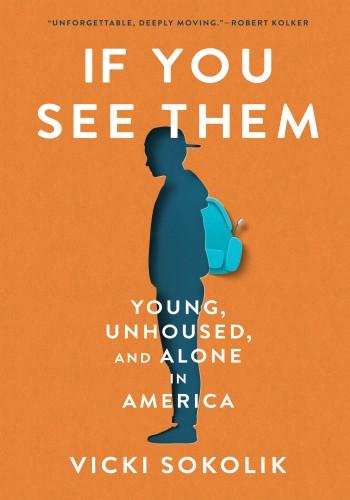
If You See Them
by
Vicki Sokolik
Published 23 Nov 2023
App_mode=Display_Statute&URL=0900-0999/0948/Sections/0948.08.html. 175 “juvenile diversion expungement”: “Seal and Expunge Process,” Florida Department of Law Enforcement, n.d., http://www.fdle.state.fl.us/Seal-and-Expunge-Process.aspx. 178 they would carry the stigma of being labeled a criminal: Michelle Alexander, The New Jim Crow: Mass Incarceration in the Age of Colorblindness (New York: New Press, 2010), 140–177. 178 the obstacles they already faced regarding employment, housing, and education would become even greater: “A Stigma That Never Fades,” Economist, August 2002. 27. Taylor 202 is paid to the custodian of a child to provide an acceptable standard of living: “Florida Child Support: Florida Family Law,” Florida Law Advisers, n.d., https://www.floridalegaladvice.com/blog/child-support/. 202 The benefit is 75 percent of the deceased parent’s Social Security benefit: “Benefits for Children,” Social Security Administration, June 2022, https://www.ssa.gov/pubs/EN-05-10085.pdf. 28.
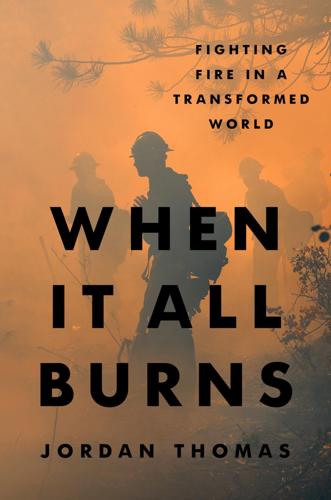
When It All Burns: Fighting Fire in a Transformed World
by
Jordan Thomas
Published 27 May 2025
GO TO NOTE REFERENCE IN TEXT “burnt in some spots”: Much of the Spanish correspondence regarding Indigenous burning in this chapter comes from this source: Jan Timbrook, John R. Johnson, and David D. Earle, “Vegetation Burning by the Chumash,” Journal of California and Great Basin Anthropology 4, no. 2 (1982): 163–86. GO TO NOTE REFERENCE IN TEXT One man suffered five whippings: Benjamin Madley, “California’s First Mass Incarceration System: Franciscan Missions, California Indians, and Penal Servitude, 1769–1836,” Pacific Historical Review 88, no. 1 (2019): 14–47, https://doi.org/10.1525/phr.2019.88.1.14. GO TO NOTE REFERENCE IN TEXT Many were tortured and executed: For examples of the methods used, see the journal of Vassili Tarakanoff, a Russian who was held captive by the Spanish.
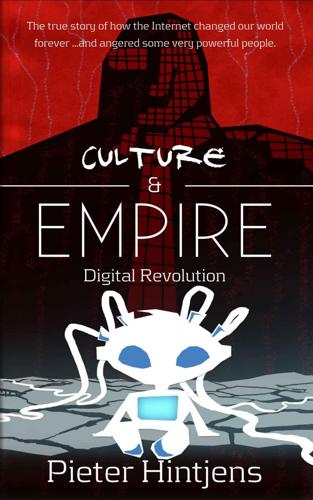
Culture & Empire: Digital Revolution
by
Pieter Hintjens
Published 11 Mar 2013
These all conspire to make society collectively stupider. It is the theory of cults, applied nationwide. However, there are also deeper shifts in society that will take decades to recover from. The war on drugs is perhaps the worst case. The War of Drugs In the name of public health, drug policy has allowed mass incarceration of the poorest men, pumped up the prison system into a new form of slavery, funded the militarization of the police forces, corrupted law enforcement, and turned recreational drug users into criminals on demand, living in constant fear of arrest. The damage on US society is broad and deep, and it is damage done by bad laws, not damage done by drugs as such.
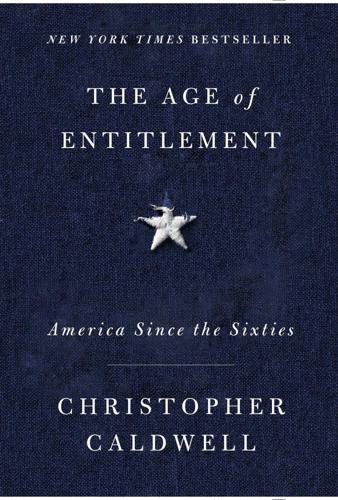
The Age of Entitlement: America Since the Sixties
by
Christopher Caldwell
Published 21 Jan 2020
As the new century dawned, however, many of the pre–Baby Boom voters who had favored a hard line were dying, and the incarceration rate peaked. By 2012, when Colorado legalized marijuana, the oldsters had been replaced by a generation that looked at the drug experimentation of the 1960s as rather cool. Spurred by Michelle Alexander’s tract The New Jim Crow (2010), Obama accelerated the movement away from mass incarceration that had begun as George W. Bush came to office in 2001. Drugs were only a proximate cause of white decline. Now poor rural whites were being discussed as a deep social “problem” the way urban blacks had been until a generation before. There were, as always, essentially two philosophies about problem populations: Blame the people, or blame the circumstances under which society compelled them to live.

Heaven Is a Place on Earth: Searching for an American Utopia
by
Adrian Shirk
Published 15 Mar 2022
The prison chapel is the original Shaker chapel, thus nightmarishly bringing together two of our country’s most notorious innovations—utopian thought and the dystopian prison industrial complex. What does it say about our country that the Shaker movement could be enfolded into the project of mass incarceration at the very moment when our prison system has become not only the largest in the world in terms of population, but the largest in the world per capita? To me, it suggests that the utopian is never far from its opposite, that our greatest strength is also our greatest weakness, that power will always accumulate in the same ways and marshal the same violence, and that growth, in this culture, works only in one direction.

City on the Verge
by
Mark Pendergrast
Published 5 May 2017
The pending purchase hit a three-month snag when Fulton County, which owned the 137-acre chunk of land leased to Vulcan, demanded as part of the deal that Atlanta provide five hundred jail beds for the overflowing inmate population at the Fulton County Jail—mostly African Americans convicted of drug charges in what some have called a “new Jim Crow” era of mass incarceration of black men. Ironically, sale of this quarry originally dug by leased black convicts was being held up because the nearby Fulton County Jail was overflowing with black prisoners. In the end, Fulton got only 175 Atlanta jail beds, while the agreed-upon payment to Fulton County went up to $15.2 million.
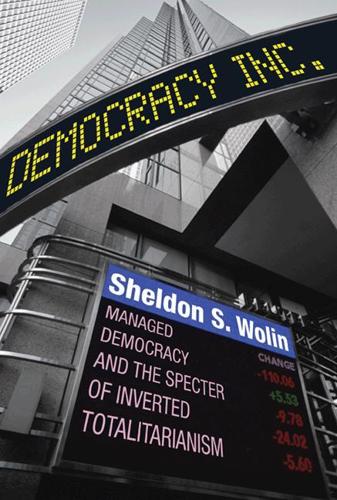
Democracy Incorporated
by
Sheldon S. Wolin
Published 7 Apr 2008
The New York Times reported that the then head of CNN “made a public show of meeting with Republican leaders in Washington to discuss CNN’s perceived liberal bias.” According to the Times CNN subsequently became more conservative. April 16, 2003, B-9. 19. See Marie Gottschalk, The Prison and the Gallows: The Politics of Mass Incarceration in America (Cambridge: Cambridge University Press, 2006), 2, 15, 19. See also Timothy V. Kaufman-Osborn, From Noose to Needle: Capital Punishment and the Late Liberal State (Ann Arbor: University of Michigan Press, 2002), 166–68, 173–74. 20. During the Katrina disaster the federal government suspended minimum wage requirements for some businesses under contract for the cleanup operations. 21.
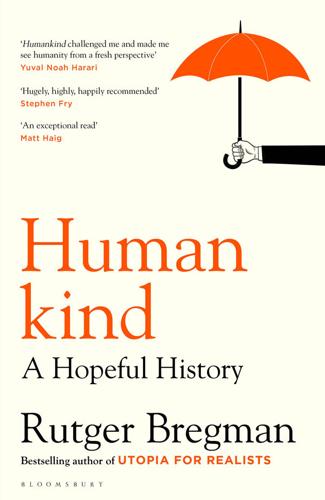
Humankind: A Hopeful History
by
Rutger Bregman
Published 1 Jun 2020
53 Between 1972 and 2007, the number of people incarcerated in the United States, corrected for population growth, grew by more than 500 per cent.54 And those inmates are locked up for an average of sixty-three months – seven times longer than in Norway. Today, almost a quarter of the world’s prison population is behind American bars. This mass incarceration is the result of intentional policy. The more people you lock up, Professor James Wilson and his followers believed, the lower the crime rate. But the truth is that many American prisons have devolved into training grounds for criminals – costly boarding schools that produce more accomplished crooks.55 A few years ago, it came out that a mega-facility in Miami was cramming as many as twenty-four inmates into a single cell, from which they were let out for one hour twice a week.
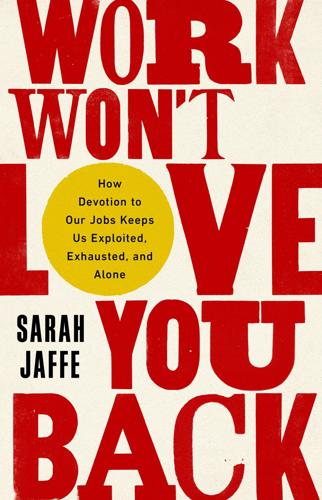
Work Won't Love You Back: How Devotion to Our Jobs Keeps Us Exploited, Exhausted, and Alone
by
Sarah Jaffe
Published 26 Jan 2021
It was, in political scientist Melinda Cooper’s words, “a state-enforced system of private family responsibility,” built on the old Poor Law tradition but expanding its punitive nature. 58 Despite all the politicians’ professions that they wanted to help women, the new law surveilled and punished Black women in disproportionate numbers. (All of this happened alongside the growth of mass incarceration, itself a bipartisan project of the 1980s and 1990s.) The flood of new, desperate workers into the low-wage labor market—often, once again, into jobs mirroring the work they were expected to do in the home—helped to hold wages down for all while improving profits for those at the top. 59 In the decades following welfare reform, labor in the paid workplace has been made cheaper because certain work remains unwaged and in the home.

Apollo's Arrow: The Profound and Enduring Impact of Coronavirus on the Way We Live
by
Nicholas A. Christakis
Published 27 Oct 2020
Early in the pandemic, I became worried that the thinning out of our intellectual life over the past twenty years would pose barriers for managing the spread of the virus. Political entrenchment and geographically segregated living patterns have made people less open to opposing ideas, and this has hampered addressing a variety of societal problems, from climate change to mass incarceration. I feared that, together with a number of other problematic, convergent features, this intellectual atrophy would make our response to the pandemic challenging. First, there has been a progressive denigration of science. Science has come to be seen by too many as serving political ends. Many people have even abandoned the fundamental idea that it is possible to have an objective appreciation of the truth.
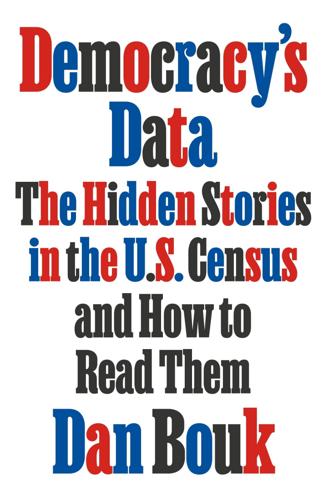
Democracy's Data: The Hidden Stories in the U.S. Census and How to Read Them
by
Dan Bouk
Published 22 Aug 2022
The Census Bureau, keen to survive the war and to do its patriotic duty, rushed into the fray, publishing data about so-called enemy aliens. It churned out data on Germans, Italians, and Japanese living in the United States. And it distributed special reports and tabulations to military authorities, thereby helping to justify and facilitate the mass incarceration of 120,000 Japanese Americans. That number itself eerily echoes the number of enumerators in 1940. Imagine the outrage if the United States had corralled its approximately 120,000 census takers behind barbed wire for years. In its militarized, weaponized form, the 1940 census (and the government it served) fell far short of being “the greatest inventory of the world’s greatest democracy.”
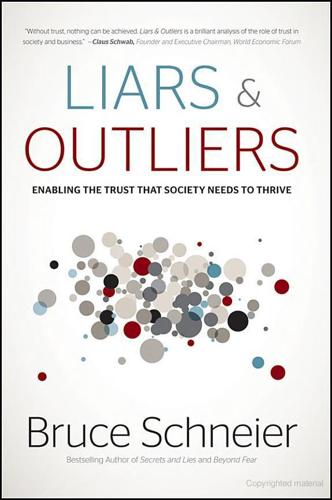
Liars and Outliers: How Security Holds Society Together
by
Bruce Schneier
Published 14 Feb 2012
Department of Justice, Office of Justice Programs, Bureau of Justice Statistics. Heather C. West, William J. Sabol, and Sarah J. Greenman (2010), “Prisoners in 2009,” Report NCJ 231675, U.S. Department of Justice, Office of Justice Programs, Bureau of Justice Statistics. Bruce Western and Christopher Wildeman (2009), “The Black Family and Mass Incarceration,” The Annals of the American Academy of Political and Social Science, 621:221–42. increasing shoplifting Kerry Segrave (2001), Shoplifting: A Social History, Mcfarland & Co. fewer bicycle riders Maxwell H. Cameron, A. Peter Vulcan, Caroline F. Finch, and Stuart V. Newstead (1994). “Mandatory Bicycle Helmet Use Following a Decade of Helmet Promotion in Victoria, Australia: An Evaluation,” Accident Analysis & Prevention, 26:325–7.
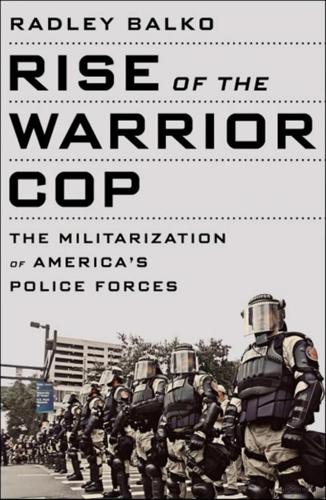
Rise of the Warrior Cop: The Militarization of America's Police Forces
by
Radley Balko
Published 14 Jun 2013
Kit Miniclier, “Critics Say ‘No-Knocks’ Dangerous, Unnecessary,” Denver Post, January 27, 1995. 26. Egan, “Soldiers of the Drug War Remain on Duty.” 27. US Department of Justice, National Institute of Justice, “Department of Justice and Department of Defense Joint Technology Program: Second Anniversary Report” (February 1997). 28. Michelle Alexander, The New Jim Crow: Mass Incarceration in the Age of Colorblindness (New York: New Press, 2012), pp. 141–145. 29. The ABC World News Tonight episode, which aired March 28, 1996, is summarized in Peter Kraska and Victor Kappeler, “Militarizing American Police: The Rise and Normalization of Paramilitary Units,” Social Problems 44 (1, February 1997). 30. 18 USC § 3109. 31.

Chasing the Scream: The First and Last Days of the War on Drugs
by
Johann Hari
Published 20 Jan 2015
The Essential Handbook of Treatment and Prevention of Alcohol Problems. Hoboken: John Wiley and Sons, 2004. Hentoff, Nat. At the Jazz Band Ball. Berkeley, CA: University of California Press, 2010. ———. The Jazz Life. Cambridge, MA: Da Capo Press, 1961. Herivel, Tara, and Paul Wright, eds. Prison Profiteers: Who Makes Money from Mass Incarceration. New York: New Press, 2007. Hickman, Timothy A. The Secret Leprosy of Modern Days: Narcotic Addiction and Cultural Crisis in the United States, 1870–1920. Amherst, MA: University of Massachusetts Press, 2007. Hillman, D.C.A. The Chemical Muse: Drug Use and the Roots of Western Civilization.
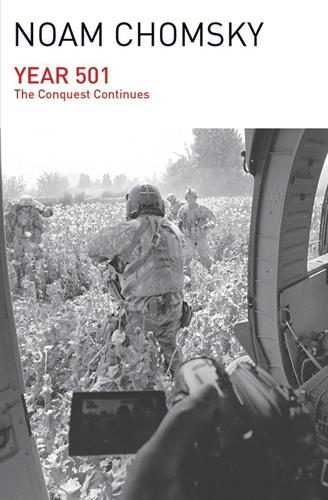
Year 501
by
Noam Chomsky
Published 19 Jan 2016
Other polls had similar results. 6. See the seminal study by Edward Baptist, The Half Has Never Been Told: Slavery and the Making of American Capitalism (Basic Books, 2014). For the post-slavery era, see among others Donald Blackmon, Slavery by Another Name (Anchor, 2009) and Michelle Alexander, The New Jim Crow: Mass Incarceration in the Age of Color Blindness (New Press, 2010). The trilogy should be required reading for Americans who wish to understand their country. 7. Barack Obama, “Statement by the President on Cuba Policy Change,” press release, www.whitehouse.gov/the-press-office/2014/12/17statement -president-cuba-policy-changes. 8.
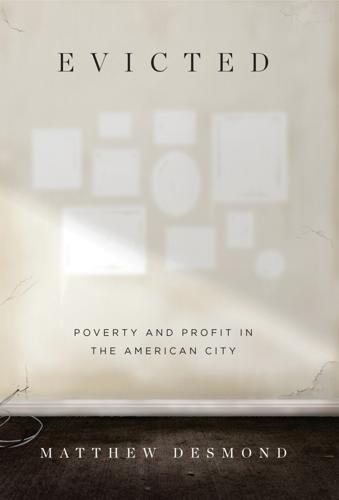
Evicted: Poverty and Profit in the American City
by
Matthew Desmond
Published 1 Mar 2016
Fewer and fewer families can afford a roof over their head. This is among the most urgent and pressing issues facing America today, and acknowledging the breadth and depth of the problem changes the way we look at poverty. For decades, we’ve focused mainly on jobs, public assistance, parenting, and mass incarceration. No one can deny the importance of these issues, but something fundamental is missing. We have failed to fully appreciate how deeply housing is implicated in the creation of poverty. Not everyone living in a distressed neighborhood is associated with gang members, parole officers, employers, social workers, or pastors.

Competition Overdose: How Free Market Mythology Transformed Us From Citizen Kings to Market Servants
by
Maurice E. Stucke
and
Ariel Ezrachi
Published 14 May 2020
Because private prisons are a for-profit business, they all share a fundamental goal: to increase occupancy rate. Lowering the occupancy rate, whether it’s through reductions in crime, decreases in sentencing duration, or alternatives to incarceration, is not in their interest. But lowering the occupancy rate is good for society, and there is a growing consensus that mass incarceration has become too mass. Voters have begun questioning the diminishing returns of locking more and more people up for longer time periods. One 2012 report noted how a “growing body of research suggests—and government officials acknowledge—that beyond a certain point, further increases in incarceration have significantly diminishing returns as a means of making communities safer.”9 Optimal deterrence occurs when the cost of reducing crime equals the social benefit.
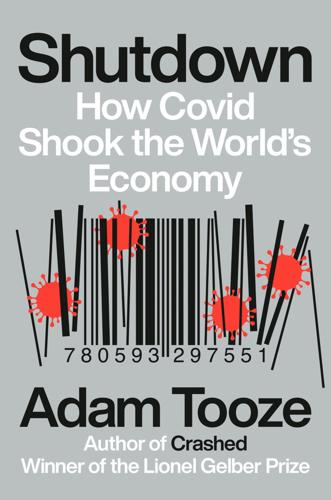
Shutdown: How COVID Shook the World's Economy
by
Adam Tooze
Published 15 Nov 2021
Trump’s GOP was a party of self-proclaimed fiscal conservatives who prioritized tax cuts over budget balance. It was a party of self-reliance that counted on the Fed to juice the stock market. It was a party of working-class voters who supported deregulation for big business.21 It was a party of small government that loved nothing more than a giant military, mass incarceration, and an oversize muscle-bound police force. It was a party whose base identified passionately with Donald Trump, but whose congressional leadership hesitated to do the obvious thing that would see him reelected: to launch a massive second wave of fiscal stimulus. * * * — In Europe and Asia, the summer of 2020 was a period of balancing the imperatives of virus control against the urge to resume ordinary life.
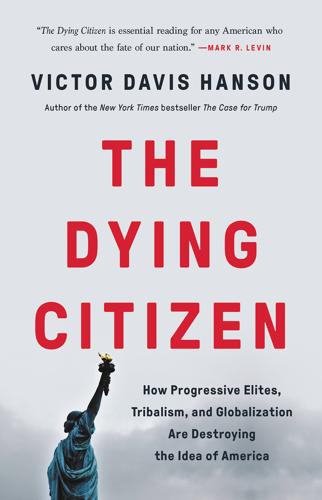
The Dying Citizen: How Progressive Elites, Tribalism, and Globalization Are Destroying the Idea of America
by
Victor Davis Hanson
Published 15 Nov 2021
“Nativism” in the globalist lexicon does not refer to the highly restrictive and ethnically chauvinistic immigration policies of Japan, China, and Mexico. Instead, it mostly applies to the United States, which annually takes in more immigrants than any other country and currently has the world’s largest resident immigrant population. In the global media community, “intolerance” does not denote so much China’s mass incarceration of Muslim Uighurs in reeducation camps, or destruction of Tibetan culture, or strangulation of Hong Kong’s democracy, or systemic racism shown African students and resident workers in China. Instead, America’s purported sin is occasional consideration of recalibrating its open-borders policies and requiring legality before entering the country.
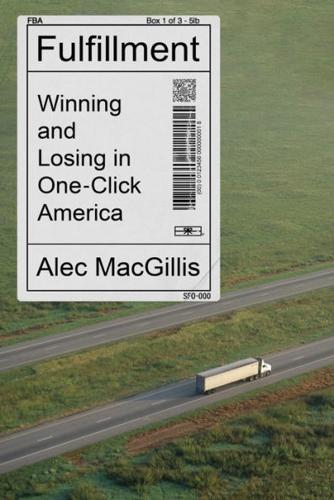
Fulfillment: Winning and Losing in One-Click America
by
Alec MacGillis
Published 16 Mar 2021
The crucial passage was this: The homelessness crisis is, after all, the convergence of trends any one of which reveals a social order on the rocks: soaring housing costs and stagnating wages; decades of cuts to safety net programs; an epidemic of depression, social isolation, and mental illness; self-medication and opioid overprescription; fraying community and family support networks; mass incarceration and systemic racism. The tent pitched in the greenway and the woman shooting up on the sidewalk are the tip of an iceberg of social catastrophe, intruding into public space in a manner impossible to ignore. Millennials tend to feel at home with this reality, because it explains our lives. Growing up in the shadow of looming environmental disaster, entering adulthood with precarious job prospects, never having formed expectations of stability or security, the notion that a fundamental restructuring of society is in order doesn’t feel all that radical.

Make Your Own Job: How the Entrepreneurial Work Ethic Exhausted America
by
Erik Baker
Published 13 Jan 2025
Mead, Associate Professor, Department of Politics, New York University,” in The Underclass: Hearing Before the Joint Economic Committee, Congress of the United States, One Hundred First Congress, First Session, May 25, 1989 (Washington, DC: Joint Economic Committee, 1989), 25. 65Porter, “Urban Entrepreneur”; William J. Clinton, “Remarks on Empowerment Zones and Enterprise Communities, January 17, 1994,” https://www.presidency.ucsb.edu/documents/remarks-empowerment-zones-and-enterprise-communities. On mass incarceration and surplus population, see Ruth Wilson Gilmore, Golden Gulag: Prisons, Surplus, Crisis, and Opposition in Globalizing California (Berkeley: University of California Press, 2007). 66Richard J. Herrnstein and Charles Murray, The Bell Curve: Intelligence and Class Structure in American Life (New York: Free Press, 1994), 98. 67Quoted in Quinn Slobodian, “The Unequal Mind: How Charles Murray and Neoliberal Think Tanks Revived IQ,” Capitalism: A Journal of History and Economics 4, no. 1 (2023): 73–108, at 88.

Terms of Service: Social Media and the Price of Constant Connection
by
Jacob Silverman
Published 17 Mar 2015
The ACLU looks really good, but we punch above our weight. We’re a relatively small organization. There aren’t really very many organizations doing the work we do, as far as cutting across the digital and [physical world] boundaries.” Indeed, the ACLU’s slate is a full one, tackling cases and policies related to anything from mass incarceration to drone strikes, the drug war to immigration, LGBT rights to CIA torture. Despite any limitations it might have in terms of funding or number of personnel, the ACLU is well served by this expansive portfolio, particularly when its representatives, such as Crockford, acknowledge that many of these issues remain interconnected.
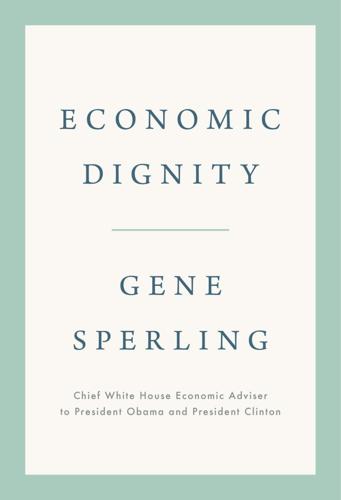
Economic Dignity
by
Gene Sperling
Published 14 Sep 2020
First published 1935 by Harcourt, Brace and Howe (New York). 8. Quoted in Ta-Nehisi Coates, “The First White President,” Atlantic, October 2017, https://www.theatlantic.com/magazine/archive/2017/10/the-first-white-president-ta-nehisi-coates/537909/. 9. Michelle Alexander, The New Jim Crow: Mass Incarceration in the Age of Colorblindness (New York: New Press, 2010), 34. 10. Dan Carter, “What Donald Trump Owes George Wallace,” New York Times, January 8, 2016, https://www.nytimes.com/2016/01/10/opinion/campaign-stops/what-donald-trump-owes-george-wallace.html. 11. Fareed Zakaria, “Populism on the March: Why the West Is in Trouble,” Foreign Affairs, November/December 2016, https://www.foreignaffairs.com/articles/united-states/2016-10-17/populism-march. 12.
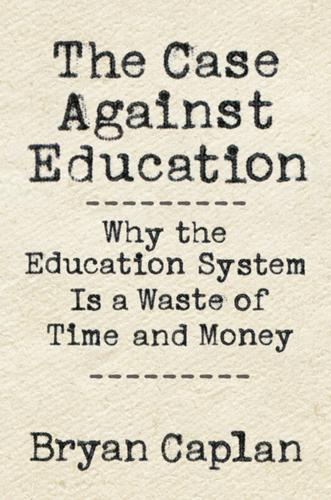
The Case Against Education: Why the Education System Is a Waste of Time and Money
by
Bryan Caplan
Published 16 Jan 2018
Signalling Explanations of Wages.” Journal of Economic Perspectives 9 (4): 133–54. Wendy’s Wizard of Oz. 2015. “The Wizard of Oz: Movie Script.” Accessed December 1, 2015. http://www.wendyswizardofoz.com/printablescript.htm. Western, Bruce, and Christopher Wildeman. 2009. “The Black Family and Mass Incarceration.” Annals of the American Academy of Political and Social Science 621 (1): 221–42. White, Jennifer, Terrie Moffitt, Avshalom Caspi, Dawn Bartusch, Douglas Needles, and Magda Stouthamer-Loeber. 1994. “Measuring Impulsivity and Examining Its Relationship to Delinquency.” Journal of Abnormal Psychology 103 (2): 192–205.

Evil Geniuses: The Unmaking of America: A Recent History
by
Kurt Andersen
Published 14 Sep 2020
After the scientific consensus definitively concludes a climate crisis is imminent, the petroleum industry and the political right begin aggressively downplaying and denying it, blocking government regulation to reduce CO2 emissions. * In 1982 I reported and wrote a Time cover story called “Inmate Nation” about what’s now called mass incarceration, because the number of U.S. inmates had just started to increase sharply and, to my editor and me, alarmingly—that year by 43,000 to 412,000. The total number of inmates today is 1.5 million, of whom 130,000 are in privately run prisons. The 99 percent of us who weren’t lawyers or judges or legal scholars or conservative activists in the 1980s had no clue that the law itself had become an important front in the war to remake the U.S. political economy.

Your Computer Is on Fire
by
Thomas S. Mullaney
,
Benjamin Peters
,
Mar Hicks
and
Kavita Philip
Published 9 Mar 2021
Their deployment in a host of social contexts where they are charged with predicting and reporting on human behavior raises important new questions about the degree to which we surrender aspects of our social organization to such devices. In the face of calls for abolition of the carceral state (prisons, jails, and surveillance systems like biometric monitors), robots are entering the marketplace of mass incarceration with much excitement and little trepidation. Indeed, the robotic prison guard is estimated to cost about $879,000, or 1 billion Korean won, apiece.24 Steep price tag notwithstanding, prison authorities are optimistic that, if effective, the robots will eventually result in a cutting of labor costs.
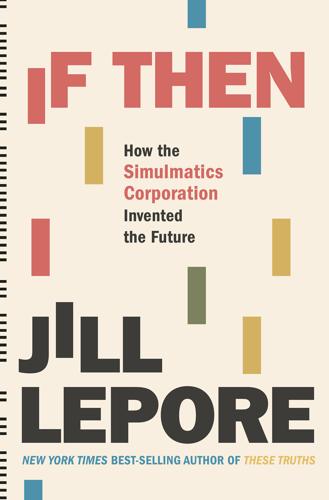
If Then: How Simulmatics Corporation Invented the Future
by
Jill Lepore
Published 14 Sep 2020
Claude Brown and Arthur Dunmey, “Harlem’s America,” New Leader, September 1966. For a brilliant reconstruction and discussion of the relationship between the war on poverty and the war on crime, including the emphasis on prediction in both efforts, see Elizabeth Hinton, From the War on Poverty to the War on Crime: The Making of Mass Incarceration in America (Cambridge, MA: Harvard University Press, 2017). Especially useful is ELG, “Statement to Stockholders, September 20, 1966,” in which Greenfield notes the growth of the company between 1965 and 1966 and explains, “The seeds of our future growth were already germinating in 1964.
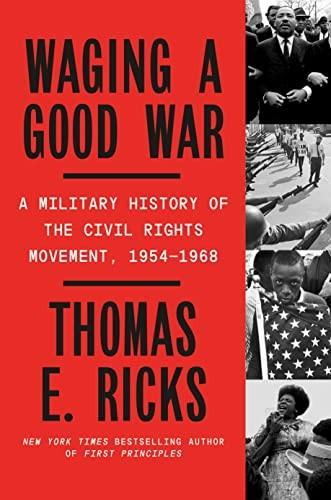
Waging a Good War: A Military History of the Civil Rights Movement, 1954-1968
by
Thomas E. Ricks
Published 3 Oct 2022
In this context, it is worth noting that critical race theory—the real school of thought, not the symbol attacked by the right—first evolved as a critique of mainstream Movement thinking on the value of integration. Amid these contending visions, a strong if embattled civil rights movement still exists, just in different forms. Its exponents are focused on a range of causes, including reparations for slavery and segregation and the ending of mass incarceration. Most notably, the Movement today addresses itself to two familiar causes made necessary by the endurance of systemic racism: preserving voting rights and ending oppressive police behavior. Protecting the vote The right to vote was the question in Selma, Alabama, in 1965, and, dismayingly, remains under attack today.
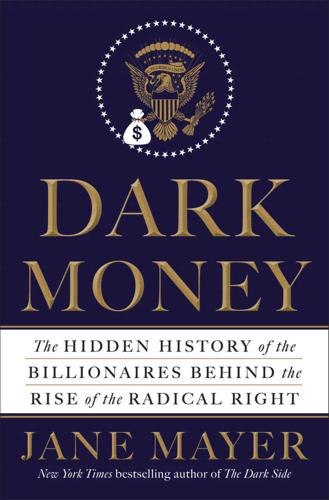
Dark Money: The Hidden History of the Billionaires Behind the Rise of the Radical Right
by
Jane Mayer
Published 19 Jan 2016
In 2013 alone, it produced some seventy bills aimed at impeding government support for alternative, renewable energy programs. Later the Kochs presented themselves as champions of criminal justice reform, but while they were active in ALEC, it was instrumental in pushing for the kinds of draconian prison sentences that helped spawn America’s mass incarceration crisis. For years among ALEC’s most active members was the for-profit prison industry. In 1995, for instance, ALEC began promoting mandatory-minimum sentences for drug offenses. Two years later, Charles Koch bailed ALEC out financially with a $430,000 loan. In 2009, the conservative movement in the states gained another dimension.
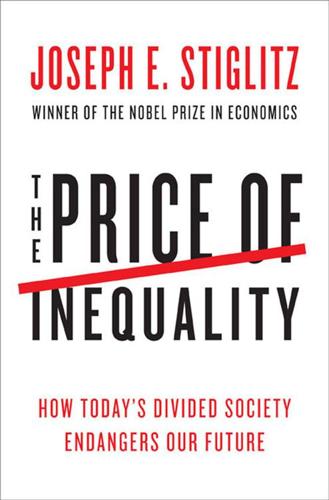
The Price of Inequality: How Today's Divided Society Endangers Our Future
by
Joseph E. Stiglitz
Published 10 Jun 2012
Lawless, “Race, Attorney Influence, and Bankruptcy Chapter Choice,” Journal of Empirical Legal Studies (forthcoming). 50. See D. Pager, “The Mark of a Criminal Record,” American Journal of Sociology 108, no. 5 (2003): 937–75; and Devah Pager, Marked: Race, Crime, and Finding Work in an Era of Mass Incarceration (Chicago: University of Chicago Press, 20007). 51. Center for Diseases and Control, “Deaths: Preliminary Data for 2009,” National Vital Statistics Reports 59, no. 4 (March 2011): 16. 52. In 2009 a typical Hispanic had wealth of only $6,325, while, as we noted in chapter 1, a typical white had $113,149.

The Alignment Problem: Machine Learning and Human Values
by
Brian Christian
Published 5 Oct 2020
A group of criminal justice scholars, led by Anthony Flores, published a “rejoinder” to the initial ProPublica report, not only defending COMPAS as a calibrated model (and calibration as the appropriate measure of fairness) but, furthermore, lamenting the damaging effects of the controversy itself.64 “We are at a unique time in history,” they write. “We are being presented with the chance of a generation, and perhaps a lifetime, to reform sentencing and unwind mass incarceration in a scientific way and that opportunity is slipping away because of misinformation and misunderstanding about [statistical risk-assessment models]. Poorly conducted research or misleading statements can lead to confusion and/or paralysis for those charged with making policy.” Tim Brennan shares much of this concern, and, of course, sharply disagrees with ProPublica’s characterization of COMPAS.

Beyond the Wall: East Germany, 1949-1990
by
Katja Hoyer
Published 5 Apr 2023
When Wolfgang Leonhard told Walter Ulbricht with youthful enthusiasm that spontaneous antifa groups had sprung up everywhere, his boss’s response bordered on hysteria. ‘We have to dissolve these units immediately!’ Ulbricht demanded. After all, he explained, there was no telling whether these cells contained secret Nazis who were masquerading as anti-fascists. The mass incarceration of political enemies in NKVD Special Camps (or Spezlags) would continue until they were finally dissolved in 1950. Initially introduced by NKVD Order 00315 on 18 April 1945 with the aim to ‘cleanse the hinterland of hostile elements while Red Army troops were fighting’, the remit of incarcerations was gradually widened.
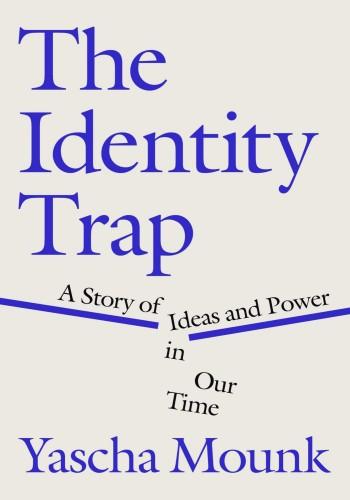
The Identity Trap: A Story of Ideas and Power in Our Time
by
Yascha Mounk
Published 26 Sep 2023
Neither now nor ever before has formally adopting a set of rules and values sufficed to ensure that everyone is actually treated in accordance with them. These shortcomings help to explain why, even in avowedly liberal societies, many members of historically marginalized communities continue to experience poverty and deprivation, discrimination and outright racism, police violence and mass incarceration. True liberals will face up to this state of affairs with an unflinching recognition of its injustice, growing all the more determined to build a fairer future. And yet liberals should reject the conclusion, so central to the identity synthesis, that these universal values and neutral rules are merely a smoke screen that helps to sustain the privileges of the oppressive majority.
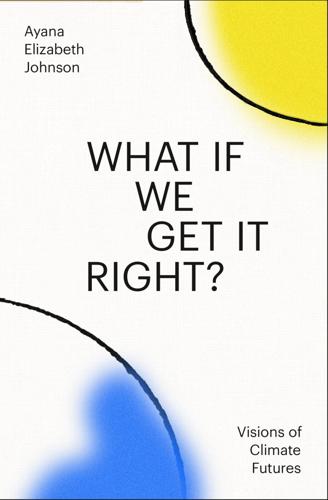
What If We Get It Right?: Visions of Climate Futures
by
Ayana Elizabeth Johnson
Published 17 Sep 2024
That is quite a strong view about the power of journalism. Why do you believe that magnitude of change would be the result? Kendra: Well, if you look at other aspects of journalism, you can see how powerful the effect can be. Look at the way we report on crime, for example. The way we report on crime is what gives us mass incarceration. Crime reporting is one of the worst forms of reporting on the planet, in my opinion, because it reinforces horrible misconceptions. Crime reporting maintains a culture of fear, and perpetuates the idea that crime is going up even when crime is flat or down. That, in turn, leads to more prisons and other overreactions.

The Gods of New York: Egotists, Idealists, Opportunists, and the Birth of the Modern City: 1986-1990
by
Jonathan Mahler
Published 11 Aug 2025
The Luckiest Guy in the World: My Journey in Politics. New York: Skyhorse Publishing, 2021. Adler, Jerry. High Rise: How 1,000 Men and Women Worked Around the Clock for Five Years and Lost $200 Million Building a Skyscraper. New York: HarperCollins, 1993. Alexander, Michelle. The New Jim Crow: Mass Incarceration in the Age of Colorblindness. New York: The New Press, 2010. Alexander, Shana. The Pizza Connection: Lawyers, Money, Drugs, Mafia. New York: Weidenfeld & Nicolson, 1988. Alexander, Shana. When She Was Bad: The Story of Bess, Hortense, Sukhreet and Nancy. New York: Random House, 1990.
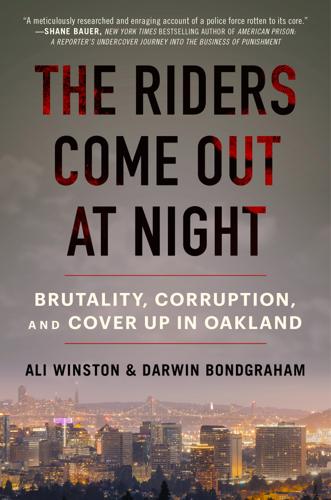
The Riders Come Out at Night: Brutality, Corruption, and Cover-Up in Oakland
by
Ali Winston
and
Darwin Bondgraham
Published 10 Jan 2023
“Playing Political Games Won’t End Oakland’s War on Poverty,” editorial, Oakland Tribune, March 31, 1970, 16. 43. Bob Distefano, “Oakland War on Poverty Agency Doomed; Months Required for Successor,” Oakland Tribune, April 13, 1971, 1. 44. Elizabeth Hinton, From the War on Poverty to the War on Crime: The Making of Mass Incarceration in America (Cambridge, MA: Harvard University Press, 2016), 134–79. 45. Ward Churchill and Jim Vander Wall, The COINTELPRO Papers: Documents from the FBI’s Secret Wars Against Dissent in the United States (Cambridge, MA: South End Press, 1990), 129, 363. 46. “Oakland Officer Explains Demonstration Control,” Salinas Californian, June 17, 1965, 12; “Reagan Study Group Recommends Establishment of Fifth ‘Super-Agency’ for Public Safety Units,” Sacramento (CA) Bee, June 1, 1973, B-3. 47.

Britain at Bay: The Epic Story of the Second World War: 1938-1941
by
Alan Allport
Published 2 Sep 2020
The Home Secretary’s reassurance that such courts would only operate with the greatest restraint was condemned as feeble by the barrister and Liberal MP Frank Kingsley Griffith: ‘it is all very well for anybody to come before this House and say, “I have a Bill which entitles me to cut off your head, but I can assure you that I am only going to cut your toe nails.”’82 In the end, the government retreated and promised that all War Court sentences would be subject to appeal. They were, in the end, never used anyway.83 The Home Office received enough popular pushback against both Regulation 39BA and the War Zone courts for it to moderate its plans on the grounds of civil liberty. There was much less public concern provoked by the mass incarceration without trial of British citizens, which began on the morning of 23 May with the arrest of Sir Oswald Mosley, leader of the British Union of Fascists (BUF).84 Under Defence Regulation 18B, the Home Secretary could detain indefinitely anyone of ‘hostile origin or associations’ or who had recently committed ‘acts prejudicial to the public safety’.
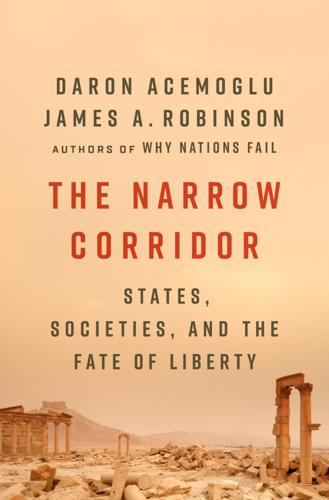
The Narrow Corridor: States, Societies, and the Fate of Liberty
by
Daron Acemoglu
and
James A. Robinson
Published 23 Sep 2019
“Hierarchy and Community in the Elizabethan Parish: The Swallowfield Articles of 1596.” The Historical Journal 42, no. 3: 835–51. ——— (2000). The State and Social Change in Early Modern England, 1550–1640. New York: Palgrave Macmillan. Hinton, Elizabeth (2016). From the War on Poverty to the War on Crime: The Making of Mass Incarceration in America. Cambridge, MA: Harvard University Press. Hintze, Otto (1975). Historical Essays of Otto Hintze. Edited by F. Gilbert. New York: Oxford University Press. Hirst, John B. (2009). The Shortest History of Europe. Melbourne: Black, Inc. Ho, Ping-ti (1954). “The Salt Merchants of Yang-Chou: A Study of Commercial Capitalism in Eighteenth-Century China.”

Enlightenment Now: The Case for Reason, Science, Humanism, and Progress
by
Steven Pinker
Published 13 Feb 2018
(Osama bin Laden, for example, owned a book by Noam Chomsky.)107 The history of moral progress, recounted in books such as The Honor Code by the philosopher Kwame Anthony Appiah, suggests that moral clarity in one culture about a regressive practice by another does not always provoke resentful backlash but can shame the laggards into overdue reform. (Past examples include slavery, dueling, foot-binding, and racial segregation; future ones targeting the United States may include capital punishment and mass incarceration.)108 An intellectual culture that steadfastly defended Enlightenment values and that did not indulge religion when it clashed with humanistic values could serve as a beacon for students, intellectuals, and open-minded people in the rest of the world. * * * After laying out the logic of humanism, I noted that it stood in stark contrast to two other systems of belief.

The Rise and Fall of American Growth: The U.S. Standard of Living Since the Civil War (The Princeton Economic History of the Western World)
by
Robert J. Gordon
Published 12 Jan 2016
“Two Tales of a City: John Walson, Sr., Mahanoy City, and the ‘Founding’ of Cable TV,” Journal of Broadcasting & Electronic Media 40, no. 3: 354–65. Patton, Phil. (1995). “How the Internet Began,” Popular Science, June, p. 85. “People & Events: Selma March” (2000). PBS Online. www.pbs.org/wgbh/amex/wallace/peopleevents/pande08.html. Pettit, Becky. (2012). Invisible Men: Mass Incarceration and the Myth of Black Progress. New York: Russell Sage Foundation. Pew Research Center. (2013). “Home Internet Access.” http://www.pewresearch.org/data-trend/media-and-technology/internet-penetration/. Pew Research Internet Project. (2014). “Mobile Technology Fact Sheet,” Pew Research Internet Project. www.pewinternet.org/fact-sheets/mobile-technology-fact-sheet/.
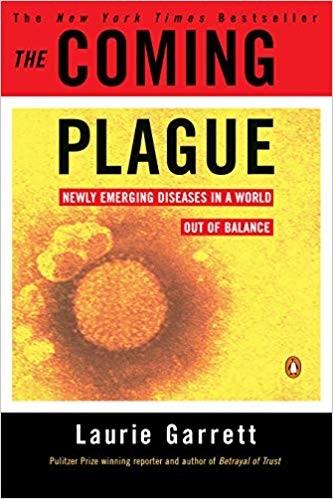
The Coming Plague: Newly Emerging Diseases in a World Out of Balance
by
Laurie Garrett
Published 31 Oct 1994
Thus, what may have begun as isolated cases of MDR-TB among handfuls of scattered recalcitrant tuberculosis patients—men and women like Vernon—was amplified inside the city’s jails into a full-scale epidemic.165 The social revolutions that would be necessary to reverse years of heroin and cocaine infiltration into the very fabric of the lives of hundreds of thousands of Americans staggered the imagination, as did the scale of what would be required to properly house all the homeless, employ the jobless, end the cycle of mass incarcerations, and stem all the other social tides that doomed most of America’s urban poor to lives of tremendous microbial vulnerability. The public health community, overwhelmed by the social dimensions of the crisis, turned to Science and beseeched researchers to find simpler solutions in their laboratories.
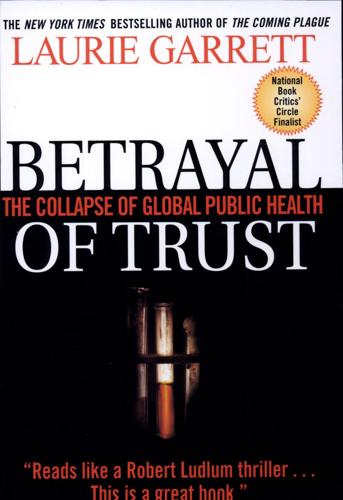
Betrayal of Trust: The Collapse of Global Public Health
by
Laurie Garrett
Published 15 Feb 2000
In cocaine shooting galleries users frequently shared syringes with resultant spread of HIV.521 And perhaps most significantly, the War on Drugs put up to a quarter of the nation’s African-American young men in jails and prisons where, whether they liked it or not, they were behaviorally “homosexual.” Sodomy and rape were commonplace in prisons and jails. Once released, most of these young men returned to heterosexual life, often to a waiting wife or girlfriend. The mass incarceration of black men and Latinos created a unique HIV amplification system: it spread through forced homosexual activity in a prison or jail setting where condoms had officially been declared illegal. As the black male population cycled in and out of this prison milieu, HIV soared among African-Americans.

The Better Angels of Our Nature: Why Violence Has Declined
by
Steven Pinker
Published 24 Sep 2012
For another, Canada did not go on an imprisonment binge, but its violence rate went down too. These facts don’t disprove the theory that imprisonment mattered, but they force it to make additional assumptions, such as that the effect of imprisonment builds up over time, reaches a critical mass, and spills over national borders. Mass incarceration, even if it does lower violence, introduces problems of its own. Once the most violent individuals have been locked up, imprisoning more of them rapidly reaches a point of diminishing returns, because each additional prisoner become less and less dangerous, and pulling them off the streets makes a smaller and smaller dent in the violence rate.162 Also, since people tend to get less violent as they get older, keeping men in prison beyond a certain point does little to reduce crime.